Inbox and Environment news: Issue 486
March 7 - 13, 2021: Issue 486
Wanted: Sydney's Precious Woody Elders
- A home - birds, bats, frogs, possums and gliders and reptiles will live in and on these stags
- A nursery - the hollow cavities in particular provide a place for some of our favourite creatures like owls and parrots (including some Threatened species) to lay eggs and raise young
- A snack - invertebrates, fungi, mosses and lichen will feed upon decaying wood, and so in turn provide food for our wildlife
- A safe lookout - stags often give unique vantage points for wildlife, especially raptors to look for prey
- are in Sydney
- are at least 85 to 95 cm around at chest height
- have at least one hollow/cavity of 40cm or larger at the entrance
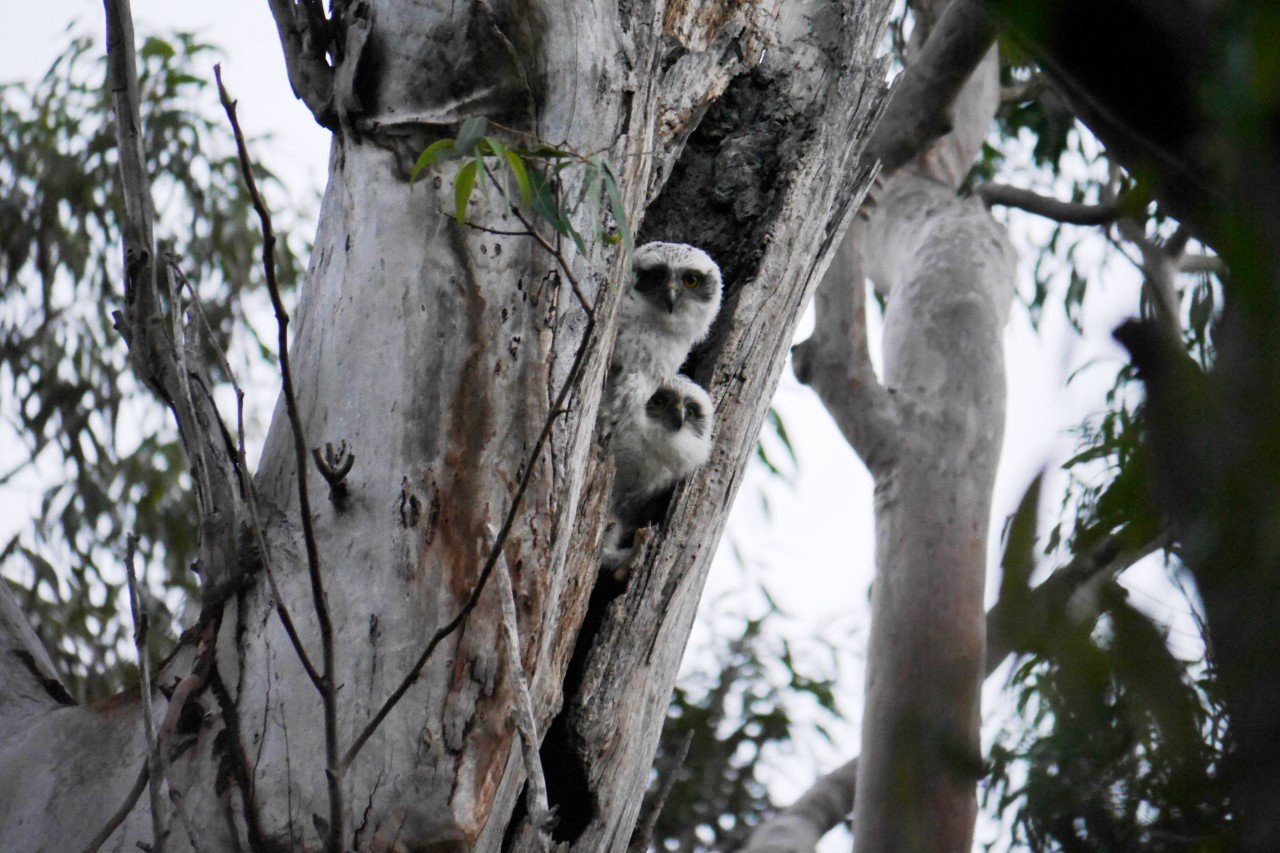
The Coast On Radio Northern Beaches - Every Friday With Wendy Frew
- Episode 6, Season 2: Starry, Starry Night by "The Coast" - Wendy Frew
- Episode 5, Season 2: Finding Nemo by "The Coast" - Wendy Frew
- Episode 3, Season 2: Giants of the Sea by "The Coast" - Wendy Frew
- Episode 2, Season 2: Birds of a Feather by "The Coast" - Wendy Frew
- Episode 1, Season 2: An Everyday dose of nature by "The Coast" - Wendy Frew
The Coast
Radio Northern Beaches
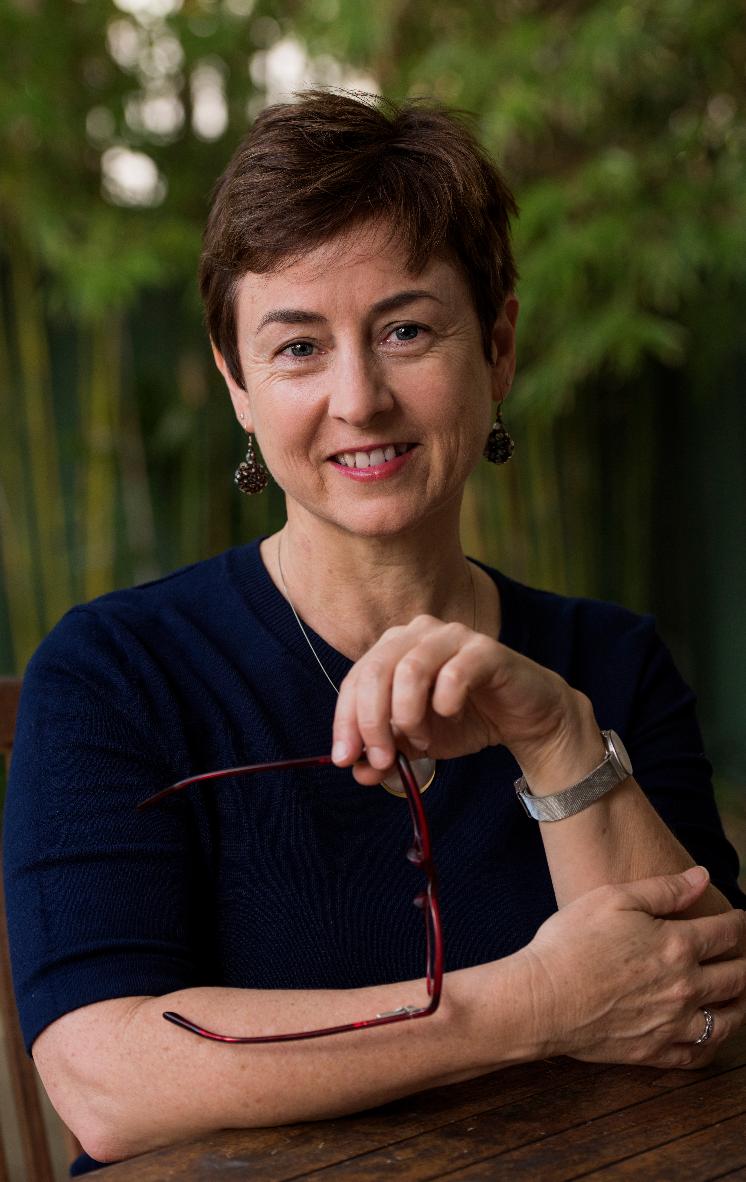
ORRCA Autumn News: Victoria To Implement Ban On Plastic + Whales Are On The Move - Already!
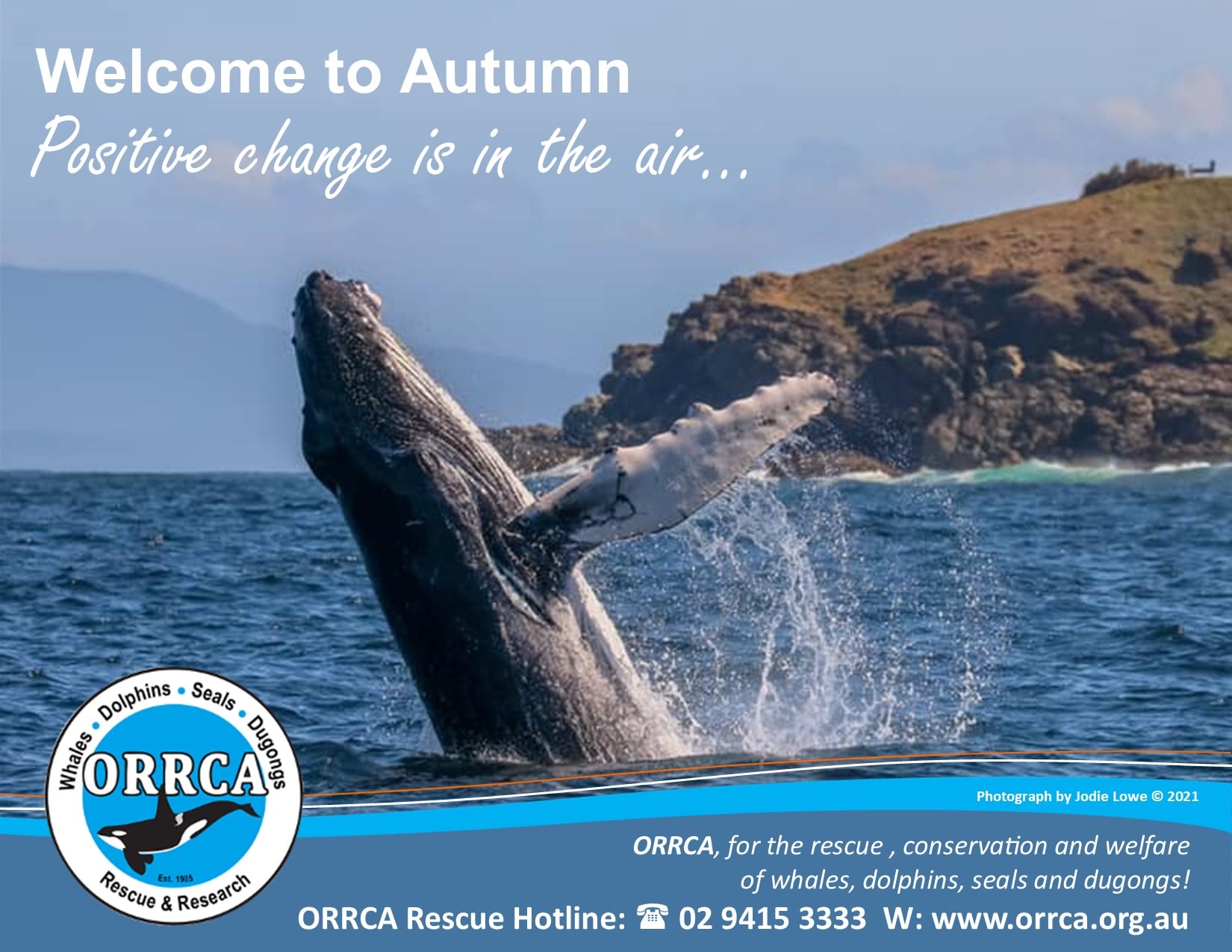
BirdLife Australia Autumn Survey Time
- Breeding behaviours - If you see a bird carrying nesting materials, sitting on a nest or feeding chicks, let us know. Select the option under 'Breeding Activity' that best matches your observation (remember to keep your distance though from birds who are breeding. We don't want to disturb any nests. Be sure to limit your observations and don't get close enough to scare a bird off it's nest.)
- Aggressive interactions – Let us know if you have observed any species initiate interactions with other birds and whether this interaction could be classed as aggressive – you can do this in the sighting details tab using the specific species interactions option.
- Have you seen any birds feeding on the native plants in your garden? If so – who was dining on what? – you can tell us in the notes section when you record the species you have observed under “sighting details”
- Have any birds been dabbling in some Oscar-worthy acting? – tell us about the weird and wonderful things your backyard birds have been up to you using the notes section in the sighting details tabs.
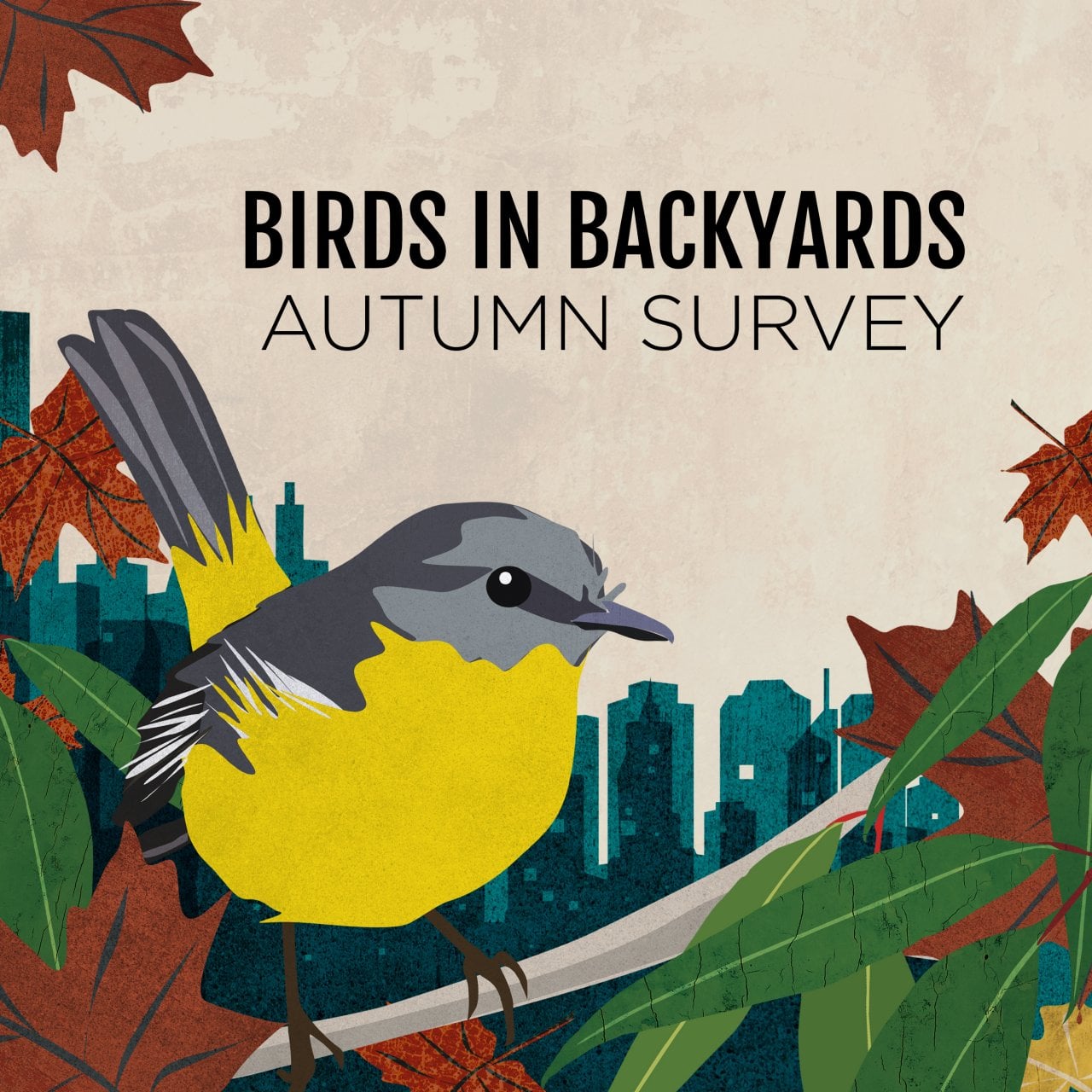
Narrabeen Lagoon Clean Up: March 28
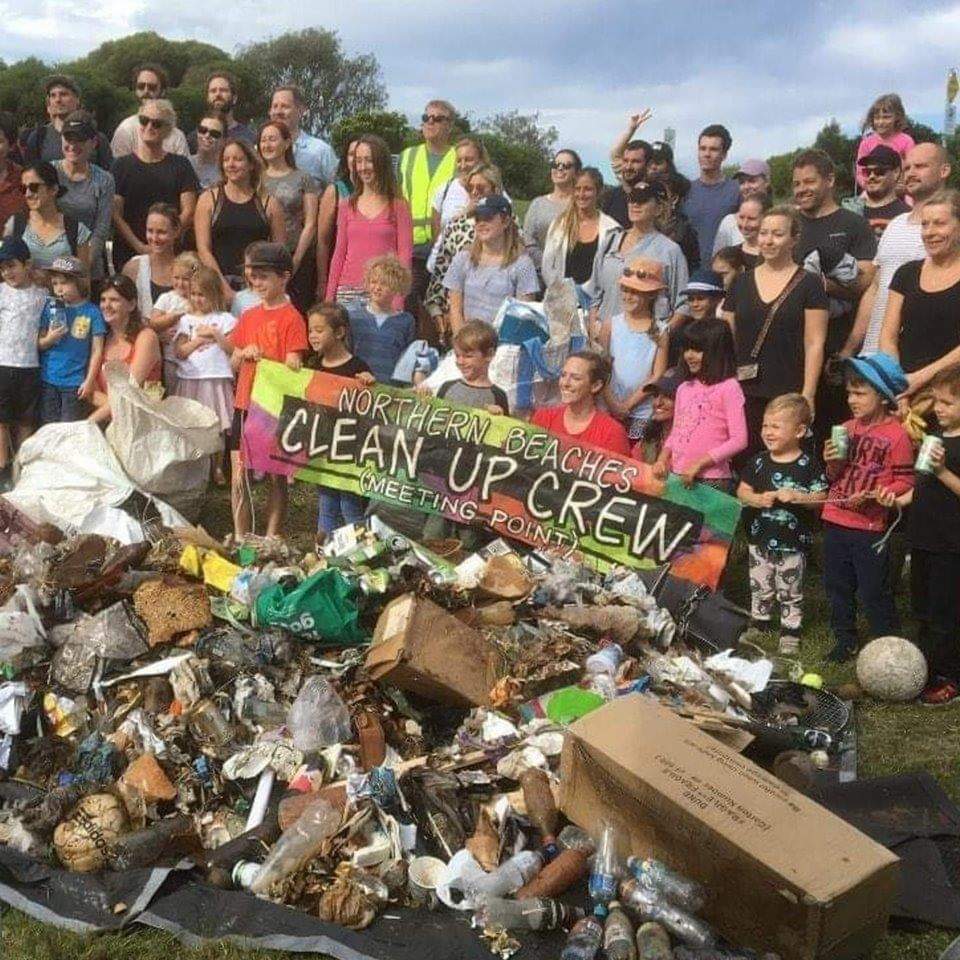
Weed Of The Week: Cassia - Please Pull Out And Save Our Bush
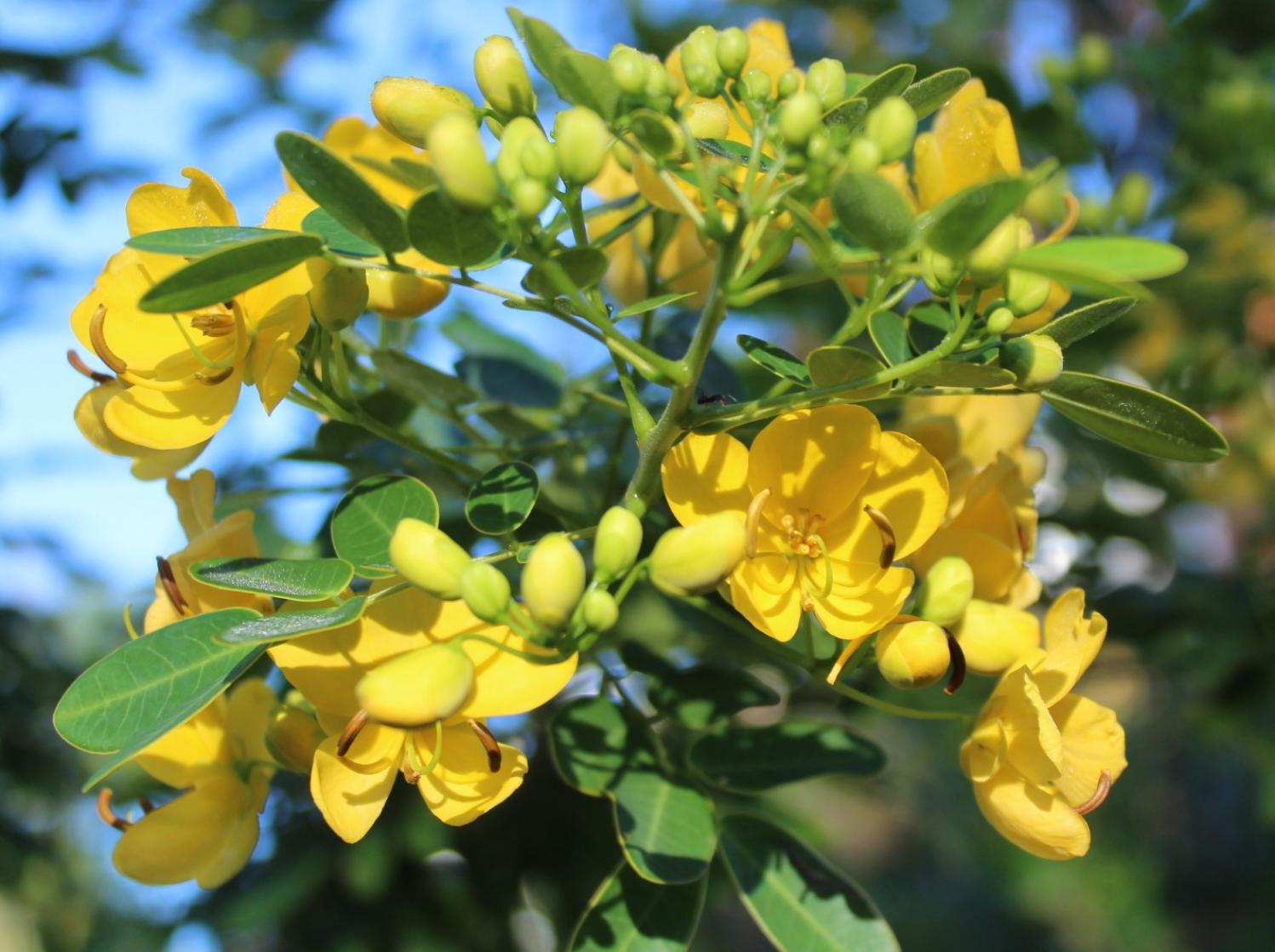
Pink Flush Across Blue Mountains
Pink flannel flowers (Actinotus forsythii) only bloom a year or so after a bushfire.
They're known as bushfire ephemerals because their seeds lay dormant for years on end without any reports. Until the right mix of fire and rain bring them back to life.
Take these flowers' recent appearance in the Blue Mountains. The 2019-20 fire season damaged 80% of the area. But rainfall in the region then enabled these flowers to bloom.
Photos taken at State Mine Gully Rd, Lithgow - by and courtesy Kerry Smith
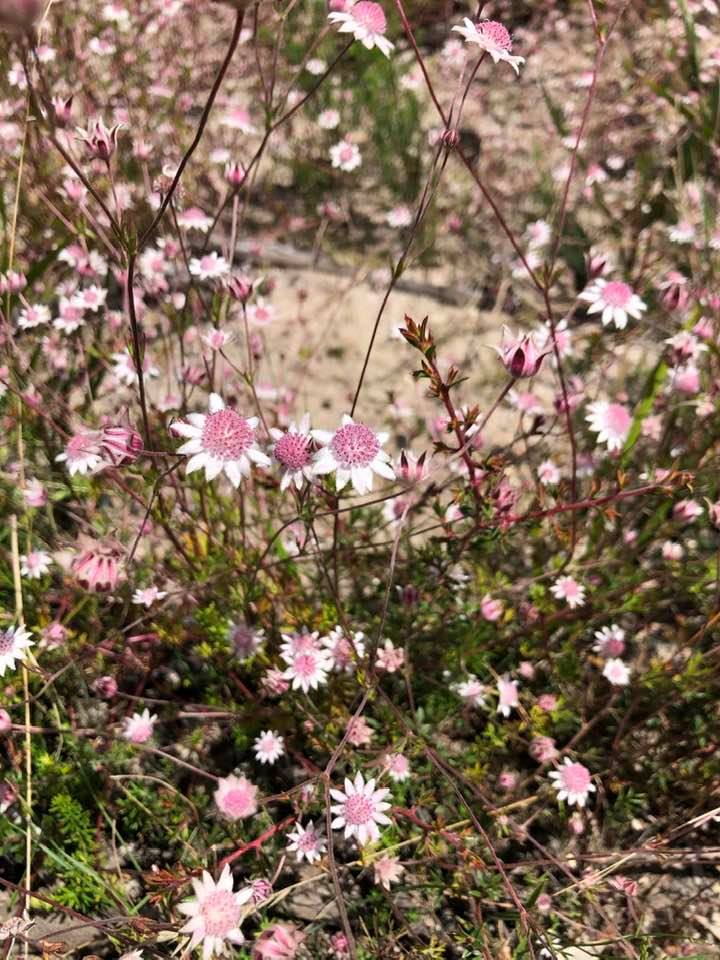
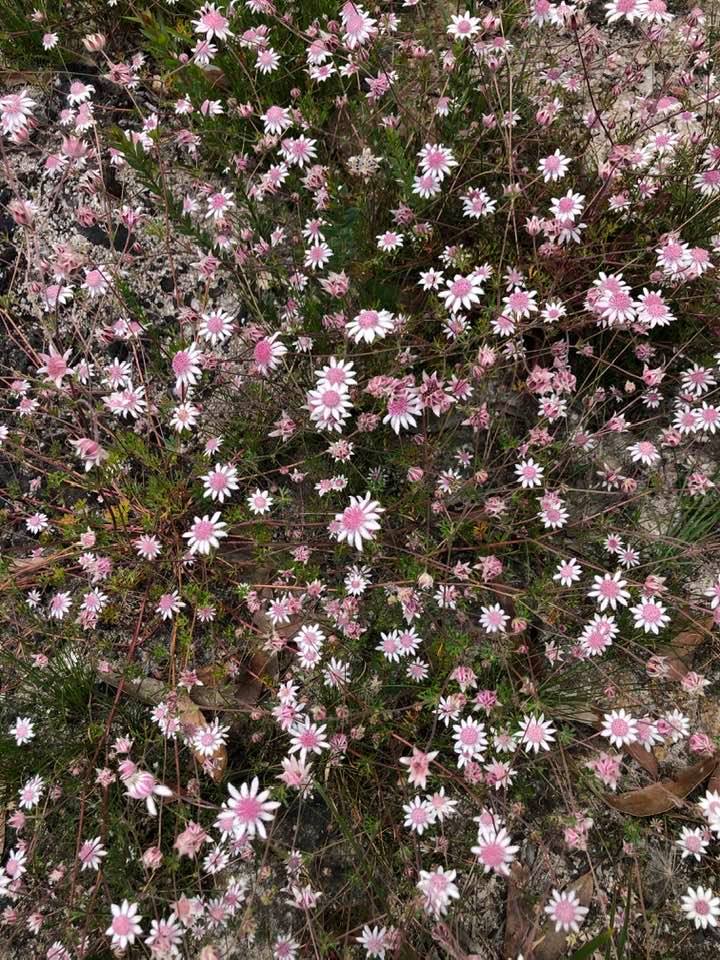
Invasive Turtles Terrorising Sydney's Wildlife Tracked Down By Scent Detector Dogs
March 5, 2021
Scent detector dogs who ‘nose out’ invasive pests have swarmed Sydney’s parklands as the NSW Government unleashed a specially-trained squad in a calculated raid to eradicate an alien turtle species from our waterways and wetlands.
Minister for Agriculture Adam Marshall said they might look harmless, but the red-eared slider turtles were introduced from North and Central America and posed a serious biosecurity threat, preying on native turtle species.
“Red-eared slider turtles are one of the world’s worst invasive alien species,” Mr Marshall said.
“These turtles are an extremely serious introduced biosecurity threat, and we need to extinguish them from our water-ways.
“Our highly trained scent detector dogs have the ability to nose out traces of these invaders above and below the water. While experts in camouflage, the red-eared slider turtles have nowhere to hide.
“These invasive turtles came from the United States and Mexico, and they prey on our native species, fish and frogs, compete for food, nesting areas and basking sites, and can even spread infectious salmonella bacteria to people, pets and other animals.
“We have already removed hundreds of red-eared slider turtles from Sydney waterways and the hands of illegal keepers, but this is just the start.”
The NSW Department of Primary Industries (DPI) collaborated with Greater Sydney Local Land Services, Centennial Parklands Trust, local councils and University of Canberra to develop a new range of tracking and trapping devices being trialled.
Mr Marshall said keeping red-eared slider turtles as pets was prohibited and they were an issue on the black market.
“These alien species have been smuggled into, illegally kept and illegally released in Australia which have been found across the Sydney basin, from Camden north to Woy Woy and west to Windsor,” Mr Marshall said.
“They are often illegally purchased when they are very small and attractive, but grow rapidly into large adults capable of biting their owners.
“Red-eared slider turtles might appear to be an ideal pet when small, but they are vicious. If you see one, or you have inadvertently purchased one - or have one that you no longer wish to keep – contact us immediately so we can safely remove them.”
Members of the community are advised to be on the lookout for unusual non-native animals, including turtles, snakes, lizards and other reptiles, mammals, birds and amphibians.
If you see a red-eared slider turtle or any other illegal invasive animals, please contact NSW DPI on 1800 680 244 or take a photograph and post the details on NSW DPI’s unusual animal form.
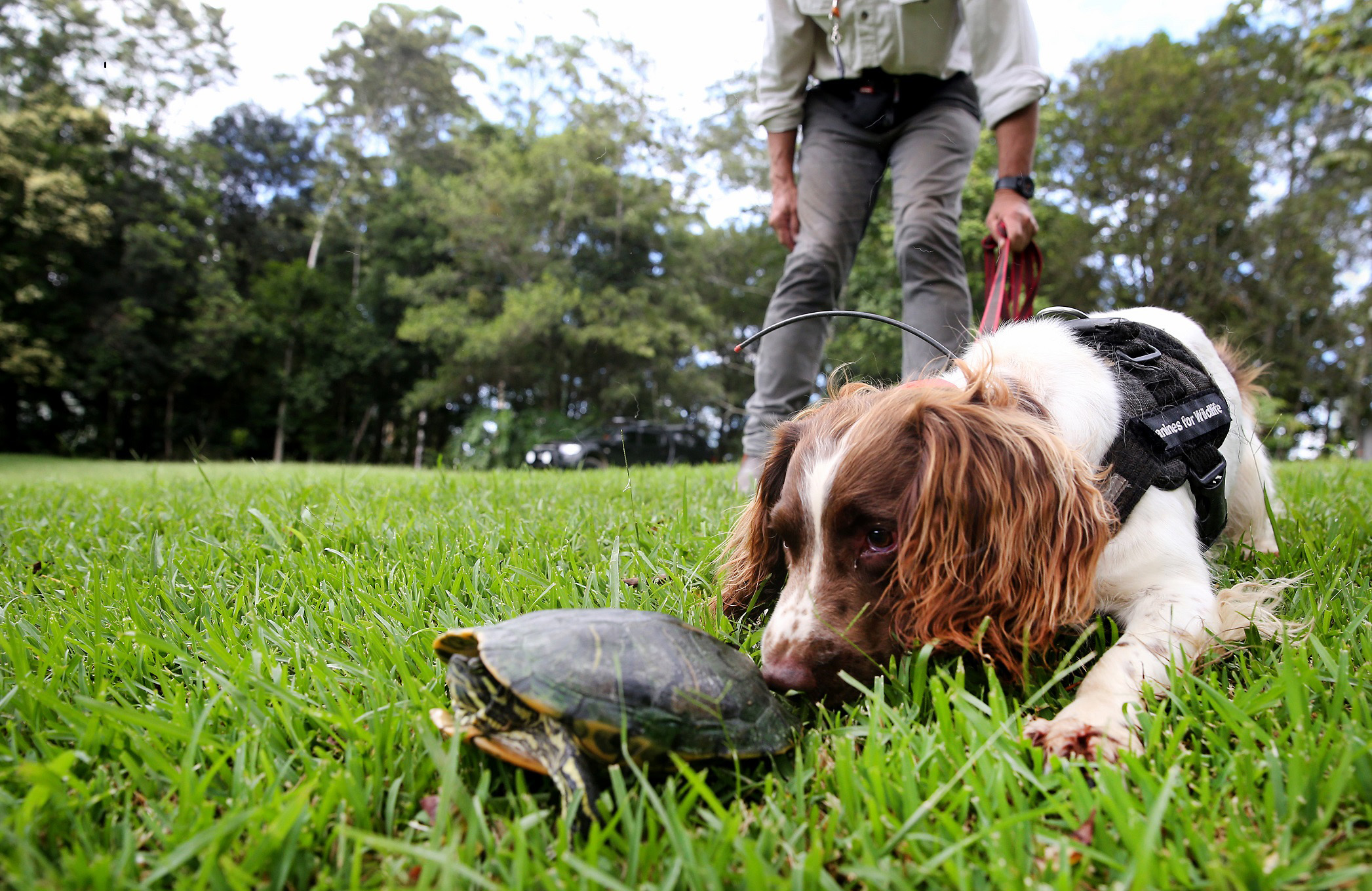
Image: “Bunya” and his handler, Bradley, tracking down a red-eared slider turtle. NSW DPI photo.
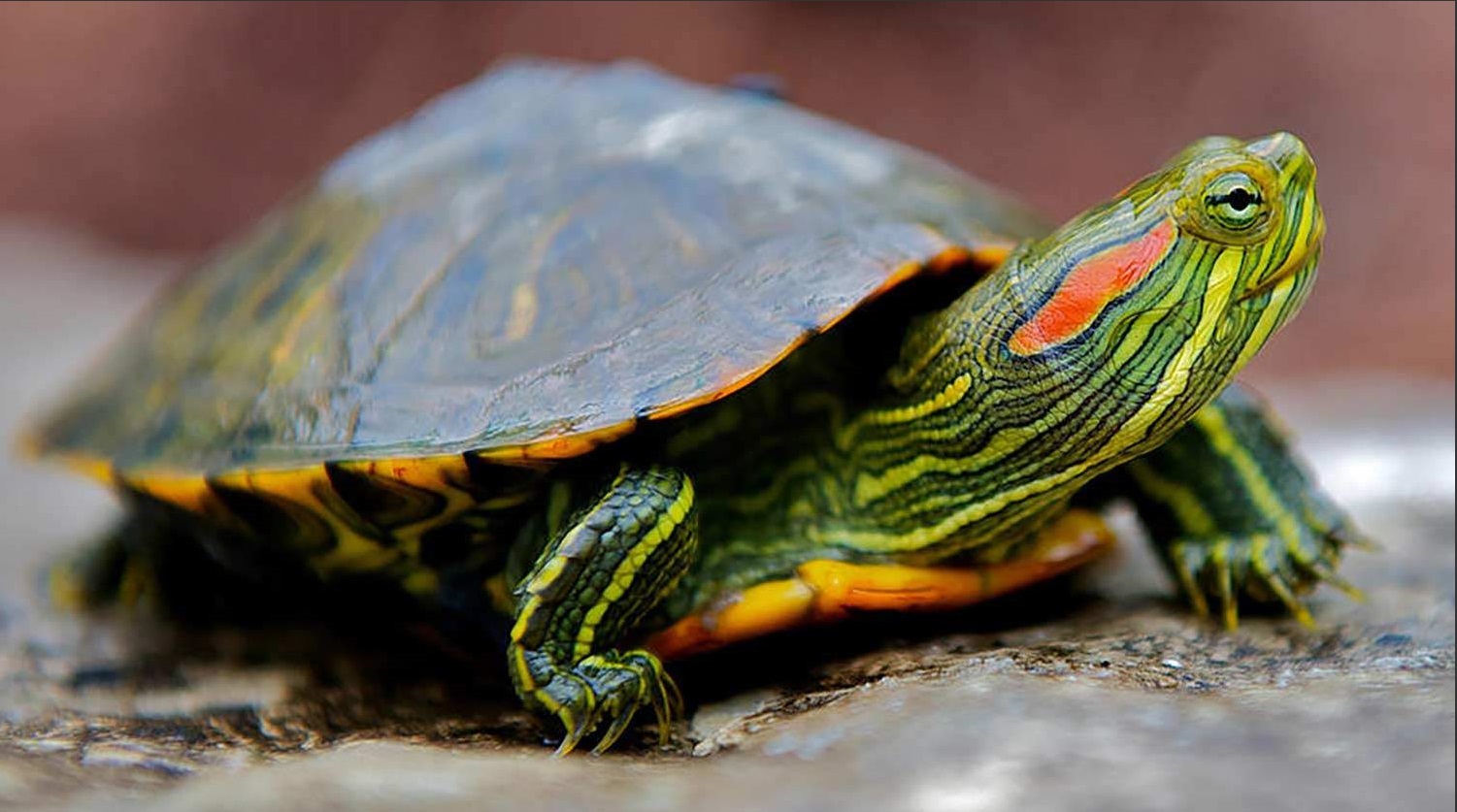
Red-eared slider Turtle. NSW DPI photo.
Orange-Bellied Parrot Breeding Success
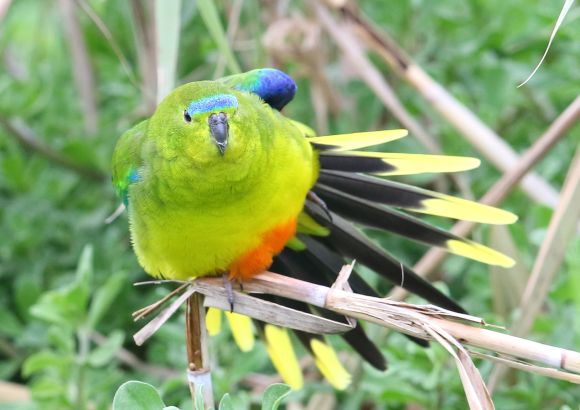 With such a small population, the Orange-bellied Parrot is often the subject of gloomy news, but thanks to the success of recent conservation efforts, there are now some good tidings for this Critically Endangered species.
With such a small population, the Orange-bellied Parrot is often the subject of gloomy news, but thanks to the success of recent conservation efforts, there are now some good tidings for this Critically Endangered species.Design And Place State Environmental Planning Policy (SEPP): Open For Feedback Until March 31
'The Design and Place SEPP puts place and design quality at the forefront of development. Our shared responsibility to care for Country and sustain healthy, thriving communities underpins the policy. The SEPP spans places of all scales, from precincts, significant developments, and buildings to infrastructure and public space. ''The public exhibition will allow us to work closely with state government, local councils, industry peak bodies and communities. This process will inform the development of the Design and Place SEPP and safeguard our shared values for future development in NSW. We will draft the policy in 2021, following the review of the formal submissions and feedback. Submissions are open from now until 31 March 2021. 'The final Design and Place SEPP will go on public exhibition later in 2021 to provide more opportunities for feedback. We will also develop supporting guidance and tools alongside the policy. These include a revision to the Apartment Design Guide, improvements to the Building Sustainability Index (BASIX) tool and the development of a new Public Space and Urban Design Guide. '
Worth Noting: Australian Car Sales Statistics 2020
- There were 1,062,867 new vehicles sold in Australia 2019
- New car sales in Australia dropped 8% down from 2018, making it the lowest since 2011
- Toyota was the top-selling car brand in 2019, with 205,766 total sales
- SUVs accounted for 45.5% of new car sales in 2019
NSW Department Of Planning Projects On Exhibition: Open For Comment
- your name and address, at the top of the letter only;
- the name of the application and the application number;
- a statement on whether you ‘support’, ‘object’ to the proposal or are only making a comment;
- the reasons why you support or object to the proposal; and
- a declaration of any reportable political donations you made in the previous two years.
- > A new 500/330 kilovolt (kV) substation located within Bago State Forest and adjacent to TransGrid’s existing Transmission Line 64 (Line 64)
- > Two 330 kV double-circuit overhead transmission lines, approximately nine kilometres long, linking the Snowy 2.0 cable yard in Kosciuszko National Park (KNP) to the new substation
- > An overhead transmission line connection between the substation and Line 64
- > Construction of new access tracks and upgrade of existing access tracks where required to facilitate the construction of the transmission lines and substation and service ongoing maintenance activities
- > Establishment of temporary sites and infrastructure needed during construction including crane pads, site compounds, a helipad, equipment laydown areas, and tensioning and pulling sites for the stringing of overhead conductors and earthwires.
- increased open cut coal extraction within the approved Mount Pleasant Project (EPBC 2011/5795) development area, including accessing deeper coal reserves in North Pit;
- staged increase in the extraction, handling and processing of ROM coal up to 21 Mtpa (i.e. progressive increase in ROM
- coal mining rate from 10.5 Mtpa over the Project life); and
- continued use of the controlled release dam and associated infrastructure that was approved through Bengalla Mine State and Federal approvals.
- Under the proposed Action, mining operations at the higher production rate would extend to 22 December 2048
Forestry Corporation Fined $33K For Failing To Keep Records: Endangering Swift Parrots
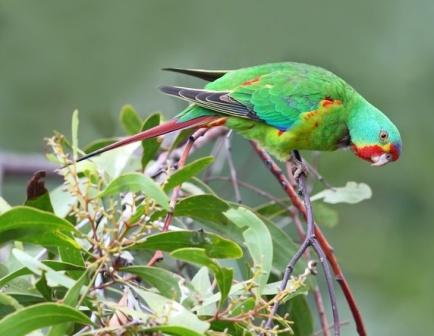 The NSW Environment Protection Authority (EPA) has issued Forestry Corporation of NSW (FCNSW) with two penalty notices for allegedly not including the critically endangered Swift Parrot records in planning for operations, and has also delivered three official cautions for an alleged failure by FCNSW to mark-up eucalypt feed trees, an essential source of food for the birds, prior to harvesting.
The NSW Environment Protection Authority (EPA) has issued Forestry Corporation of NSW (FCNSW) with two penalty notices for allegedly not including the critically endangered Swift Parrot records in planning for operations, and has also delivered three official cautions for an alleged failure by FCNSW to mark-up eucalypt feed trees, an essential source of food for the birds, prior to harvesting.Forestry Corporation Fined For Failing To Mark Out A Prohibited Logging Zone
Bushcare In Pittwater
Where we work Which day What time
Avalon
Angophora Reserve 3rd Sunday 8:30 - 11:30am
Avalon Dunes 1st Sunday 8:30 - 11:30am
Avalon Golf Course 2nd Wednesday 3 - 5:30pm
Careel Creek 4th Saturday 8:30 - 11:30am
Toongari Reserve 3rd Saturday 9 - 12noon (8 - 11am in summer)
Bangalley Headland 2nd Sunday 9 to 12noon
Bayview
Winnererremy Bay 4th Sunday 9 to 12noon
Bilgola
North Bilgola Beach 3rd Monday 9 - 12noon
Algona Reserve 1st Saturday 9 - 12noon
Plateau Park 1st Friday 8:30 - 11:30am
Church Point
Browns Bay Reserve 1st Tuesday 9 - 12noon
McCarrs Creek Reserve Contact Bushcare Officer To be confirmed
Clareville
Old Wharf Reserve 3rd Saturday 8 - 11am
Elanora
Kundibah Reserve 4th Sunday 8:30 - 11:30am
 Mona Vale
Mona Vale Mona Vale Beach Basin 1st Saturday 8 - 11am
Mona Vale Dunes 2nd Saturday +3rd Thursday 8:30 - 11:30am
Newport
Bungan Beach 4th Sunday 9 - 12noon
Crescent Reserve 3rd Sunday 9 - 12noon
North Newport Beach 4th Saturday 8:30 - 11:30am
Porter Reserve 2nd Saturday 8 - 11am
North Narrabeen
Irrawong Reserve 2nd Saturday 2 - 5pm
Palm Beach
North Palm Beach Dunes 3rd Saturday 9 - 12noon
Scotland Island
Catherine Park 2nd Sunday 10 - 12:30pm
Elizabeth Park 1st Saturday 9 - 12noon
Pathilda Reserve 3rd Saturday 9 - 12noon
Warriewood
Warriewood Wetlands 1st Sunday 8:30 - 11:30am
Whale Beach
Norma Park 1st Friday 9 - 12noon
Western Foreshores
Coopers Point, Elvina Bay 2nd Sunday 10 - 1pm
Rocky Point, Elvina Bay 1st Monday 9 - 12noon
Gardens And Environment Groups And Organisations In Pittwater
Pittwater Reserves

Endangered Turtles Troop Back To Bellinger River
March 3, 2021
Over 30 critically endangered Bellinger River snapping turtles, bred at Taronga Zoo, have been returned to their Bellinger River habitat and appear to be well after recent floods.
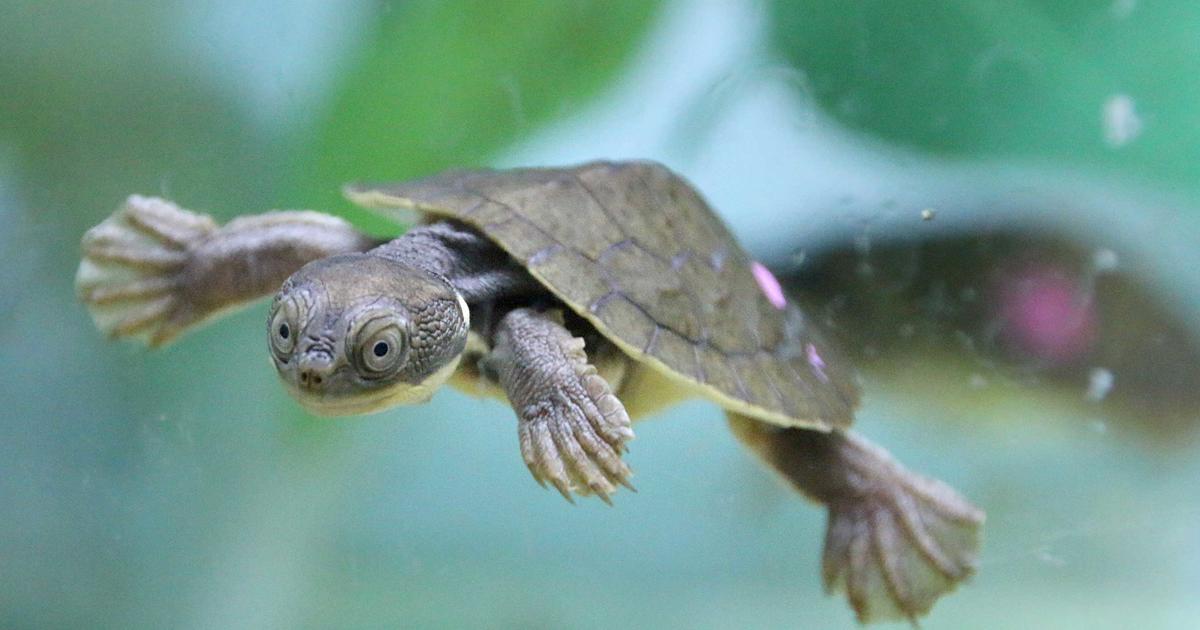
Back to the wild for a rare Bellinger River snapping turtle (Myuchelys georgesi) - Photo courtesy Taronga Zoo
It is the only place in the world where they are found but in 2015 a devastating virus wiped out 90% of the turtles in just six weeks.
After a breeding program was rapidly developed, this release further boosts the population after earlier releases in 2018 and 2019, bringing the total number of turtles now released to 52.
Gerry McGilvray, a Department of Planning Industry and the Environment (DPIE) Threatened Species Officer, said after the Bellinger River Virus hit, a partnership led by the Saving our Species (SoS) program established a captive breeding program to ensure the species’ survival.
Gerry said: “This 3rd release of turtles since 2018 is excellent news for these animals, which are unique to the Bellinger River catchment and were declared Critically Endangered after the virus.”
Soon after the turtles were released, the Bellingen area and other parts of the north coast experienced heavy rain and flash flooding but threatened species experts and monitoring the released turtles have confirmed the turtles are safe.
Taronga Zoo staff used their expert skills to establish an insurance population to breed animals for the releases, with over 100 turtles now at the zoo’s quarantine facility. A second insurance population has also been developed at Symbio Wildlife Park.
Taronga Zoo Chief Executive and Director, Cameron Kerr, said that the release was a humbling moment following years of hard work and dedication by zoo staff.
“Bellinger River snapping turtles are considered one of Australia’s most critically endangered animals, and I am incredibly proud of the work of our dedicated keepers and scientists that has led to the release of these healthy individuals into the wild,” Mr Kerr said.
Radio transmitters attached to the turtles help locate them for regular monitoring by SoS Threatened Species Officers who also capture the turtles intermittently to measure growth rates, determine body condition, assess general health and look for signs of exposure to the virus.
The Bellinger River snapping turtle is a short-necked freshwater turtle in the family Chelidae first observed by John Cann in 1971.
The release was approved by the DPIE and Environment Animal Ethics Committee and was guided by reptile and translocation experts, wildlife disease experts and zoo professionals.
Major partners include Symbio Wildlife Park, Department of Primary Industries, Bellinger Landcare, OzGREEN, local community members and researchers.
PFAS Firefighting Foam Banned In NSW
- banning the use of any PFAS firefighting foam for training and demonstration purposes from April 2021;
- restricting the use of long-chain PFAS firefighting foam from September 2022; and,
- restricting the use and sale of PFAS firefighting foam in portable fire extinguishers from September 2022.
NSW lifts ban on Genetically Modified crops

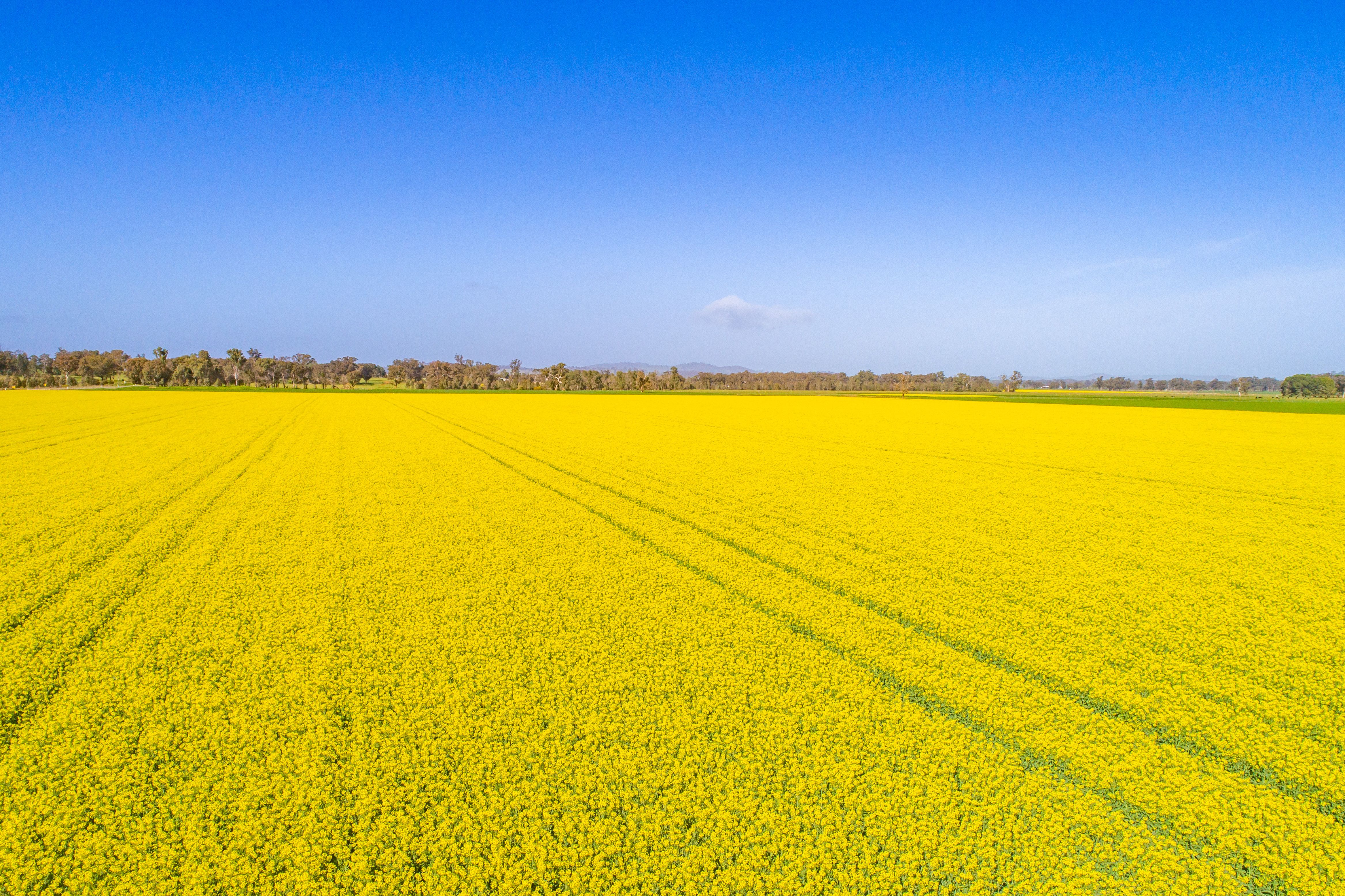
Crab Population To Improve With Recreational Size Limit Changes
March 3rd, 2021
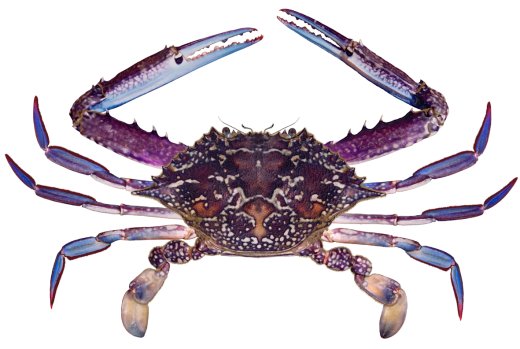 NSW Department of Primary Industries (DPI) Fisheries has announced changes to recreational Blue Swimmer Crab size limits set to come into effect from 30 April 2021.
NSW Department of Primary Industries (DPI) Fisheries has announced changes to recreational Blue Swimmer Crab size limits set to come into effect from 30 April 2021.
The NSW Department of Primary Industries Deputy Director General Fisheries Sean Sloan said these changes will result in an overall improvement in the abundance of crabs.
“The small increase in the size limit for blue swimmer crabs from 6.0cm to 6.5cm will assist total egg production by protecting spawning crabs and improve the productivity of the stock over time,” Mr Sloan said.
“It will also provide consistency between the recreational and commercial fishing sectors and provide an overall improvement in the abundance of crabs.
“The changes will come into effect on 30 April this year so we wanted to give fishers as much notice as possible.
“NSW Fisheries will be out in the community over the coming weeks to speak to fishers to make sure they are aware of the changes and answer any questions they may have."
Mr Sloan said these changes have been implemented following consultation with and support from the NSW Recreational Fishing Advisory Council.
“These changes are being implemented following consultation with and support from the NSW Recreational Fishing Advisory Council who do a fantastic job representing the interest of fishers,” Mr Sloan said.
“The recreational fishing industry is worth $3.4 billion in economic activity every year so it’s critical we all work together to ensure the sustainability of this fantastic resource."
More information about the recreational fishing rule changes are available online at www.fisheries.nsw.gov.au, or by contacting your local NSW DPI Fisheries office.
New Yabby Net Give-Away
March 3, 2021
The NSW Government is giving away 5,000 yabby nets to recreational fishers as part of a comprehensive program to phase out the use of enclosed yabby traps in NSW from 30 April 2021. Minister for Agriculture Adam Marshall said the government has been transitioning to open-top nets for some time, due to the risk that enclosed yabby traps can pose to native wildlife.
“We know that ‘opera house’ style yabby traps pose a risk to air breathing animals such as platypus, water rats and turtles, which can inadvertently get caught in traps,” Mr Marshall said.
“Open top nets allow mammals to exit through the top, unlike opera house traps which only have openings on the sides.
“By moving away from ‘opera’ style traps to open-top yabby nets, we will allow both our fishing resources and native animal populations to flourish.”
Mr Marshall said the changes are part of a National process, with ‘opera’ style traps having already been phased out in the ACT, Victoria and NSW waters where platypus are mostly abundant, including east of the Newell Highway as well as parts of the Edward, Murray and Murrumbidgee Rivers.
“These changes have been implemented following consultation with and support from the NSW Recreational Fishing Advisory Council and we want to give fishers has much time as possible to make sure that they’re aware of the new rules and ensure they have the right equipment,” Mr Marshall said.
“By transitioning to using open top nets, fishers can keep fishing, while also continue to do their part to protect our wildlife and ensure the ongoing health of our inland river systems.”
From 30 April, up to five nets, comprised of either open pyramid lift nets, hoop / lift nets or a combination of both, can be used to catch yabbies in all inland waters where it is legal to use lift nets. For more information, visit the DPI website.
To assist with this transition, the Department of Primary Industries are giving away 5,000 open-top nets. To collect a free open-top yabby net, please phone (02) 6051 7760.
More information about the recreational fishing rule changes are available online at www.fisheries.nsw.gov.au, or by contacting your local NSW DPI Fisheries office.
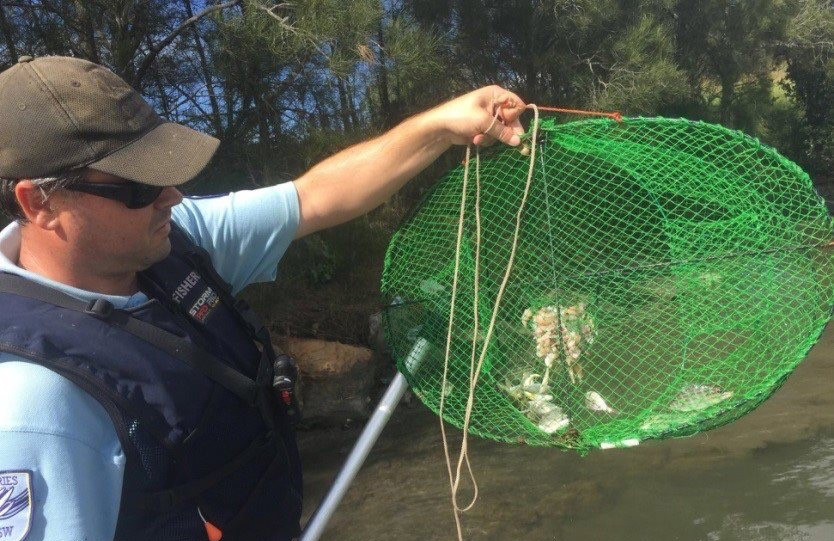
NSW DPI Fisheries Officer inspecting an opera style trap
EPA Takes Legal Action Against Cleanaway For Pollution Of River
Former Truegain Director Convicted, Fined For Failing To Supply Information
NSW State Water Strategy: Have Your Say
Senate Inquiry Into Environment Protection And Biodiversity Conservation Amendment (Regional Forest Agreements) Bill 2020
''This Bill will affirm and clarify the Commonwealth’s intent regarding Regional Forest Agreements to make it explicitly clear that forestry operations in a Regional Forest Agreement region are exempt from Part 3 of the EPBC Act, and that compliance matters are to be dealt with through the state regulatory framework.
Requiring native forestry operations to seek EPBC Act approval would create operationally unviable delays in planned harvesting operations that have already been subjected to significant environmental planning and approvals and create congestion in the approvals pipeline.
This is achieved by removing the ambiguity of what it means to be “undertaken in accordance with a Regional Forest Agreement” (subsection 38(1) of the EPBC Act), which a recent Federal Court decision (Friends of Leadbeater’s Possum Inc v VicForests (No 4) [2020] FCA 704 has shown is not explicit with respect to the Commonwealth’s intended meaning.
Furthermore, the operation of subsection 38(1) is just one of several legal questions considered by Justice Mortimer’s judgment and subsequent appeal. There is no guarantee that the appeal will deal with the substantive question about the operation of subsection 38(1).
The Independent review of the EPBC Act Interim Report (Samuel 2020) recommended addressing this uncertainty:
- “During the course of this Review, the Federal Court found that an operator had breached the terms of an RFA and should therefore be subject to the ordinary controlling provisions of the EPBC Act. Legal ambiguities in the relationship between EPBC Act and the RFA Act should be clarified, so that the Commonwealth’s interests in protecting the environment interact with the RFA framework in a streamlined way.” (page 10), and
- “The EPBC Act recognises the RFA Act, and additional assessment and approvals are not required for forestry activities conducted in accordance with an RFA (except where forestry operations are in a World Heritage property or a Ramsar wetland). These settings are colloquially referred to as the 'RFA exemption', which is somewhat of a misnomer.” (page 60).
The Interim Report also made it clear that under a regional model of empowering the states, the oversight functions would be the responsibility of the states through accredited frameworks (as occurs with Regional Forest Agreements):
“For projects approved under accredited arrangements, the accredited regulator would be responsible for ensuring that projects comply with requirements, across the whole project cycle including transparent post-approval monitoring, compliance and enforcement. The Commonwealth should retain the ability to intervene in project-level compliance and enforcement where egregious breaches are not being effectively enforced by the accredited party.” (page 55).
''The Commonwealth must act urgently to resolve this uncertainty to ensure that the tens of thousands of jobs that depend on Australia’s native forestry operations are not exposed to the sort of crisis now facing Victoria’s native hardwood sector. This amendment Bill will achieve this outcome.''
- First reading: Text of the bill as introduced into the Parliament
- Third reading: Prepared if the bill is amended by the house in which it was introduced. This version of the bill is then considered by the second house.
- As passed by both houses: Final text of bill agreed to by both the House of Representatives and the Senate which is presented to the Governor-General for assent.
NSW Government Plan To Protect And Preserve Bushfire Affected Biodiversity
- developing conservation plans for threatened species and communities facing the most significant fire impacts
- establishing new breeding and propagation programs for priority threatened species
- continuing to implement comprehensive post-fire feral animal and weed control
- monitoring species, ecosystems and landscapes over the long-term
- building the capacity of the wildlife rescue and rehabilitation sector and fire combat agencies to respond to future fire events
- increasing opportunities for Aboriginal people to practice cultural fire management and manage fire-affected sites.
Look up! A powerful owl could be sleeping in your backyard after a night surveying kilometres of territory
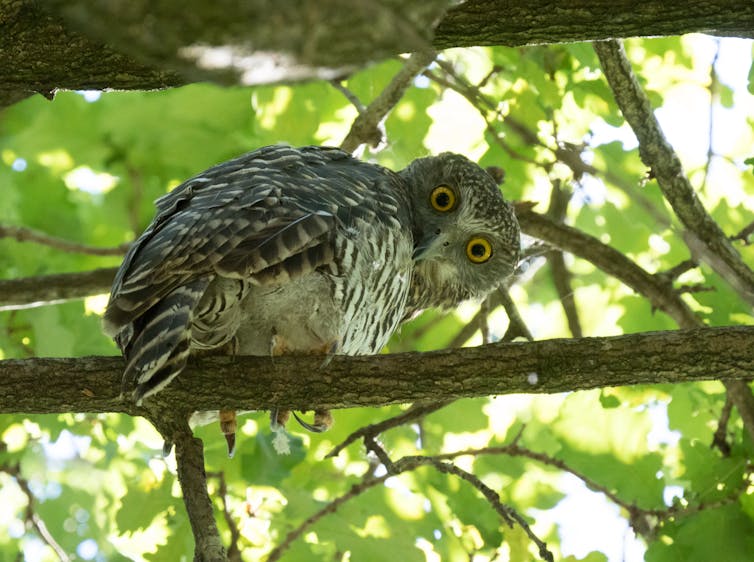
Picture this: you’re in your backyard gardening when you get that strange, ominous feeling of being watched. You find a grey oval-shaped ball about the size of a thumb, filled with bones and fur — a pellet, or “owl vomit”.
You look up and see the bright “surprised” eyes of a powerful owl staring back at you, with half a possum in its talons.
This may be becoming a familiar story for many Australians. We strapped tracking devices to 20 powerful owls in Melbourne for our new research, and learned these apex predators are increasingly choosing to sleep in urban areas, from backyard trees to city parks.
These respite areas are critical for species to survive in challenging urban environments because, just like for humans, rest is an essential behaviour to conserve energy for the day (or night) ahead.
Our research highlights the importance of trees on both public and private land for wild animals. Without an understanding of where urban wildlife rests, we risk damaging these urban habitats with encroaching development.
One Owl, One Year, 300 Possums
Powerful owls are Australia’s largest, measuring 65 centimetres from head to tail and weighing a hefty 1.6 kilograms. They’re found in Australia’s eastern states, except for Tasmania.
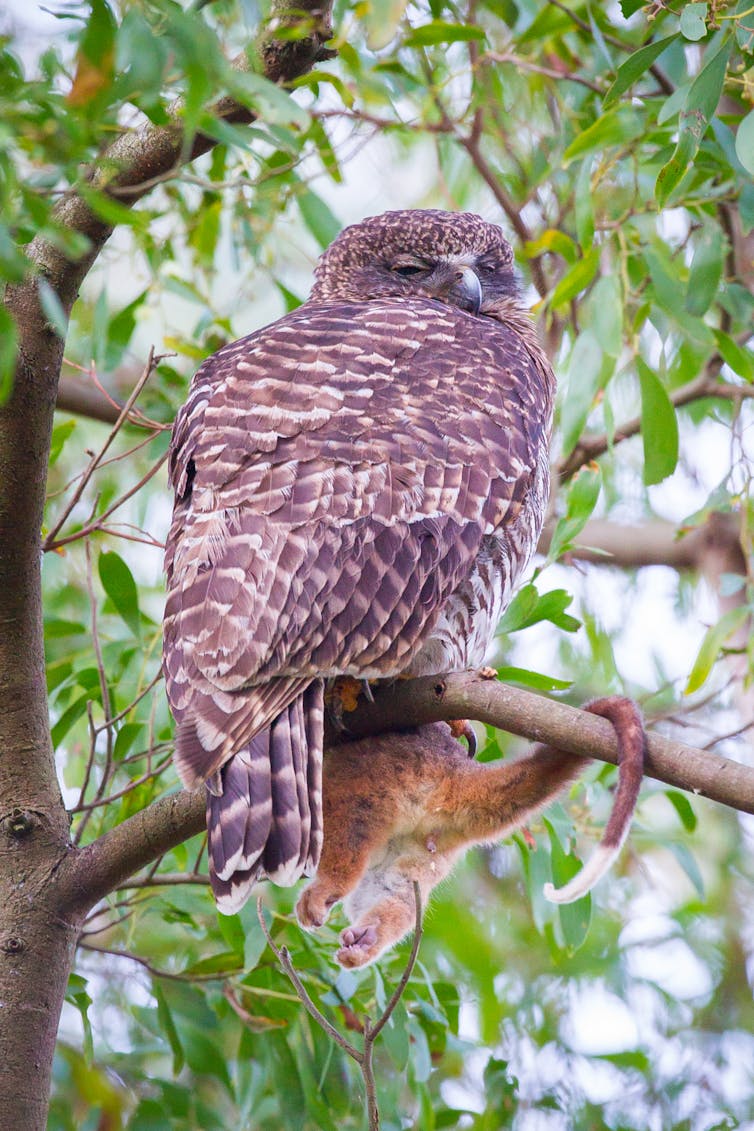
These owls have traditionally been thought to live only in large old-growth forested areas. However, Victoria has lost over 65% of forest cover since European settlement, and because of this habitat loss, the owls are listed as threatened in Victoria.
Their remaining habitat is extremely fragmented. This means we’re finding owls in interesting places — from dry, open woodland to our major east coast cities. This is likely due to the high numbers of prey, such as possums, that thrive alongside exotic garden trees and house roofs.
Read more: Don't disturb the cockatoos on your lawn, they're probably doing all your weeding for free
Powerful owls usually eat one possum per night, or 250-300 possums per year — mostly common ringtail and brushtail possums in Melbourne. They’re often seen holding prey at their roosting spots, where they’ll finish eating in the evening for breakfast.
This has ecosystem-wide benefits, as powerful owls can help keep overabundant possums in check. Too many possums can strip away vegetation, causing it to die back, which stops other wildlife from nesting or finding shelter.
Tracking Their Nocturnal Haunts
But powerful owls are extremely elusive. With low populations, locating owls and researching their requirements is very difficult.
So, to help narrow down the general areas where powerful owls live in Melbourne, we used species distribution models and sought help from land management agencies and citizen scientists.
Over five years, we deployed GPS devices on 20 Melburnian owls to find how they use urban environments. These devices automatically record where the owls move at night and rest during the day.
We learned they fly, on average, 4.4 kilometers per night through golf courses, farms, reserves and backyards looking for dinner and defending their territory. One owl along the Mornington Peninsula travelled 47 km over two nights (possibly in search of a mate). Another urban owl called several golf courses in the Melbourne suburb of Alphington home.
Choosing Where To Sleep
After their nightly adventures, the owls usually return to a number of regular roosting (resting) spots, sometimes on the exact same branch. The powerful owl chooses roosts that protect them against being mobbed by aggressive daytime birds, such as the noisy miner and pied currawong.
We found the owls used 32 different tree species to roost in: 23 were native, and nine were exotic, including pine and willow trees. This shows powerful owls can adapt to use a range of species to fit their roosting requirements, such as thick foliage to hide in during the day.
Owls will generally roost in damp, dark areas during summer, and in open roosts in full or dappled sunlight during winter to help regulate their body temperature.
Read more: Urban owls are losing their homes. So we're 3D printing them new ones
Our research also shows rivers in urban environments are just as important as trees for roosting habitat.
Rivers are naturally home to a diverse range of wildlife. Using trees near rivers to rest in may be a strategic decision to reduce time and energy when travelling at night to find other resources, such as prey, mates and nests.
Rivers that constantly flow, such as the Yarra River, are a particular favourite for the owls.
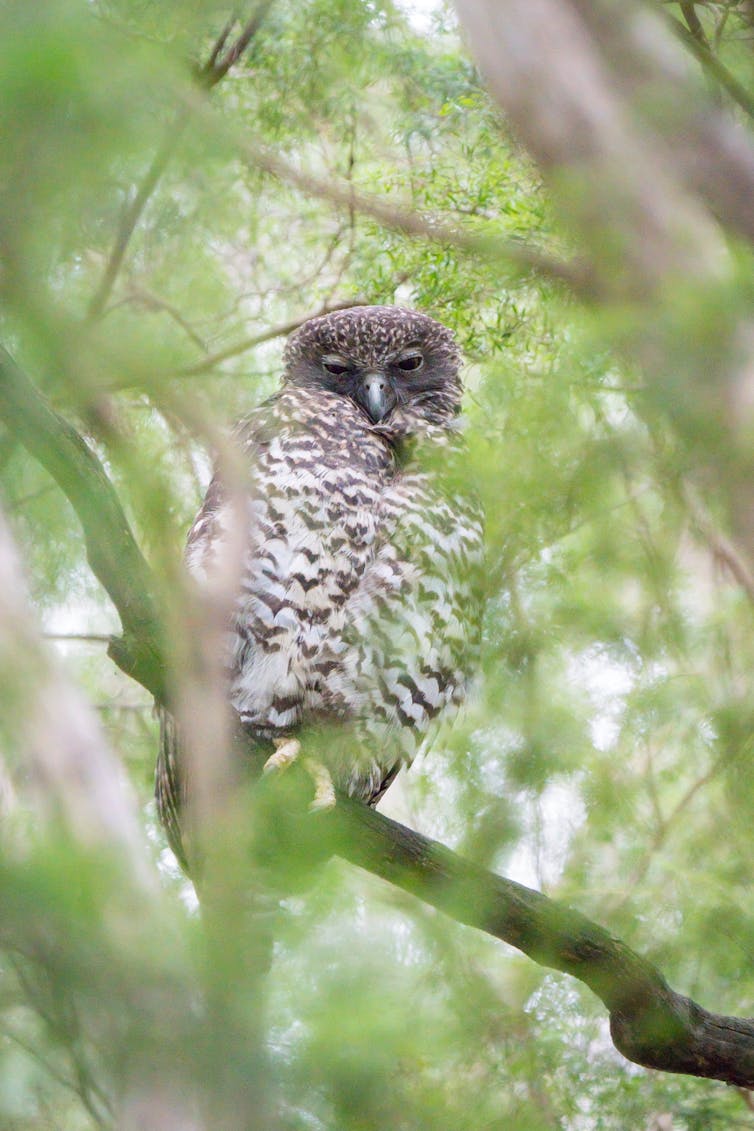
The Urban Roost Risk
These resting habitats, however, are under constant pressure by urban expansion and agriculture. Suitable roosting habitat is either removed, or degraded in quality and converted to housing, roads, grass cover or bare soil.
We found potentially suitable roosting habitat in Melbourne is extremely fragmented, covering just 10% of the landscape because owls are very selective about where they sleep.
Although there might be the odd suitable patch (or tree) to roost in urban environments, what’s often lacking is natural connectivity between patches. While owls are nocturnal, they still need places to rest in the night before they settle down in another spot to sleep for the day.
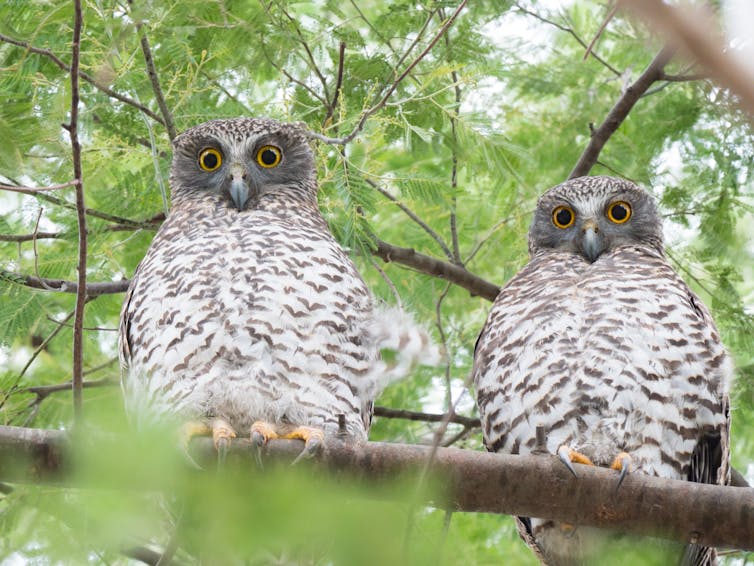
Supplementing habitat with more trees on private property and enhancing the quality of habitat along river systems may encourage owls to roost in other areas of Melbourne.
Powerful owls don’t discriminate between private land and reserves for roosting. So conserving and enhancing resting habitats on public and private land will enable urban wildlife to persist alongside expanding and intensifying urbanisation.
So What Can You Do To Help?
If you want powerful owls to roost in your backyard, visit your local indigenous nursery and ask about trees local to your area.
Several favourite roost trees in Melbourne include many Eucalyptus species and wattles. If you don’t have the space for a large tree, they will also roost in the shorter, dense Kunzea and swamp paperbark (Melaleuca ericifolia).
Planting them will provide additional habitat and, if you are lucky, your neighbourhood owls may even decide to settle in for the day and have a snooze.
Read more: Hard to spot, but worth looking out for: 8 surprising tawny frogmouth facts ![]()
Nick Bradsworth, PhD Candidate, Deakin University; John White, Associate Professor in Wildlife and Conservation Biology, Deakin University, and Raylene Cooke, Associate Professor, Deakin University
This article is republished from The Conversation under a Creative Commons license. Read the original article.
Birds on beaches are under attack from dogs, photographers and four-wheel drives. Here's how you can help them

Environmental scientists see flora, fauna and phenomena the rest of us rarely do. In this new series, we’ve invited them to share their unique photos from the field.
Each year, oystercatchers, plovers and terns flock to beaches all over Australia’s coastline to lay eggs in a shallow scrape in the sand. They typically nest through spring and summer until the chicks are ready to take flight.
Spring and summer, however, are also when most people visit the beach. And human disturbances have increased breeding failure, contributing to the local contraction and decline of many beach-nesting bird populations.
Take Australian fairy terns (Sternula nereis nereis) in Western Australia, the primary focus of my research and photography, as an example. Their 2020-21 breeding season is coming to an end, and has been relatively poor.
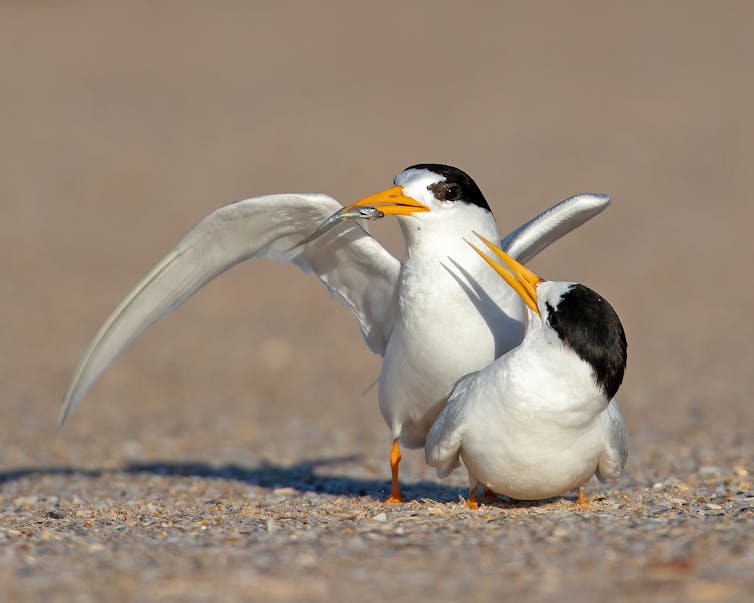
Fox predation and flooding from tidal inundation wiped out several colonies. Unfathomably, a colony was also lost after a four-wheel drive performed bog-laps in a sign-posted nesting area. Unleashed dogs chased incubating adults from their nests, and photographers entered restricted access sites and climbed fragile dunes to photograph nesting birds.
These human-related disturbances highlight the need for ongoing education. So let’s take a closer look at the issue, and how communities and individuals can make a big difference.
Nesting On The Open Beach
Beach-nesting birds typically breed, feed and rest in coastal habitats all year round. During the breeding season, which varies between species, they establish their nests above the high-water mark (high tide), just 20 to 30 millimetres deep in the sand.
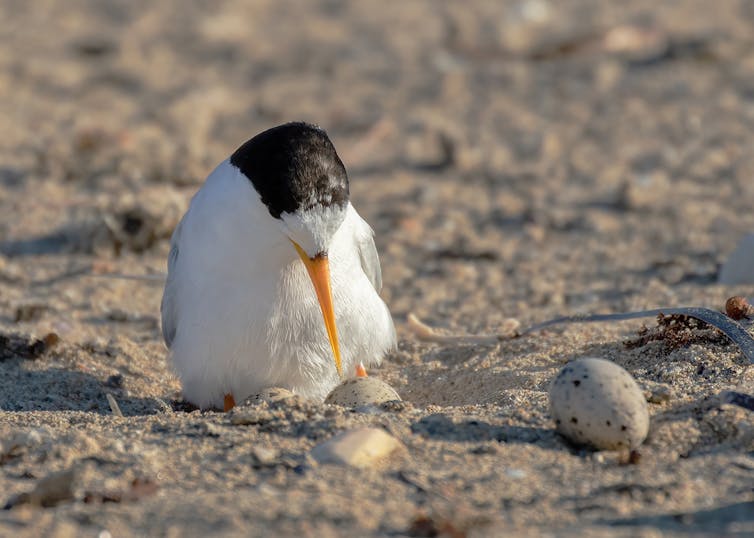
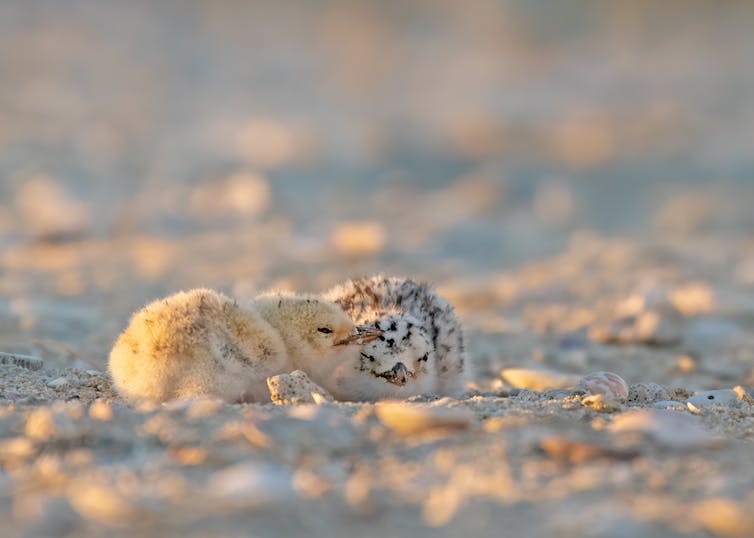
Some species, such as the fairy tern, incorporate beach shells, small stones and organic material like seaweed in and around the nest to help camouflage their eggs and chicks so predators, such as gulls and ravens, don’t detect them easily.
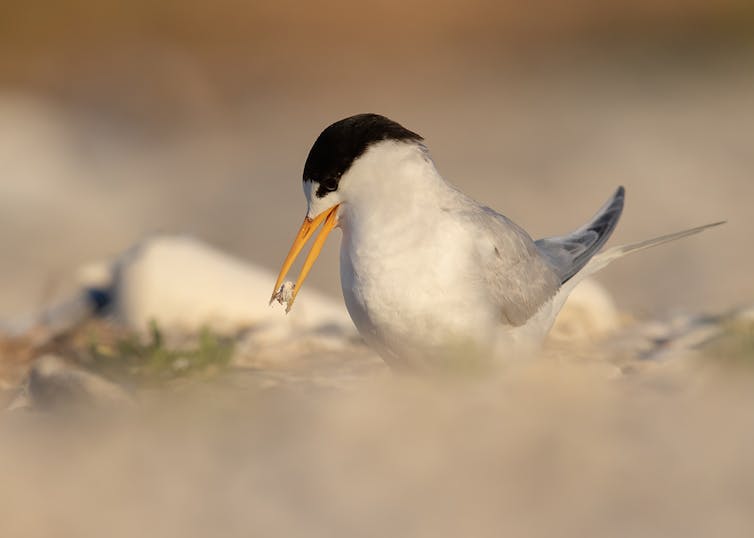
While nests are exposed and vulnerable on the open beach, it allows the birds to spot predators early and to remain close to productive foraging areas.
Still, beach-nesting birds live a harsh lifestyle. Breeding efforts are often characterised by low reproductive success and multiple nesting attempts may be undertaken each season.
Eggs and chicks remain vulnerable until chicks can fly. This takes around 43 days for fairy terns and about 63 days for hooded plovers (Thinornis rubricollis rubricollis).
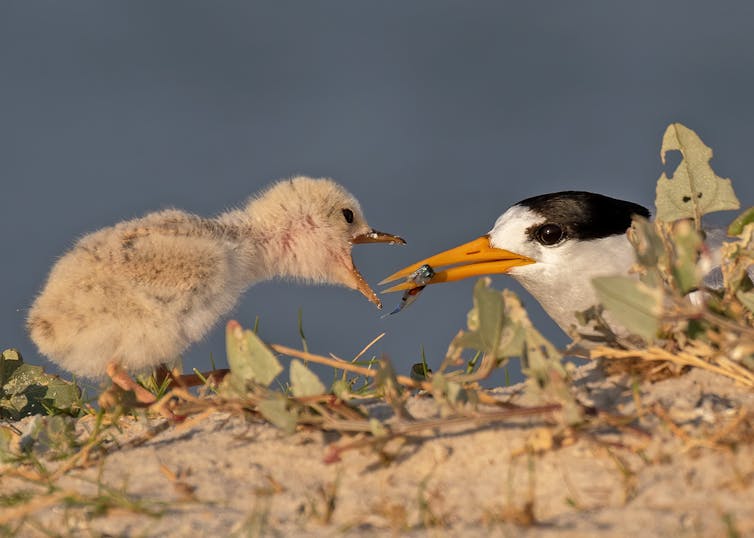
Disturbances: One Of Their Biggest Threats
Many historically important sites are now so heavily disturbed they’re unable to support a successful breeding attempt. This includes the Leschenault Inlet in Bunbury, Western Australia, where fairy tern colonies regularly fail from disturbance and destruction by four-wheel drives.
Species like the eastern hooded plover and fairy tern have declined so much they’re now listed as “vulnerable” under national environment law. It lists human disturbance as a key threatening process.
Read more: One cat, one year, 110 native animals: lock up your pet, it's a killing machine
Birds see people and dogs as predators. When they approach, nesting adult birds distance themselves from the nest and chicks. For example, terns typically take flight, while plovers run ahead of the threat, “leading” it away from the area.
When eggs and chicks are left unattended, they’re vulnerable to predation by other birds, they can suffer thermal stress (overheating or cooling) or be trampled as their cryptic colouration makes them difficult to spot.
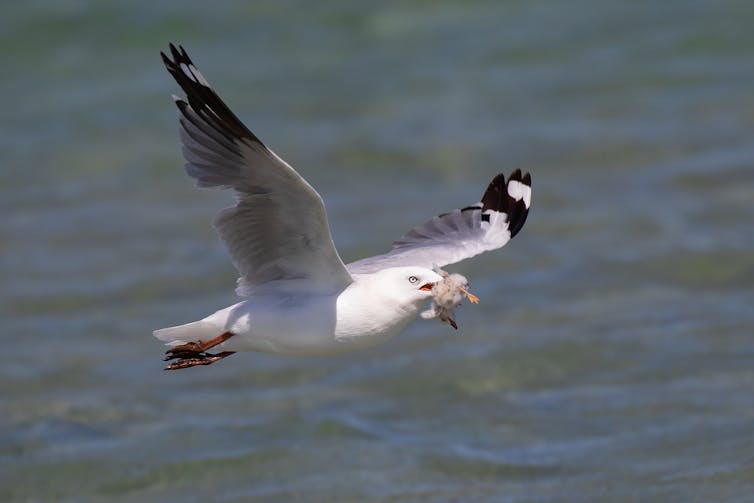
Unlike plovers and oystercatchers, fairy terns nest in groups, or “colonies”, which may contain up to several hundred breeding pairs. Breeding in colonies has its advantages. For example, collective group defence behaviour can drive off predatory birds such as silver gulls (Chroicocephalus novaehollandiae).
However, this breeding strategy can also result in mass nesting failure. For example, in 2018, a cat visiting a colony at night in Mandurah, about 70 km south of Perth, killed six adults, at least 40 chicks and led to 220 adult birds abandoning the site. In other instances, entire colonies have been lost during storm surges.
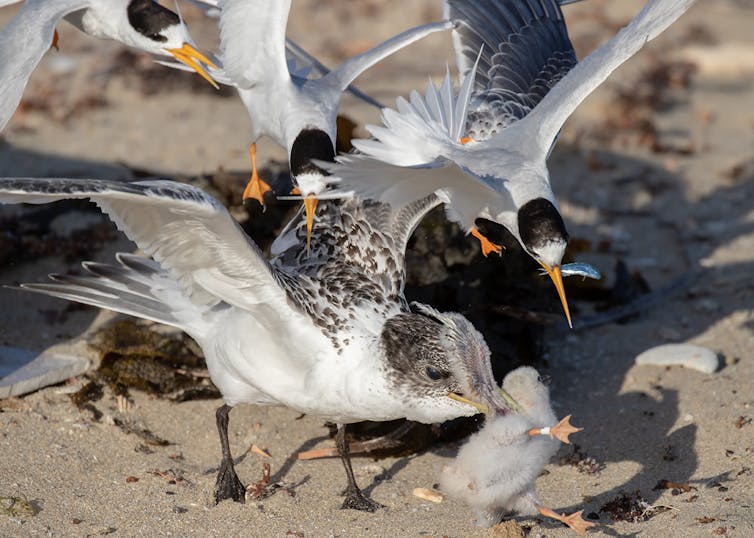
Small Changes Can Make A Big Difference
Land and wildlife managers are becoming increasingly aware of fairy terns and the threats they face. Proactive and adaptive management combined with a good understanding of early breeding behaviour is helping to improve outcomes for these vulnerable birds.
Point Walter, in Bicton, WA, provides an excellent example of how recreational users and beach-nesting birds can coexist.
Point Walter, 18 km from Perth city, is a popular spot for picnicking, fishing, kite surfing, boating and kayaking. It’s also an important site for coastal birds, including three beach-nesting species: fairy terns, red-capped plovers and Australian pied oystercatchers (Haematopus longirostris).
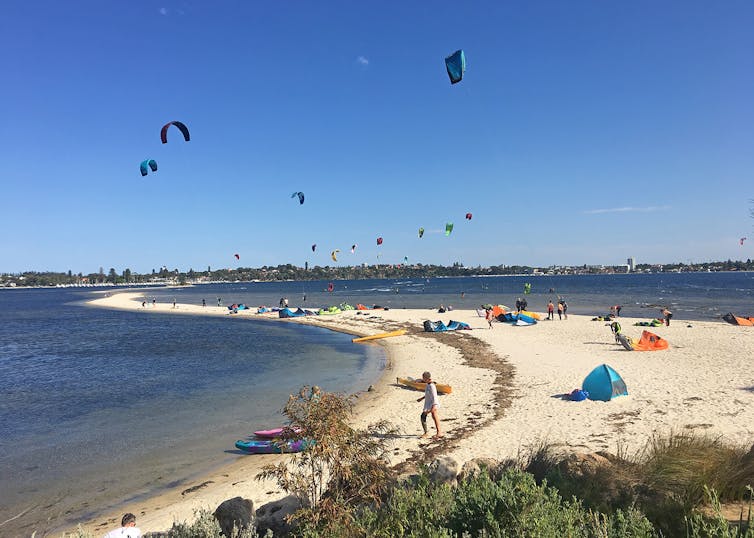
The end of the sand bar is fenced off seasonally, and as a result the past six years has seen the number of terns increase steadily. For the 2020-2021 season, the sand bar supported at least 150 pairs.
The closure also benefits the local population of red-capped plovers and Australian pied oystercatchers, who nest at the site each year.
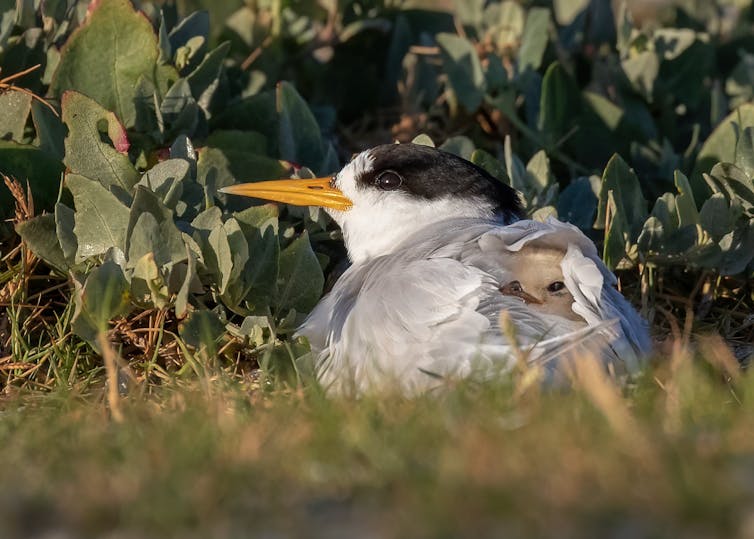
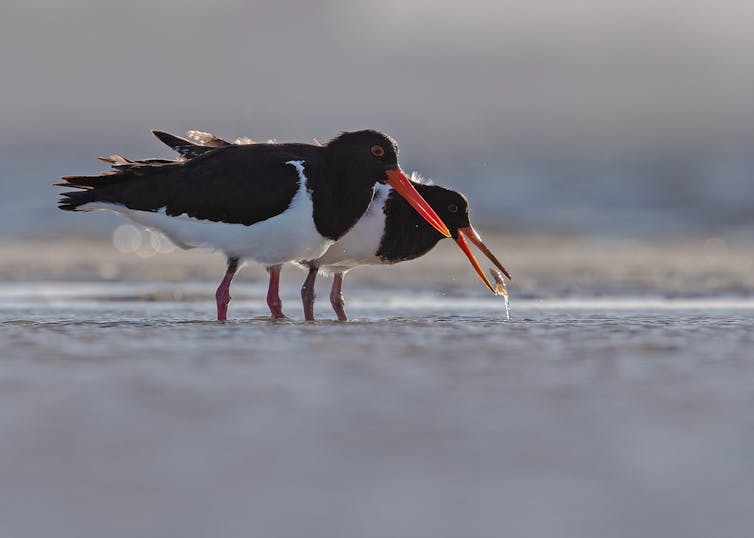
What’s more, strong community stewardship and management interventions by the City of Mandurah to protect a fairy tern colony meant this season saw the most successful breeding event in more than a decade — around 110 pairs at its peak.
Interventions included temporary fencing, signs, community education and increased ranger patrols. Several pairs of red-capped plovers also managed to raise chicks, adding to the success.
These examples highlight the potential for positive outcomes across their breeding range. But intervention during the early colony formation stage is critical. Temporary fencing, signage and community support are some of our most important tools to protect tern colonies.
So What Can You Do To Protect Beach-Nesting Birds?
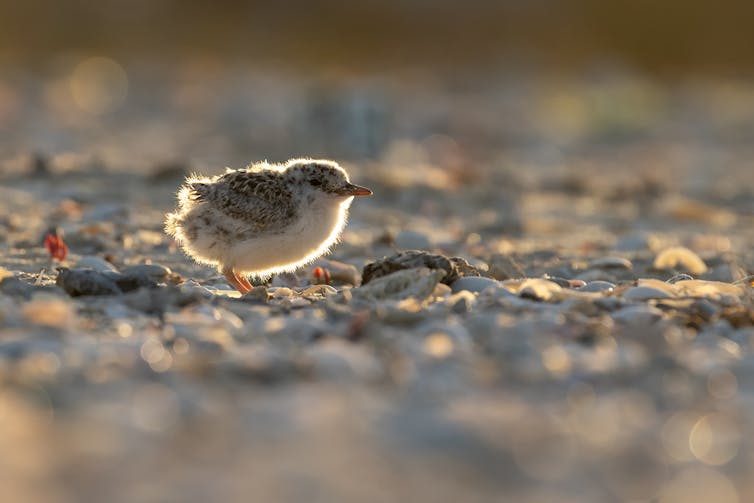
share the space and be respectful of signage and fencing. These temporary measures help protect birds and increase their chance of breeding success
keep dogs leashed and away from known feeding and breeding areas
avoid driving four-wheel drive vehicles on the beach, particularly at high tide
keep cats indoors or in a cat run (enclosure)
if you see a bird nesting on the beach, report it to local authorities and maintain your distance
avoid walking through flocks of birds or causing them to take flight. Disturbance burns energy, which could have implications for breeding and migration.
Read more: Don't let them out: 15 ways to keep your indoor cat happy ![]()
Claire Greenwell, PhD Candidate, Murdoch University
This article is republished from The Conversation under a Creative Commons license. Read the original article.
Dig this: a tiny echidna moves 8 trailer-loads of soil a year, helping tackle climate change
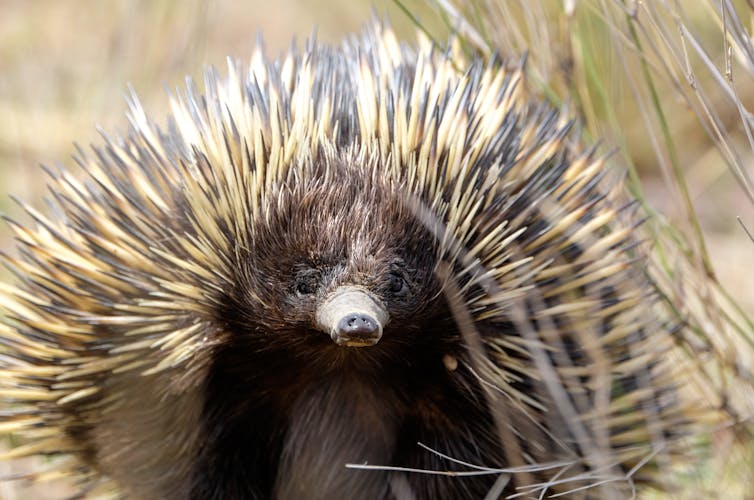
After 200 years of European farming practices, Australian soils are in bad shape – depleted of nutrients and organic matter, including carbon. This is bad news for both soil health and efforts to address global warming.
The native Australian echidna may hold part of the solution. Echidnas dig pits, furrows and depressions in the soil while foraging for ants. Our research has revealed the significant extent to which this soil “engineering” could benefit the environment.
Echidnas’ digging traps leaves and seeds in soil. This helps improve soil health, promotes plant growth and keeps carbon in the soil, rather than the atmosphere.
The importance of this process cannot be underestimated. By improving echidna habitat, we can significantly improve soil health and boost climate action efforts.
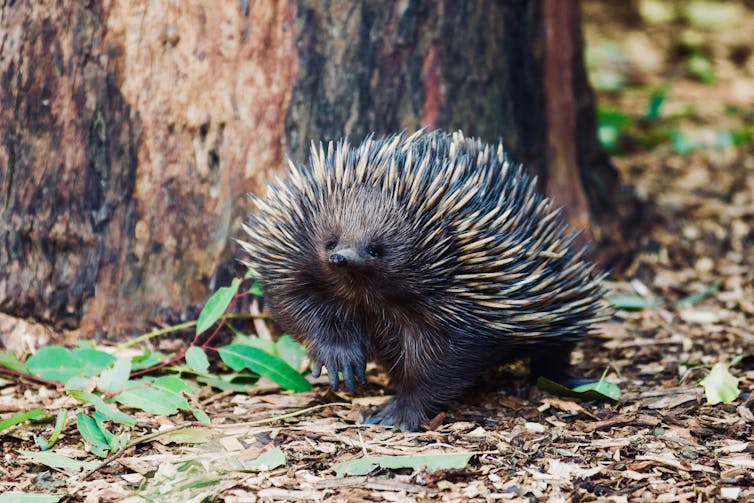
Nature’s Excavators
Many animals improve soil health through extensive digging. These “ecosystem engineers” provide a service that benefits not only soils, but plants and other organisms.
In Australia, most of our digging animals are either extinct, restricted or threatened. But not so the echidna, which is still relatively common in most habitats across large areas of the continent.
Echidnas are prolific diggers. Our long-term monitoring at Australian Wildlife Conservancy’s Scotia Sanctuary, in southwest New South Wales, suggests one echidna moves about seven tonnes – about eight trailer loads – of soil every year.
Soil depressions left by echidnas can be up to 50cm wide and 15cm deep. When ants are scarce, such as at highly degraded sites, echidnas dig deeper to find termites, making even larger pits.
This earth-moving capacity unwittingly provides another critically important function: matchmaking between seeds and water.
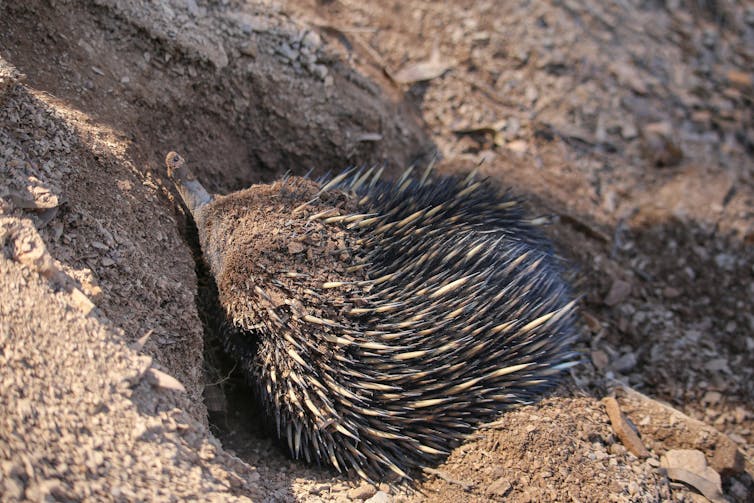
Playing Cupid
For seeds to germinate they must come together with water and soil nutrients. Our experiment showed how echidna digging helps make that happen.
We tested whether seeds would be trapped in echidna pits after rain. We carefully marked various seeds with different coloured dyes, and placed them on the soil surface in a semi-arid woodland near Cobar, NSW, where we’d dug pits similar to those echidnas create. We then simulated a rain event.
Most seeds washed into the pits, and those that started in the pits stayed there. The experiment showed how echidna pits encourage seeds, water and nutrients to meet, giving seeds a better chance to germinate and survive in Australia’s poor soils.
The recovering pits then become plant and soil “hotspots” from which plants can spread across the landscape.
Our research has also found pits also harbour unique microbial communities and soil invertebrates. These probably play an important role in breaking down organic matter to produce soil carbon.
It’s no wonder many human efforts to restore soil imitate the natural structures constructed by animals such as echidnas.
Read more: Curious Kids: How does an echidna breathe when digging through solid earth?
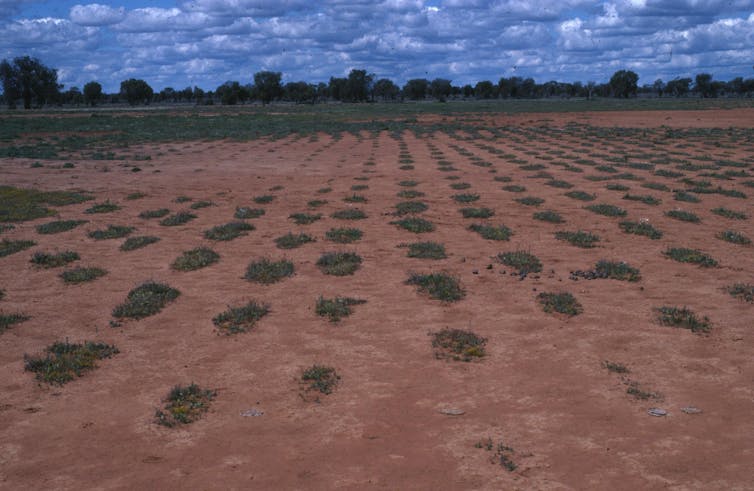
Echidnas As Carbon Farmers
Our recent research also shows how echidna digging helps boost carbon in depleted soils.
When organic matter lies on the soil surface, it’s broken down by intense ultraviolet light which releases carbon and nitrogen into the atmosphere. But when echidnas forage, the material is buried in the soil. There it is exposed to microbes, which break down the material and release carbon and nitrogen to the soil.
This does not happen immediately. Our research suggests it takes 16-18 months for carbon levels in the pits to exceed that in bare soils.
This entire process of echidna digging, capture and buildup creates a patchwork of litter, carbon, nutrients, and plant hotspots. These fertile islands drive healthy, functional ecosystems – and will become more important as the world becomes hotter and drier.
Read more: The secret life of echidnas reveals a world-class digger vital to our ecosystems
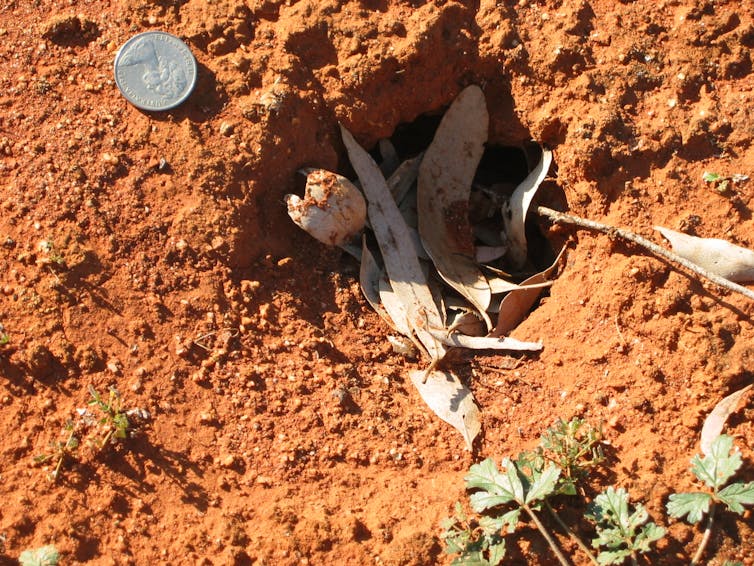
Harness The Power Of Echidnas
Soil restoration can be expensive, and impractical across vast areas of land. Soil disturbance by echidnas offers a cost-effective restoration option, and this potential should be harnessed.
Australia’s echidna populations are currently not threatened. But landscape management is needed to ensure healthy echidna populations into the future.
Echidnas often shelter in hollow logs, so removing fallen timber reduces their habitat and feeding sites. Restrictions on practices such as firewood removal are needed to prevent habitat loss.
And being slow-moving, echidnas are often killed on our roads. To address this, shrubs and ground plants should be planted between patches of native bush, creating vegetation corridors so echidnas can move safely from one spot to the next.
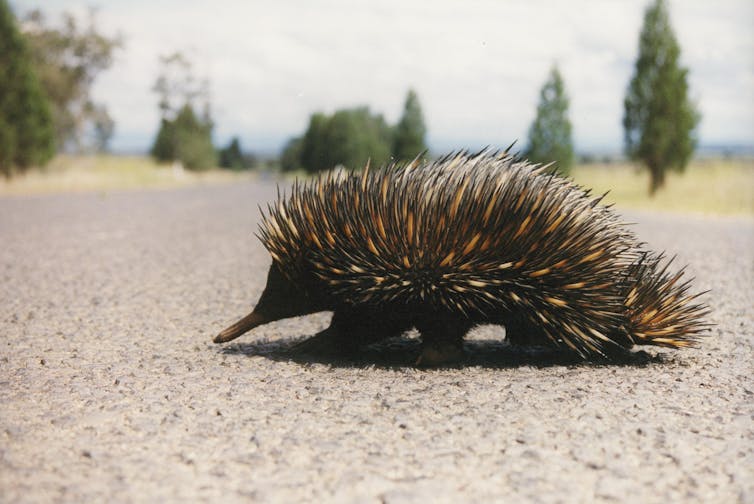
And while an echidna’s sharp spines give it some protection from natural predators, they’re less effective against introduced predators such as foxes and cats. So strategies to control these threats are also needed.
The health of Australia’s fragile environment is in serious decline. Echidnas are already providing a valuable ecosystem service – and they should be protected and nurtured to ensure this continues.
David John Eldridge, Professor of Dryland Ecology, UNSW
This article is republished from The Conversation under a Creative Commons license. Read the original article.
Think all your plastic is being recycled? New research shows it can end up in the ocean
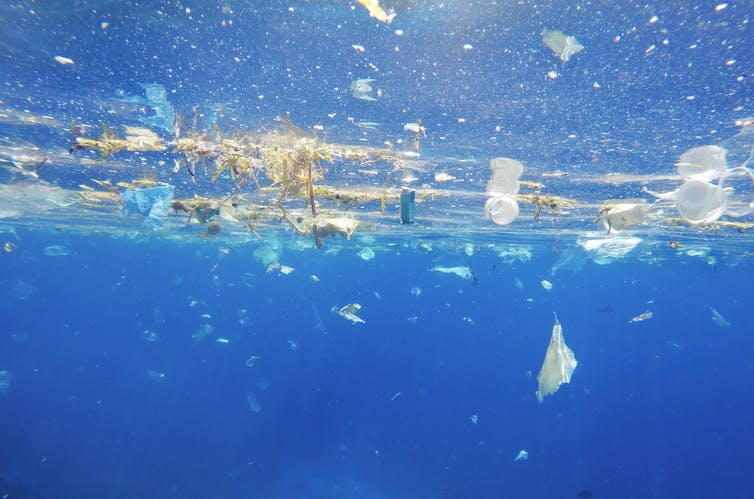
We all know it’s wrong to toss your rubbish into the ocean or another natural place. But it might surprise you to learn some plastic waste ends up in the environment, even when we thought it was being recycled.
Our study, published today, investigated how the global plastic waste trade contributes to marine pollution.
We found plastic waste most commonly leaks into the environment at the country to which it’s shipped. Plastics which are of low value to recyclers, such as lids and polystyrene foam containers, are most likely to end up polluting the environment.
The export of unsorted plastic waste from Australia is being phased out – and this will help address the problem. But there’s a long way to go before our plastic is recycled in a way that does not harm nature.

Know Your Plastics
Plastic waste collected for recycling is often sold for reprocessing in Asia. There, the plastics are sorted, washed, chopped, melted and turned into flakes or pellets. These can be sold to manufacturers to create new products.
The global recycled plastics market is dominated by two major plastic types:
polyethylene terephthalate (PET), which in 2017 comprised 55% of the recyclable plastics market. It’s used in beverage bottles and takeaway food containers and features a “1” on the packaging
high-density polyethylene (HDPE), which comprises about 33% of the recyclable plastics market. HDPE is used to create pipes and packaging such as milk and shampoo bottles, and is identified by a “2”.
The next two most commonly traded types of plastics, each with 4% of the market, are:
polypropylene or “5”, used in containers for yoghurt and spreads
low-density polyethylene known as “4”, used in clear plastic films on packaging.
The remaining plastic types comprise polyvinyl chloride (3), polystyrene (6), other mixed plastics (7), unmarked plastics and “composites”. Composite plastic packaging is made from several materials not easily separated, such as long-life milk containers with layers of foil, plastic and paper.
This final group of plastics is not generally sought after as a raw material in manufacturing, so has little value to recyclers.
Read more: China's recycling 'ban' throws Australia into a very messy waste crisis

Shifting Plastic Tides
China banned the import of plastic waste in January 2018 to prevent the receipt of low-value plastics and to stimulate the domestic recycling industry.
Following the bans, the global plastic waste trade shifted towards Southeast Asian nations such as Vietnam, Thailand, Malaysia, and Indonesia. The largest exporters of waste plastics in 2019 were Europe, Japan and the US. Australia exported plastics primarily to Malaysia and Indonesia.
Australia’s waste export ban recently became law. From July this year, only plastics sorted into single resin types can be exported; mixed plastic bales cannot. From July next year, plastics must be sorted, cleaned and turned into flakes or pellets to be exported.
This may help address the problem of recyclables becoming marine pollution. But it will require a significant expansion of Australian plastic reprocessing capacity.
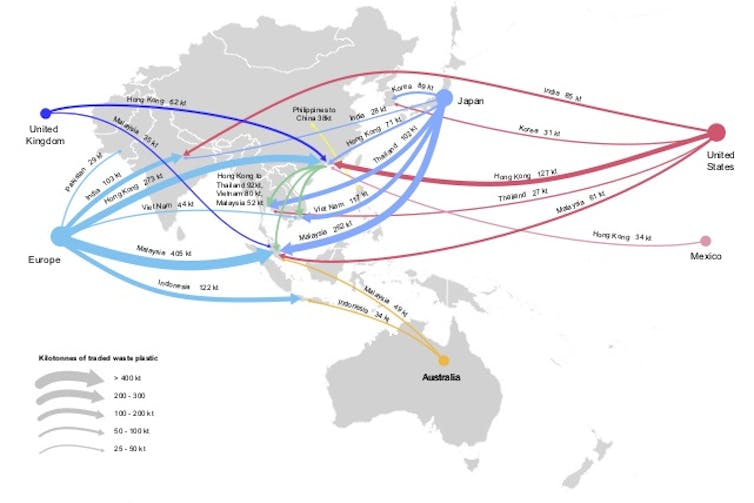
What We Found
Our study was funded by the federal Department of Agriculture, Water and the Environment. It involved interviews with trade experts, consultants, academics, NGOs and recyclers (in Australia, India, Indonesia, Japan, Malaysia, Vietnam and Thailand) and an extensive review of existing research.
We found when it comes to the international plastic trade, plastics most often leak into the environment at the destination country, rather than at the country of origin or in transit. Low-value or “residual” plastics – those left over after more valuable plastic is recovered for recycling – are most likely to end up as pollution. So how does this happen?
In Southeast Asia, often only registered recyclers are allowed to import plastic waste. But due to high volumes, registered recyclers typically on-sell plastic bales to informal processors.
Interviewees said when plastic types were considered low value, informal processors frequently dumped them at uncontrolled landfills or into waterways. Sometimes the waste is burned.
Plastics stockpiled outdoors can be blown into the environment, including the ocean. Burning the plastic releases toxic smoke, causing harm to human health and the environment.
Interviewees also said when informal processing facilities wash plastics, small pieces end up in wastewater, which is discharged directly into waterways, and ultimately, the ocean.
However, interviewees from Southeast Asia said their own domestic waste management was a greater source of ocean pollution.
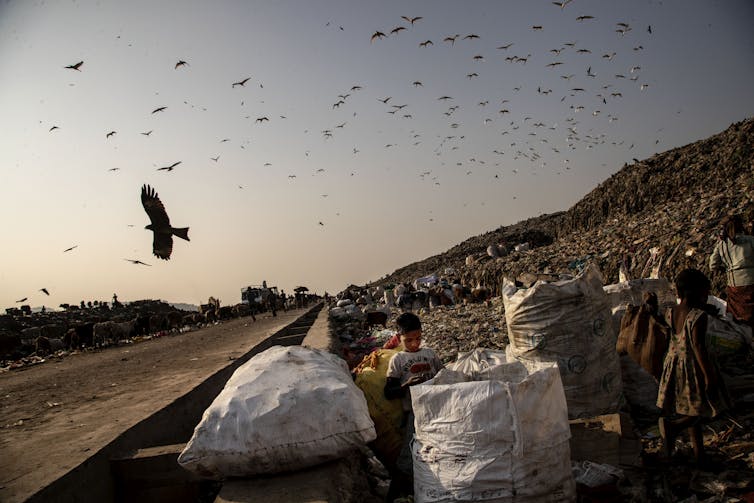
A Market Failure
The price of many recycled plastics has crashed in recent years due to oversupply, import restrictions and falling oil prices, (amplified by the COVID-19 pandemic). However clean bales of PET and HDPE are still in demand.
In Australia, material recovery facilities currently sort PET and HDPE into separate bales. But small contaminants of other materials (such as caps and plastic labels) remain, making it harder to recycle into high quality new products.
Before the price of many recycled plastics dropped, Australia baled and traded all other resin types together as “mixed plastics”. But the price for mixed plastics has fallen to zero and they’re now largely stockpiled or landfilled in Australia.
Several Australian facilities are, however, investing in technology to sort polypropylene so it can be recovered for recycling.

Doing Plastics Differently
Exporting countries can help reduce the flow of plastics to the ocean by better managing trade practices. This might include:
improving collection and sorting in export countries
checking destination processing and monitoring
checking plastic shipments at export and import
improving accountability for shipments.
But this won’t be enough. The complexities involved in the global recycling trade mean we must rethink packaging design. That means using fewer low-value plastic and composites, or better yet, replacing single-use plastic packaging with reusable options.
The authors would like to acknowledge research contributions from Asia Pacific Waste Consultants (APWC) - Dr Amardeep Wander, Jack Whelan and Anne Prince, as well as Phil Manners at CIE.
Read more: Here's what happens to our plastic recycling when it goes offshore ![]()
Monique Retamal, Research Principal, Institute for Sustainable Futures, University of Technology Sydney; Elsa Dominish, Senior Research Consultant, Institute for Sustainable Futures, University of Technology Sydney; Nick Florin, Research Director, Institute for Sustainable Futures, University of Technology Sydney, and Rachael Wakefield-Rann, Research Consultant, Institute for Sustainable Futures, University of Technology Sydney
This article is republished from The Conversation under a Creative Commons license. Read the original article.
New Shorebirds WingThing For Youngsters Available To Download
A Shorebirds WingThing educational brochure for kids (A5) helps children learn about shorebirds, their life and journey. The 2021 revised brochure version was published in February 2021 and is available now. You can download a file copy here.
If you would like a free print copy of this brochure, please send a self-addressed envelope with A$1.10 postage (or larger if you would like it unfolded) affixed to: BirdLife Australia, Shorebird WingThing Request, 2-05Shorebird WingThing/60 Leicester St, Carlton VIC 3053.

 Shorebird Identification Booklet
Shorebird Identification Booklet
The Migratory Shorebird Program has just released the third edition of its hugely popular Shorebird Identification Booklet. The team has thoroughly revised and updated this pocket-sized companion for all shorebird counters and interested birders, with lots of useful information on our most common shorebirds, key identification features, sighting distribution maps and short articles on some of BirdLife’s shorebird activities.
The booklet can be downloaded here in PDF file format: http://www.birdlife.org.au/documents/Shorebird_ID_Booklet_V3.pdf
Paper copies can be ordered as well, see http://www.birdlife.org.au/projects/shorebirds-2020/counter-resources for details.
Download BirdLife Australia's children’s education kit to help them learn more about our wading birdlife
Shorebirds are a group of wading birds that can be found feeding on swamps, tidal mudflats, estuaries, beaches and open country. For many people, shorebirds are just those brown birds feeding a long way out on the mud but they are actually a remarkably diverse collection of birds including stilts, sandpipers, snipe, curlews, godwits, plovers and oystercatchers. Each species is superbly adapted to suit its preferred habitat. The Red-necked Stint is as small as a sparrow, with relatively short legs and bill that it pecks food from the surface of the mud with, whereas the Eastern Curlew is over two feet long with a exceptionally long legs and a massively curved beak that it thrusts deep down into the mud to pull out crabs, worms and other creatures hidden below the surface.
Some shorebirds are fairly drab in plumage, especially when they are visiting Australia in their non-breeding season, but when they migrate to their Arctic nesting grounds, they develop a vibrant flush of bright colours to attract a mate. We have 37 types of shorebirds that annually migrate to Australia on some of the most lengthy and arduous journeys in the animal kingdom, but there are also 18 shorebirds that call Australia home all year round.
What all our shorebirds have in common—be they large or small, seasoned traveller or homebody, brightly coloured or in muted tones—is that each species needs adequate safe areas where they can successfully feed and breed.
The National Shorebird Monitoring Program is managed and supported by BirdLife Australia.
This project is supported by Glenelg Hopkins Catchment Management Authority and Hunter Local Land Services through funding from the Australian Government’s National Landcare Program. Funding from Helen Macpherson Smith Trust and Port Phillip Bay Fund is acknowledged.
The National Shorebird Monitoring Program is made possible with the help of over 1,600 volunteers working in coastal and inland habitats all over Australia.
The National Shorebird Monitoring program (started as the Shorebirds 2020 project initiated to re-invigorate monitoring around Australia) is raising awareness of how incredible shorebirds are, and actively engaging the community to participate in gathering information needed to conserve shorebirds.
In the short term, the destruction of tidal ecosystems will need to be stopped, and our program is designed to strengthen the case for protecting these important habitats.
In the long term, there will be a need to mitigate against the likely effects of climate change on a species that travels across the entire range of latitudes where impacts are likely.
The identification and protection of critical areas for shorebirds will need to continue in order to guard against the potential threats associated with habitats in close proximity to nearly half the human population.
Here in Australia, the place where these birds grow up and spend most of their lives, continued monitoring is necessary to inform the best management practice to maintain shorebird populations.
BirdLife Australia believe that we can help secure a brighter future for these remarkable birds by educating stakeholders, gathering information on how and why shorebird populations are changing, and working to grow the community of people who care about shorebirds.
To find out more visit: http://www.birdlife.org.au/projects/shorebirds-2020/shorebirds-2020-program
Aussie Bread Tags Collection Points

Final Report Calls For Fundamental And Systemic Aged Care Reform
- A new Aged Care Act that puts older people first, enshrining their rights and providing a universal entitlement for high quality and safe care based on assessed need.
- An integrated system for the long-term support and care of older people and their ongoing community engagement.
- A System Governor to provide leadership and oversight and shape the system.
- An Inspector-General of Aged Care to identify and investigate systemic issues and to publish reports of its findings.
- A plan to deliver, measure and report on high quality aged care, including independent standard-setting, a general duty on aged care providers to ensure quality and safe care, and a comprehensive approach to quality measurement, reporting and star ratings.
- Up to date and readily accessible information about care options and services, and care finders to support older people to navigate the aged care system.
- A new aged care program that is responsive to individual circumstances and provides an intuitive care structure, including social supports, respite care, assistive technology and home modification, care at home and residential care. In particular, the new program will provide greater access to care at home, including clearing the home care waiting list.
- A more restorative and preventative approach to care, with increased access to allied health care in both home and residential aged care.
- Increased support for development of ‘small household’ models of accommodation.
- An Aboriginal and Torres Strait Islander aged care pathway to provide culturally safe and flexible aged care to meet the needs of Aboriginal and Torres Strait Islander people wherever they live.
- Improved access to health care for older people, including a new primary care model, access to multidisciplinary outreach services and a Senior Dental Benefits Scheme.
- Equity of access to services for older people with disability and measures to ensure younger people do not enter or remain in residential aged care.
- Professionalising the aged care workforce through changes to education, training, wages, labour conditions and career progression.
- Registration of personal care workers.
- A minimum quality and safety standard for staff time in residential aged care, including an appropriate skills mix and daily minimum staff time for registered nurses, enrolled nurses and personal care workers for each resident, and at least one registered nurse on site at all times.
- Strengthened provider governance arrangements to ensure independence, accountability and transparency.
- A strengthened quality regulator.
- Funding to meet the actual cost of high quality care and an independent Pricing Authority to determine the costs of delivering it.
- A simpler and fairer approach to personal contributions and means testing, including removal of co-contributions toward care, reducing the high effective marginal tax rates that apply to many people receiving residential aged care, and phasing out Refundable Accommodation Deposits.
- Financing arrangements drawing on a new aged care levy to deliver appropriate funding on a sustainable basis.
This is how we create the age-friendly smart city
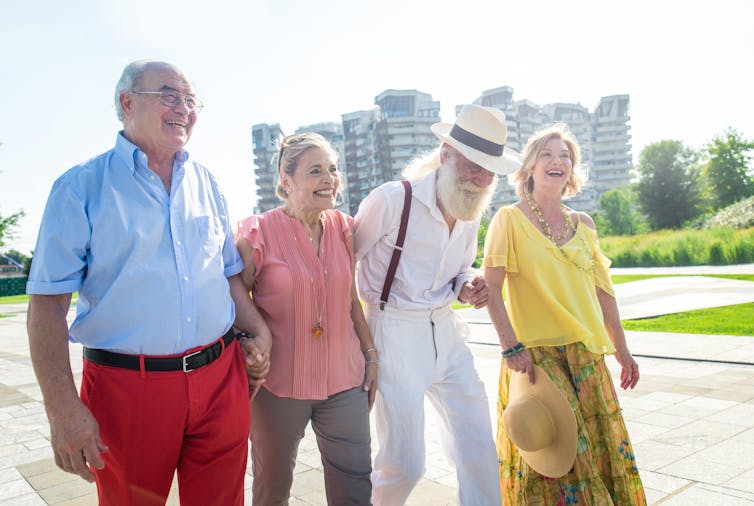
Senior citizens need help and encouragement to remain active as they age in their own communities. Given the choice, that’s what most would prefer. The smart city can provide the digital infrastructure for them to find and tailor the local neighbourhood information they need to achieve this.
Australia has a growing population of older adults, the majority living in cities. The challenge, then, is to ensure city environments meet their needs and personal goals.
Our research shows senior citizens want to pursue active ageing as a positive experience. This depends on them being able to stay healthy, participate in their community and feel secure.
Read more: 'Ageing in neighbourhood': what seniors want instead of retirement villages and how to achieve it
Most city planning efforts to encourage active ageing are siloed and fragmented. Older people are too often shut away in retirement villages or nursing homes rather than living in the community. Current approaches are often based on traditional deficit models of focusing on older people’s declining health.
Another issue is that senior citizens are treated as receivers of solutions instead of creators. To achieve real benefits it’s essential to involve them in developing the solutions.
Working Towards Age-Friendly Cities
To counter a rise in urban ageism, the World Health Organisation (WHO) has been promoting age-friendly cities for nearly 15 years. Its age-friendly framework includes these goals:
equity
an accessible physical environment
an inclusive social environment.
Cities and towns around the world, including local councils in Australia, have begun working towards this.
We need to recognise the diverse demands of living in cities, where most seniors live, particularly as we age.
Read more: Retire the retirement village – the wall and what’s behind it is so 2020
Smart city approaches can make urban neighbourhoods more age-friendly. One way technology and better design do this is to improve access to the sort of information older Australians need – on the walkability of neighbourhoods, for example.
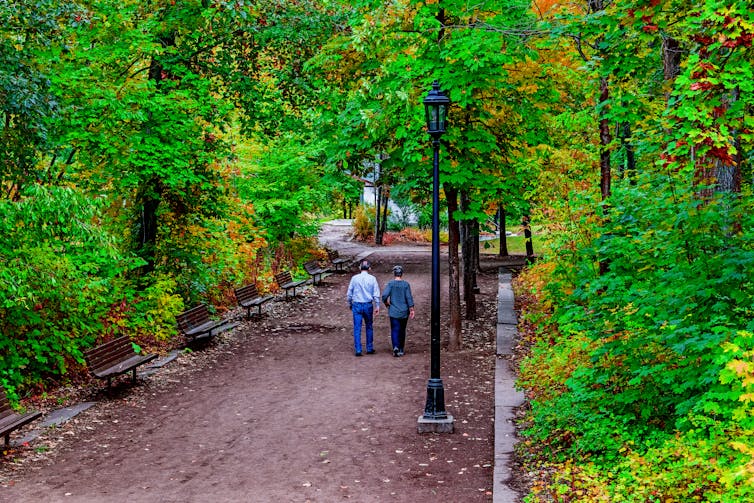
Our research has considered three factors in ensuring smart city solutions involve older Australians and work for them.
Replace Ageism With Agency
Government efforts have focused on increasing life expectancy rather than improving quality of life and independence. Ignoring quality of life leads to the perception of an ageing population as a burden to be looked after.
It would be better to bring about changes that improve older people’s health so they can participate in neighbourhood activities. Social interaction is a source of meaning and identity.
Read more: For Australians to have the choice of growing old at home, here is what needs to change
Active participation by older adults using digital devices can give them agency in their lives and reduce the risk of isolation. Bloomberg reports older adults have become empowered using technology to overcome social isolation during the COVID-19 pandemic.
Connect To Smart City Data
Cities are about infrastructure. Senior citizens need to have access to information about this infrastructure to be motivated to spend time in their neighbourhood and reduce their risk of isolation.
Growing numbers of active ageing seniors are “connected” every day using mobile phones to interact with smart city services. Many have wearable devices like smart watches that help monitor and manage their health and physical activity.
These personal devices can also be used to better connect older adults to public data about urban environments. For example, imagine an age-friendly smart city “layer” linked to a smart watch, to highlight facilities such as public toilets, water fountains and shaded rest stops along exercise routes.
Access Map Seattle is an example of an age-friendly, interactive, smart city map that shows the steepness of pedestrian footpaths and raised kerbs. The National Public Toilet Map, created by the Australian Department of Health and Ageing, and Barcelona’s smartappcity are among other mobile apps integrating city services and urban plans.
The rise of “urban observatories” has increased the gathering and analysing of complex city-related data. These data make it possible to build a digital city layer.
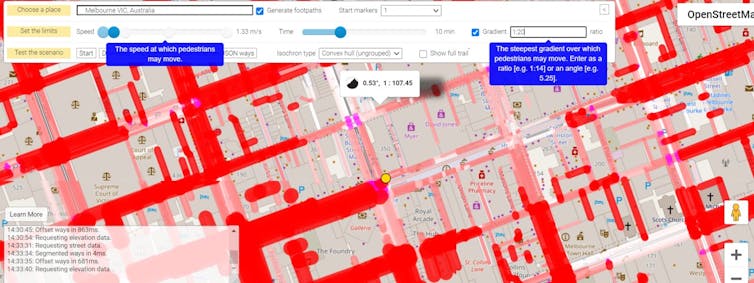
This information then helps us understand and improve the liveability of neighbourhoods for older adults. The data can be used for more proactive policy and city planning.
Read more: Aged care isn't working, but we can create neighbourhoods to support healthy ageing in place
Include Co-Design In Planning
Co-design processes that involve older adults, giving them agency in smart city planning, lead to greater participation and inclusion.
We need to start asking senior citizens questions like “How would you like to access this data?” and “What would you like the digital layer to tell you?” Their goals and needs must drive the information provided.
It’s not just a matter of deciding what specific data older adults want to get via their devices. They should also be able to contribute directly to the data. For example, using a mobile app they could audit their neighbourhood to identify features that help or hinder walkability.
Read more: Contested spaces: we need to see public space through older eyes too
To create truly age-friendly smart cities, it is important for older people to be co-designers of the digital layer. The co-design includes deciding both the types of data available and how the data can be usefully presented. We also need to understand what mobile apps could use the data.
If we know what information within the digital city layer motivates older adults to participate more actively in their neighbourhoods, we can plan more age-friendly cities.
Through connecting infrastructures and citizen-led approaches, we can achieve social participation and inclusion of citizens regardless of their age and recognising diversity and equity. We will create places where they feel capable and safe across a range of activities. Redesigning age-friendly and smart communities directly and collaboratively with those affected can enable them to achieve the quality of life they desire.![]()
Sonja Pedell, Associate Professor and Director, Future Self and Design Living Lab, Swinburne University of Technology and Ann Borda, Associate Professor, Centre for Digital Transformation of Health, The University of Melbourne
This article is republished from The Conversation under a Creative Commons license. Read the original article.
We all hope for a 'good death'. But many aged-care residents are denied proper end-of-life care

Death is inevitable, and in a civilised society everyone deserves a good one. It would therefore be logical to expect aged-care homes would provide superior end-of-life care. But sadly, palliative care options are often better for those living outside residential aged care than those in it.
More than a quarter of a million older Australians live in residential aged care, but few choose to be there, few consider it their “home”, and most will die there after living there for an average 2.6 years. These are vulnerable older people who have been placed in residential aged care when they can no longer be cared for at home.
The royal commission has made a forceful and sustained criticism of the quality of aged care. Its final report, released this week, and the interim report last year variously described the sector as “cruel”, “uncaring”, “harmful”, “woefully inadequate” and in need of major reform.
Quality end-of-life care, including access to specialist palliative care, is a significant part of the inadequacy highlighted by the report’s damning findings. This ranked alongside dementia, challenging behaviours and mental health as the most crucial issues facing the sector.
Longstanding Problem
In truth, we have already known about the palliative care problem for years. In 2017 the Productivity Commission reported that end-of-life care in residential aged care needs to be better resourced and delivered by skilled staff, to match the quality of care available to other Australians.
This inequality and evident discrimination against aged-care residents is all the more disappointing when we consider these residents are among those Australians most likely to find themselves in need of quality end-of-life care.
The royal commission’s final report acknowledges these inadequacies and addresses them in 12 of its 148 recommendations. Among them are recommendations to:
enshrine the right of older people to access equitable palliative and end-of-life care
include palliative care as one of a range of integrated supports available to residents
introduce multidiscpliniary outreach services including palliative care from local hospitals
require specific training for all direct care staff in palliative and end-of-life care skills.
What Is Good Palliative Care?
Palliative care is provided to someone with an active, progressive, advanced disease, who has little or no prospect of cure and who is expected to die. Its primary goal is to optimise the quality of life for that person and their family.
End-of-life care is provided by palliative care services in the final few weeks of life, in which a patient with a life-limiting illness is rapidly approaching death. This also extends to bereavement care for family and loved ones.
Unlike in other sectors of Australian society, where palliative care services are growing in line with overall population ageing, palliative care services in residential aged care have been declining.
Funding restrictions in Australian aged-care homes means palliative care is typically only recommended to residents during the final few weeks or even days of their life.
Read more: What is palliative care? A patient's journey through the system
Some 70% of Australians say they would prefer to die at home, surrounded by loved ones, with symptoms managed and comfort the only goal. So if residential aged care is truly a resident’s home, then extensive palliative and end-of-life care should be available, and not limited just to the very end.
Fortunately, the royal commission has heard the clarion call for attention to ensuring older Australians have as good a death as possible, as shown by the fact that a full dozen of the recommendations reflect the need for quality end-of-life care.
Moreover, the very first recommendation — which calls for a new Aged Care Act — will hopefully spur the drafting of legislation that endorses high-quality palliative care rather than maintaining the taboo around explicitly mentioning death.
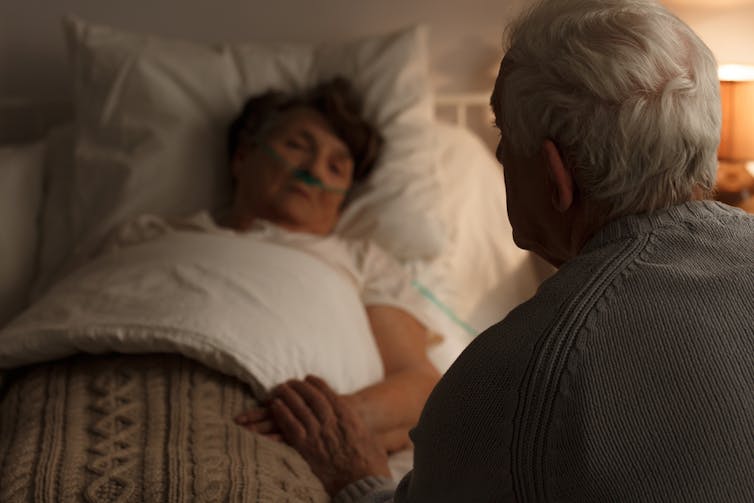
Let’s Talk About Death
Of course, without a clear understanding of how close death is, and open conversation, planning for the final months of life cannot even begin. So providing good-quality care also means we need to get better at calculating prognosis and learn better ways to convey this information in a way that leads to being able to make a plan for comfort and support, both for the individual and their loved ones.
Advanced care planning makes a significant difference in the quality of end-of-life care by understanding and supporting individual choices through open conversation. This gives the individual the care they want, and lessens the emotional toll on family. It is simply the case that failing to plan is planning to fail.
We need to break down the discomfort around telling people they’re dying. The unpredictability of disease progression, particularly in conditions that involve frailty or dementia, makes it hard for health professionals to determine when exactly palliative care will be needed and how to talk about it with different cultural groups.
Read more: Passed away, kicked the bucket, pushing up daisies – the many ways we don't talk about death
These conversations need to be held through the aged-care sector to overcome policy and regulation issues, funding shortfalls and workforce knowledge and expertise.
We need a broader vision for how we care for vulnerable Australians coming to the end of a long life. It is not just an issue for health professionals and residential care providers, but for the whole of society. Hopefully the royal commission’s recommendations will breathe life into end-of-life care into aged care in Australia.![]()
Davina Porock, Professor of Nursing, Director of Centre for Research in Aged Care, Edith Cowan University
This article is republished from The Conversation under a Creative Commons license. Read the original article.
Respect, Care And Dignity – Aged Care Royal Commission $452 Million Immediate Response As Government Commits To Historic Reform To Deliver Respect And Care For Senior Australians
50% of Australians are prepared to pay more tax to improve aged care workers' pay, survey shows
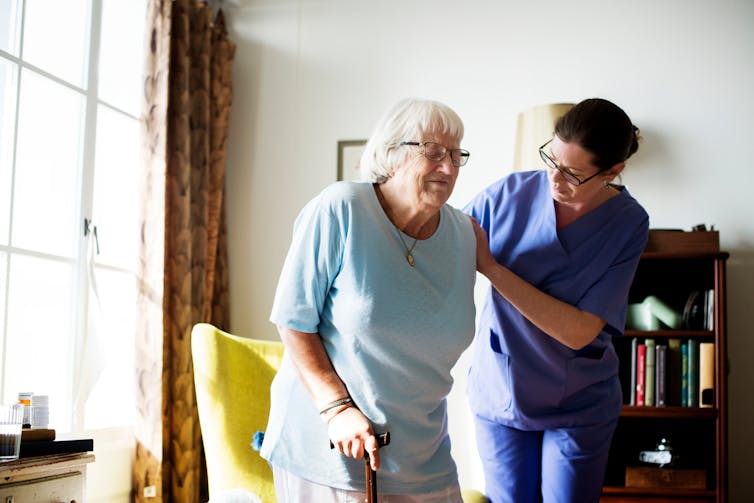
The final report from the aged care royal commission this week was damning. Speaking of a system in crisis, it calls for an urgent overhaul.
The Morrison government has been facing difficult questions regarding which of the 148 recommendations it will adopt. It also needs to grapple with how to pay for the much-needed changes.
Read more: 4 key takeaways from the aged care royal commission's final report
On this question, the royal commissioners disagree. Commissioner Lynelle Briggs calls for a levy of 1% of taxable personal income, while commissioner Tony Pagone recommends the Productivity Commission investigate an aged care levy.
A 1% levy could cost the median person who already pays the medicare levy about $610 a year, while boosting funds for the aged care sector by almost $8 billion a year.
So far, the government has played down the idea of new taxes. There is a view this would be hard sell for a Coalition elected, at least in part, to lower taxation.
But as debate continues about how to make the changes we need to aged care (and not just talk about it), our research suggests many Australians support a levy to improve the quality and sustainability of our aged care system.
Our Research
In September 2020, we surveyed over 1,000 Australians aged 18 to 87 years, representative by age, gender and state. We wanted to find out how the pandemic influenced attitudes to health, well-being and caring for others.
Our findings indicated overwhelming public support for aged care reform, to ensure all older Australians are treated with dignity.
Read more: Paid on par with cleaners: the broader issue affecting the quality of aged care
The vast majority of our respondents (86%) either “strongly agreed” or “agreed” Australia needed more skilled and trained aged care workers. On top of this, 80% thought aged care workers should be paid more for the work that they did.
More than 80% also either “strongly agreed” or “agreed” that nurses working in aged care should be paid at an equivalent rate to nurses working in the health system. Currently, nurses working in aged care are paid, on average, about 10-15% less.
The Crunch Point
Importantly, 50% of our respondents showed a willingness to pay additional tax to fund better pay and conditions for aged care workers. Of those willing to pay more tax, 70% were willing to pay 1% or more per year.
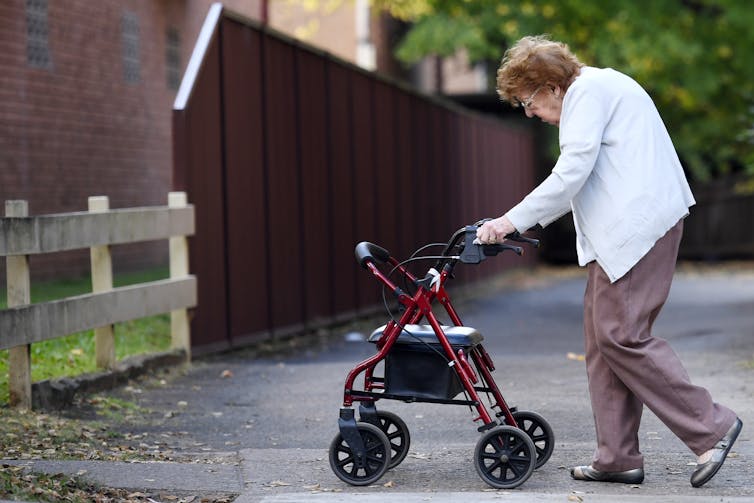
This finding supports previous larger-scale research we undertook for the royal commission, before the pandemic.
Here we found similar levels of public support for increased income tax contributions to support system-wide improvements. This suggests politicians seem to underestimate the public appetite for improvements to the system, and people’s willingness to contribute to achieve this.
Changing Ideas About Economic ‘Success’
Our survey findings also highlighted a growing recognition among Australians of the importance of a broader range of social and economic goals.
For some time, economists, academics, organisations and peak bodies have been calling for a move away from traditional economic indicators (such as economic growth and expanding gross domestic product) at any cost, towards a broader definition of success.
This would see governments focus on policies that promote a more equal distribution of wealth and well-being, where the fundamentals of community cohesion are highly valued and our natural resources are protected.
We asked our survey respondents to rank the relative importance of seven key areas of public policy in framing Australia’s pathway to recovery from the COVID-19 pandemic, including:
- dignity (people have enough to live in comfort, safety and happiness)
- nature and climate (a restored natural world which supports life into the future)
- social connection (a sense of community belonging and institutions that serve the common good)
- fairness (equal opportunity for all Australians and the gap between the richest and the poorest greatly reduced)
- participation (having as much control over your daily life as you would want)
- economic growth (an increase in the amount of goods and services produced in Australia), and
- economic prosperity (full employment and low inflation levels).
The criteria ranked most important by the largest proportion of our survey respondents were dignity (20.1%) and fairness (19.3%).
Traditional economic indicators were not the highest priorities for the Australians we surveyed. Instead, economic growth and prosperity were only ranked as a top priority by 15.3% and 15.2% of our respondents respectively.
This suggests the general public recognises the importance of moving beyond the traditional markers of a successful society.
What Australians Want
Our research shows significant aged care reform is entirely consistent with the current priorities of the Australian public.
The burning question now is whether the Morrison government will step up to the challenge.![]()
Rachel Milte, Matthew Flinders Senior Research Fellow, Flinders University and Julie Ratcliffe, Professor of Health Economics and Mathew Flinders Fellow, Caring Futures Institute, Flinders University
This article is republished from The Conversation under a Creative Commons license. Read the original article.
It's A Girl: Rare Black Rhino Calf Born In Dubbo
Taronga Western Plains Zoo in Dubbo is celebrating the birth of a critically endangered Black Rhino calf, born in the early hours of the morning on Wednesday February 24th 2021.
Keepers arrived at work on Wednesday to find the female calf standing beside mother Bakhita in the Zoo’s behind-the-scenes calving yard. Taronga made the announcement on Monday, March 1st, 2021.
“This is the fourth calf for experienced mother Bakhita, who is the Zoo’s most successful Black Rhino breeding female and also the first female Black Rhino born here,” said Taronga Western Plains Zoo Director, Steve Hinks.
Keepers are currently monitoring Bakhita and her calf via CCTV cameras to allow them plenty of space to develop their bond and ensure both mother and calf remain calm.
“This calf is especially important as it carries the legacy of our Black Rhino breeding bull, Kwanzaa who sadly passed away in 2020.”
“Kwanzaa played a prominent role in the Black Rhino conservation breeding program here in Dubbo, siring four calves, and it is such a great feeling to see his final calf arrive safely,” said Steve.
Both mum and calf are doing well and will remain behind-the-scenes for the next couple of months. This time is important for both mum and calf to bond and to allow the calf to grow and develop before making the move to the Black Rhino paddock on the Zoo circuit.
“The team will provide regular updates on our newest addition via Taronga TV and social media whilst the calf is behind-the-scenes,” said Steve.
Taronga Western Plains Zoo has been very successful in breeding Black Rhinos throughout the history of the conservation breeding program which commenced in the 1990s. This is the fourth calf born into the program in the last six years.
“Our team that care for this species here at the Zoo are experts in their field and this latest success is a testament to their knowledge, husbandry skills and dedication in conserving this remarkable species.”
Black Rhinos are currently listed as critically endangered with estimates that there are less than 6000 remaining in the wild.
Taronga Western Plains Zoo is internationally renowned for its Black Rhino conservation breeding program and actively funds and supports conservation efforts for wild rhinos in Africa, Indonesia and India. Funding and support for habitat protection and restoration, anti-poaching and rhino protection units and the reduction of human-animal conflict are all vital to ensure Rhino species will continue to survive in the wild.
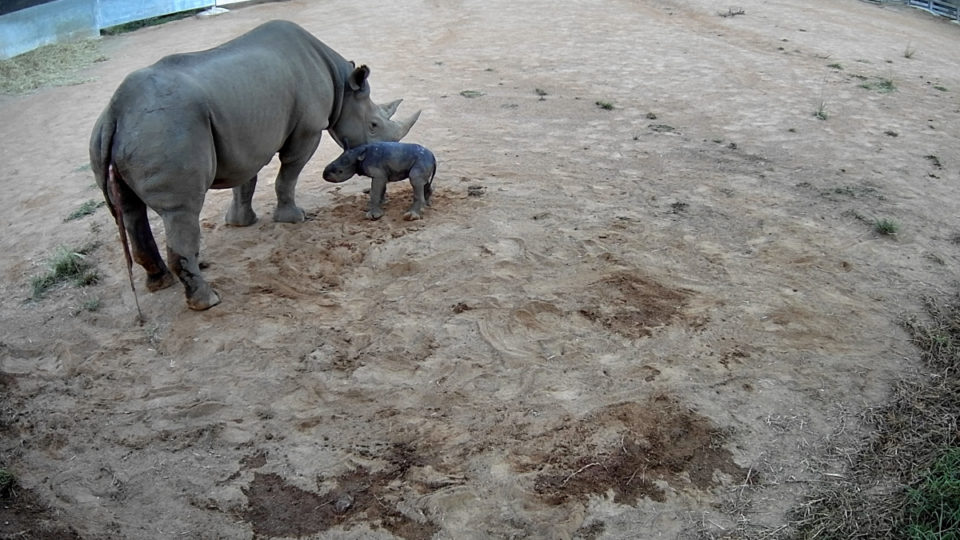
New Short Course Teaches You How To Innovate Like A Startup Founder
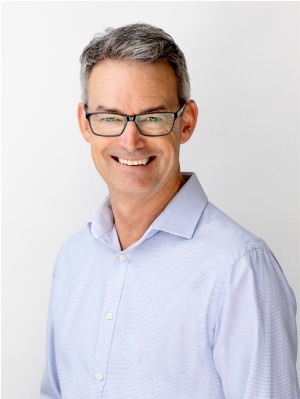 SSE alumnus Stephen Cooper worked as a photographer for 30 years before discovering an appetite for entrepreneurship. After starting his own photography company, Stephen decided to enrol in a Certificate IV in New Small Business at TAFE NSW.
SSE alumnus Stephen Cooper worked as a photographer for 30 years before discovering an appetite for entrepreneurship. After starting his own photography company, Stephen decided to enrol in a Certificate IV in New Small Business at TAFE NSW. Future Leaders In Focus For Women Of The Year
- Khawlah Asmaa Albaf (14), Young - Khawlah Asmaa Albaf embraced country life and represented a minority group through the NSW Regional Youth Taskforce and United Nations youth programs.
- Daniya Atif Syed (16), Bardia - Daniya Atif Syed’s enthusiasm for technology saw her lead a robotics team and work on projects including a bionic hand to assist people with disabilities.
- Charlotte Childs (14), Heddon Greta - Charlotte Childs is the president of an Interact Club, a youth section of Rotary, which runs wellbeing and fundraising projects for her school and community.
- Molly Croft (15), Dubbo - Molly Croft displayed courage and strength through her journey with cancer, while actively participating in fundraising, mentoring and sporting initiatives.
- Izabelle Kelly (9), Dubbo - At just nine-years-old, Izabelle Kelly sewed and donated more than 100 pouches for bushfire-affected joeys and encouraged her peers to support native wildlife.
- Annabelle Kingston (17), Tootool - Annabelle Kingston launched the not-for-profit, ‘Fetch it for a Farmer’ to provide grocery vouchers for more than 20 farming families battling drought.
- Zara Matthews (13), Kariong - Zara Matthews launched an annual mufti-day at her school to raise more than $20,000 for Kenyan orphanages and is also a Fred Hollows Foundation ambassador.
- Amelia Munday (16), Berkeley Vale - Amelia Munday started a medical science university degree at the age of 13 and used her love of science to create accessibility apps such as an AUSLAN interpreter.
- Ella Treanor (17), Oak Flats - Ella Treanor showed immense resilience to overcome an extensive hamstring injury and go on to represent Australia in acrobatic gymnastics.
Funding Boost For Councils For Youth Week 2021
NSW Premier's 2021 Reading Challenge Opens
March 1st, 2021
The annual bookfest that encourages a love of reading kicks off today.
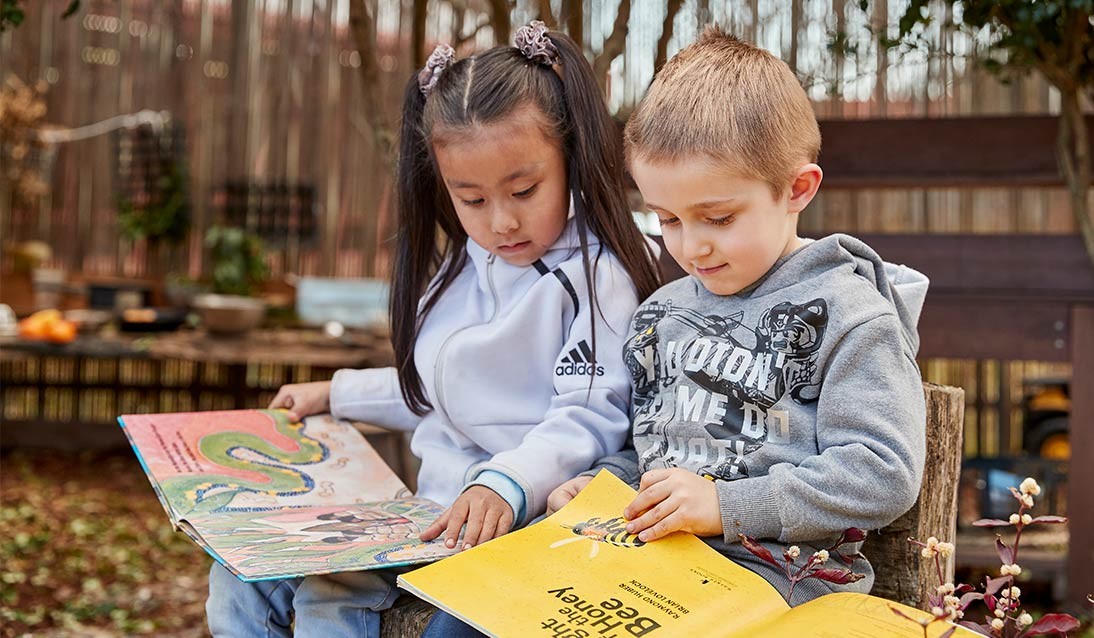
Page turner: Students can now log their reading as part of the Premier's Reading Challenge.
Students from Kindergarten to Year 9 are being encouraged to jump into reading with the NSW Premier’s Reading Challenge opening today for 2021.
The challenge encourages students across NSW to read between 20 and 30 books for leisure and pleasure, depending on their challenge level, from a reading list of quality literature.
NSW Premier Gladys Berejiklian said last year almost nine million books were read during the challenge, a 5 per cent increase on previous years.
“It's important for children to discover what books have to offer because we know a passion for learning will set them up for the future," Ms Berejiklian said.
“Whether it’s picking up a book to boost your knowledge, relax at the end of a hard day, or look for inspiration from great figures, reading offers so much for anyone at nearly any age.
"I would love to see as many children as possible develop an interest in reading like I did when I was at school.”
Education Minister Sarah Mitchell said last year an additional 38,000 books were read and 165 more schools joined the challenge.
“It’s not too late for schools and students to join the Premier’s Reading Challenge. All you need to do is register, pick up a book and start reading,” Ms Mitchell said.
“The ability to read well is one of education’s greatest gifts, and everyone involved should be proud that the challenge continues to grow and encourages all students to explore the many benefits that result from a love of reading.”
There is a particular focus in 2021 on ensuring representation on the reading list of literature by Indigenous authors and illustrators, with Bundjalung woman, author and illustrator Dr Bronwyn Bancroft providing this year’s promotional artwork.
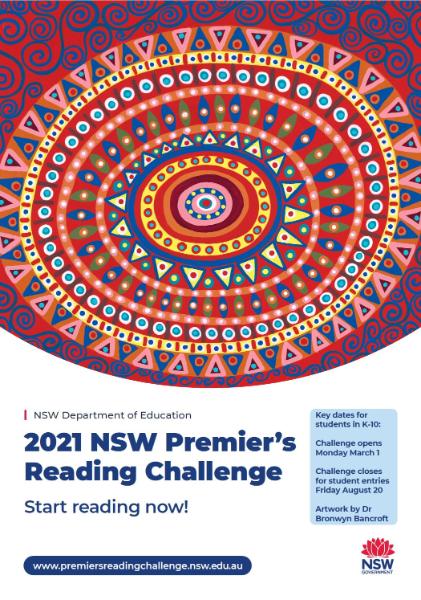
More information about the Premier’s Reading Challenge and reading lists can be found on the challenge website at: https://online.det.nsw.edu.au/prc/home.html

NSW Youth Advisory Council 2021 Applications Now Open
- Question: What do you think are the important issues affecting children and young people in NSW? Please explain why you think these issues are important. (As a guide, your answers should be no more than 250 words.)
- Question: What life experiences have you had which would assist you in contributing to the Council’s work?
- Question: Details of any current or past voluntary or community activities you have been involved in.
- We'll ask a few questions about you and your background.
Applications Now Open For Y NSW Youth Parliament
NSW Youth Week 2021: 16 To 24 April
- share ideas
- attend live events
- have their voices heard on issues of concern to them
- showcase their talents
- celebrate their contribution to the community
- take part in competitions
- have fun!
Express Yourself Exhibition 2021
The talent and creativity of more than 40 HSC Visual Art students on the Northern Beaches will be on display for the annual Express Yourself exhibition at the Manly Art Gallery & Museum (MAG&M) from February 19th until March 28th 2021.
The winners of the $3,000 Manly Art Gallery & Museum Society Youth Art Award and $5,000 Theo Batten Bequest Youth Art Award will be announced on Friday 19th of February. These two awards are granted annually to students featured in the exhibition.
Artist statements will be displayed alongside the artworks describing the inspirations and influences that informed the works and the students’ creative journeys.
Visitors are encouraged to vote for their favourite artwork in the KALOF People’s Choice Award which is announced at the end of the exhibition period.
Express Yourself is also part of Art Month Sydney, March 2021.
Exhibition: 19 February - Sunday 28 March 2021, 10am - 4pm daily (excluding Mondays)
Teachers' preview: Friday 19 February, 5 - 6pm. Bookings essential via Council’s website
Art Walk and Talk: Saturday 27 February, 3 – 4pm: Artists walk through the exhibition and discuss their works with the curator. Bookings essential via Council’s website.
Half of our unis don't have bullying policies for students. This is what they need to protect them

Students are heading off to universities around Australia, whether for the first time or as returning students, with expectations of a year of learning, making friends and enjoyable socialising. For some students this will not be the case. Bullying by other students continues to be a serious but neglected problem at Australian universities.
Our recent study of 39 Australian universities found 20 did not have an anti-bullying policy relating to students. The other 19 had a mix of student-specific policies and staff policies with students added on.
Read more: Bullying in regional universities is a serious problem that needs addressing
Internationally, researchers have identified bullying at universities as a problem. Students have reported both traditional bullying and cyberbullying.
With growing numbers learning online, it is more important than ever to ensure universities are properly protecting their students. Students need accurate, relevant and usable information to counter bullying.
First, A Little Context
Despite the evidence of the harm bullying in universities does, it hasn’t received the same attention as bullying in schools or workplaces.
Australia has laws to ensure workplaces and schools have anti-bullying policies for employees and students. Each state’s department of education provides a template and guidelines on what must be included in school policy and how it should be communicated to staff, students and parents.
Read more: Not every school's anti-bullying program works – some may actually make bullying worse
Policies are a great prevention and intervention strategy as part of efforts to stop student bullying. The problem is this government-based approach to bullying has not included tertiary education.
So What Are Universities Doing?
The support provided for students who are bullied varies from university to university. But, overall, policy-based support is lacking.
The numbers found in our recent study are worrying. Only 66% of university policies defined bullying and 69% mentioned cyberbullying. Only 23% provided contact details for students to report the bullying to their university.
The study assessed universities’ policies for quality and usability of content. This revealed an important problem in addition to the overall lack of information. Where these policies exist, they lack accurate and usable information.

How Useful Are These Policies?
We checked the information provided against a list of 37 items, including:
definitions of bullying
practical information on how to report and what support is available
usability of information – is the policy easy to find and understand?
overall prevention and intervention strategies.
On average, universities in Australia included only 15 of the 37 items in their anti-bullying policies. This means the existing policies are not providing important information to students about bullying and what to do if they are bullied.
Analysis of the content universities provided to students in each state and territory clearly shows how widespread the issue is. All on average included less than half of the items they should have included. The averages were:
9 of 37 in Australian Capital Territory, Northern Territory and Tasmania
14 of 37 in Victoria and Western Australia
17 of 37 in Queensland and New South Wales
18 of 37 in South Australia.
As well as the information left out, the information provided by anti-bullying policies was often incorrect or contradicted by the university’s other policies, procedures or information pages. This is especially true of the definitions of bullying. The words bullying, harassment and discrimination are often used interchangeably.
Read more: Sexual abuse, harassment and discrimination 'rife' among Australian academics
The usability of these policies is another issue. Some are hard to find. The policies also do not use student-friendly language and are difficult to understand.
Many policies do not use student-specific examples of bullying behaviour. This is especially true of staff policies that have had students added on. Information about reporting the bullying, and who they should talk to for advice and support, is often relevant for staff only.
How Can This Situation Be Fixed?
These problems should be tackled on several fronts, including:
state governments mandating that each university has a student-specific anti-bullying policy using a provided template so information is accurate and consistent across all universities
universities drawing on well-developed policies and practices such as those in the UK, which use online reporting forms and have student advice lines
universities actively promoting a bully-free culture on campus and online, and ensuring students know of the policies and their options.
Universities have a duty of care to students. This mean they must make sure students can learn in a safe and supportive environment. Universities must take a firm stance on bullying and ensure students know how to identify and report bullying, and trust their university to believe and support them when bullying does occur.
Read more: Brutal rituals of hazing won't go away — and unis are increasingly likely to be held responsible ![]()
Zoe Vaill, PhD Candidate Faculty of Education, Queensland University of Technology
This article is republished from The Conversation under a Creative Commons license. Read the original article.
Youse wouldn't believe it: a new book charts the 11-year making of a 'people's dictionary' for Australia

Review: More Than Words: The Making of the Macquarie Dictionary by Pat Manser (Pan Macmillan)
In 1973 Pat Manser answered an advertisement in the Sydney Morning Herald seeking a research assistant to work on phonetic transcriptions for a dictionary of Australian English.
Now, nearly 50 years later, she has published her monumental account of the making of this dictionary, which in the words of Thomas Keneally, “paid the Antipodean tongue the great compliment of taking it seriously”.
If you’re a word aficionado, you’ll love this book. I could not put it down until I had read through to the end of the final section, which contains the wonderful launch presentation speeches for all eight editions of the Macquarie Dictionary.
Read more: Gogglebox and what it tells us about English in Australia
The Beginnings
John Bernard, a chemist who was appointed Associate Professor in the Department of English and Linguistics at Macquarie University in 1966, had published a paper in Southerly in June 1962 about the need for a dictionary of Australian English. He argued that we need
a dictionary of our own because our idiom, usage, invention and especially pronunciation are sufficiently different from those of other Englishes.
In December 1969, Brian Clouston, who had founded Jacaranda Press in Brisbane, agreed to fund a dictionary that would be
aggressively Australian, not to be encyclopedic, not to be illustrated, to be in one volume, and to be ready in two years.
Bernard’s colleague at the university, Professor Arthur Delbridge, was appointed chair of the editorial committee to compile the book. He argued for a “people’s dictionary” that would “hold up a mirror directly to contemporary Australian speech and writing”.
The critical decision at the outset was whether to describe how people use the language or prescribe how people should use the language.

The father of English lexicography, Samuel Johnson, whose prescriptivist A Dictionary of the English Language was published in 1755, felt “the duty of the lexicographer was to correct or proscribe”. The Oxford English Dictionary, published in 1928, had also been prescriptive.
However, the Macquarie editorial committee was “adamant that its dictionary was to be descriptive”, a move now standard in English language dictionaries. The committee wanted as comprehensive a dictionary as possible, so spoken as well as written words were included.
Johnson’s dictionary took seven years to compile. The Oxford dictionary took 70 years. Rather than two, Macquarie’s dictionary took 11 years.
The Macquarie lexicographers had started work in 1970; the first edition was published in 1981. The 8th edition, published in 2020, and its thesaurus contain more than 300,000 Australian words and definitions.
It is no surprise there were controversies to contend with in the years it took to compile the first edition.
Read more: Togs or swimmers? Why Australians use different words to describe the same things
Controversies
The test for inclusion of words and expressions is currency. How often do you hear people say, “I’ll see youse later”? That particular Australianism is included in the dictionary because, as an entry explains:
English you does not distinguish singular from plural. The form youse does provide a plural, contrasting with singular you, but there is strong resistance to it, in spoken as well as written language, and it remains non-standard.
Other tests include whether a word is accepted by the language community, whether it’s used extensively, or whether it’s too individual or specialised. Is it likely to stand the test of time? Is the entry well supported by citations?
Language is forever changing, so the challenge for a dictionary is its capacity to remain up to date. Manser amusingly illustrates the growing acceptance of “literally” to be understood as “figuratively” with a quote from Amanda Vanstone:
But I can assure you that we are literally bending over backwards to take into account the concerns raised by colleagues.
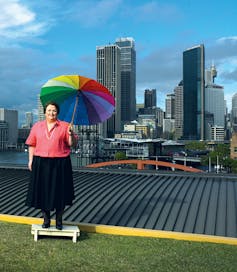
As the recipient of elocution lessons in my early education I was fascinated to learn about the dictionary’s engagement with spoken English pronunciation. Then there is the fraught question of the description of iconic foods. Should Lamingtons be dipped only in thin chocolate icing and coconut? Not necessarily. There are pink jelly lamingtons and, more recently, Tokyo lamingtons, which have apparently landed with flavours of matcha and black sesame.
Manser’s least favourite word is mansplain, Word of the year in 2014. She hoped it would be ephemeral … but it was recently just nudged out by “fake news” for word of the decade.
Read more: The horror and pleasure of misused words: from mispronunciation to malapropisms
A Cocktail
The dictionary was launched on 21 September 1981 as The Macquarie Dictionary because it would “add prestige to the dictionary to be associated with a university”, as the Oxford one was.
A special cocktail, the Macquarie, was created to mark the occasion: “Champagne, mango juice, Bitters, Grand Marnier, and a whole strawberry to float on the top”.
The reviews were glowing, except for one condescending and scathing review by the editor of the second edition of the Oxford English Dictionary. Robert Burchfield, a New Zealander, accused the committee of a “charming unawareness of the standards of reputable lexicography outside Australia”.
The new dictionary sold very well: 50,000 copies in its first year and another 50,000 copies over the next 18 months. Within ten years there were 23 spin off editions.
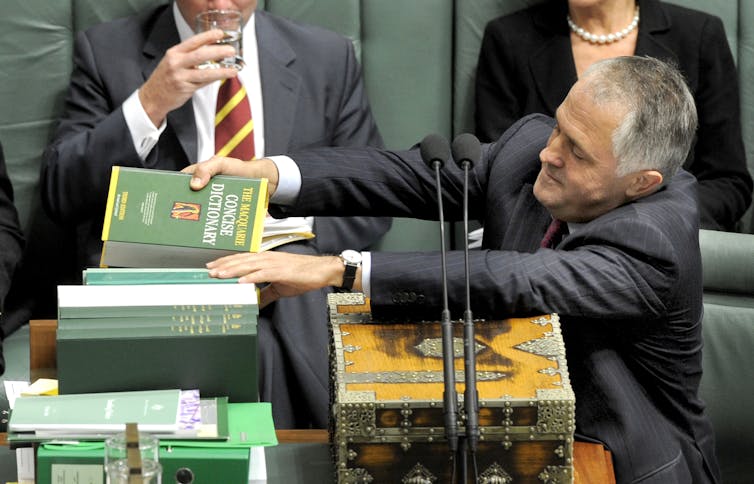
Currently, there are more than 150 spin offs. There was even a Macquarie Bedtime Story Book for Children. There are, of course, other dictionaries of Australian English, such as Oxford University Press’s Australian National Dictionary, a dictionary of Australianisms first published in 1988. There was also an Australian version of the Collins British English Dictionary, which the Macquarie staff regarded as essentially British.
In 1976, the Macquarie offices moved to a former market gardener’s cottage on the campus of Macquarie University. Called “the cottage”, it sounds reminiscent of James Murray’s scriptorium in Oxford, where he oversaw the creation of The Oxford English Dictionary. In 1980, Macquarie Library Pty Ltd became the publisher and has held the copyright ever since, though Macmillan bought the dictionary in 2001.
Macquarie embraced Indigenous Australian issues with Macquarie Aboriginal Words in 1994 and the Macquarie Atlas of Indigenous Australia in 2005. As Ernie Dingo put it at the time: “This book is a White step in the Black direction”.
Manser, who went on to become a high-level public servant, has done painstakingly detailed research for this book, with great support from former colleagues. It is well written in short chapters. I would have liked to see an index and a time-line, but I hesitate to quibble in the face of such a splendid historical document.![]()
Roslyn Petelin, Course coordinator, The University of Queensland
This article is republished from The Conversation under a Creative Commons license. Read the original article.
Cat in a spat: scrapping Dr Seuss books is not cancel culture
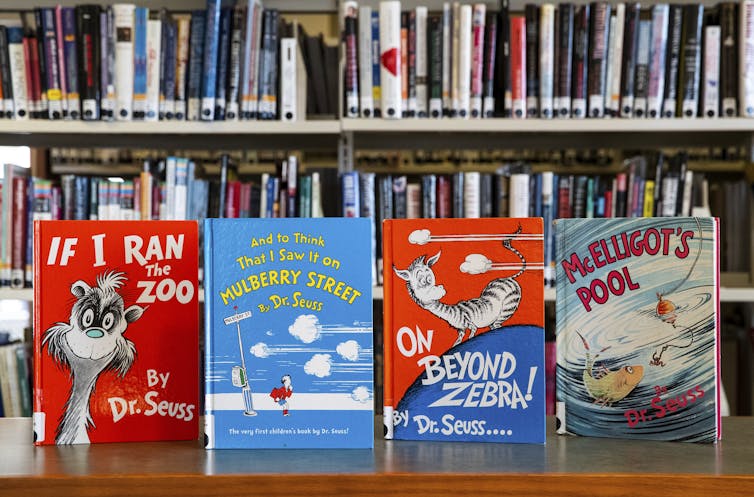
Let’s start by putting aside the bugbear that it is even possible to “cancel” children’s author Dr Seuss.
As Philip Bump wrote yesterday in The Washington Post,
No one is ‘cancelling’ Dr Seuss. The author, himself, is dead for one thing, which is about as cancelled as a person can get.
Laying aside a multimillion-dollar publishing business, tattered copies of Dr Seuss books clutter children’s bedrooms around the globe. Parents still grapple nightly with the tongue-twisters of Fox in Socks, Horton Hears a Who! or Hop on Pop, and try their best to keep their eyes open through a 20th reading of Green Eggs and Ham.
However, on Tuesday (what would have been Dr Seuss’s 117th birthday), the company that protects the late author’s legacy announced its plan to halt publishing and licensing six (out of more than 60) Dr Seuss books.
Few would know some of the discontinued titles, like McElligot’s Pool and The Cat’s Quizzer. However, many will recognise If I Ran the Zoo and And to Think That I Saw it on Mulberry Street, which have been criticised for racist caricatures and themes of cultural dominance and dehumanisation.
In If I Ran the Zoo, young Gerald McGrew builds a “Bad-Animal Catching Machine” to capture a turbaned Arab for his exhibit of “unusual beasts”.
“People will stare,” Gerald marvels, “And they’ll say, ‘What a sight!’”. Chinese “helpers” with “eyes at a slant” hunt exotic creatures in the mountains of Zomba-ma-Tant.
A reading recorded for Dr Seuss Day in 2019, removes the racist taunt. Instead of helpers who “wear their eyes at a slant”, the helpers “all wear such very cool pants”.
Nevertheless, pervasive racial imagery and subservient typecasting remain. That doesn’t mean Dr Seuss books should — or can — be scrapped altogether. Instead, these books present an opportunity to build awareness and teach young readers about history and context.
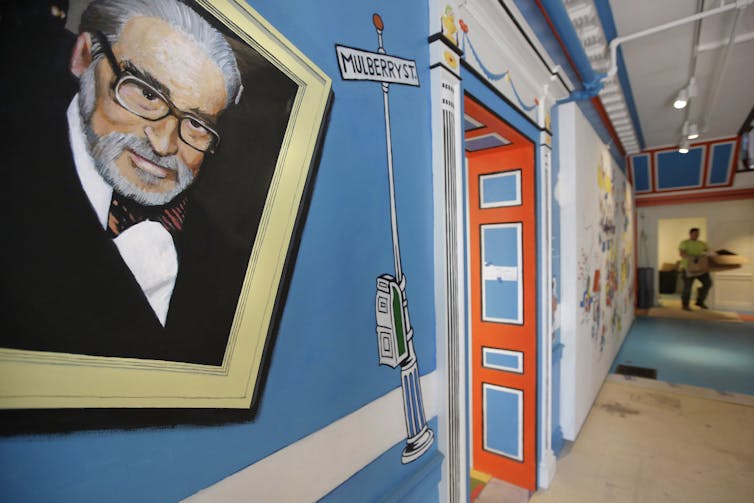
Read more: In Dr Seuss' children's books, a commitment to social justice that remains relevant today
Censorship In Children’s Titles
Children’s books are among those most often banned or censored. In this case, removing the Dr Seuss titles recognises that he was writing in a time and place when racial stereotyping was commonplace and frequently the focus of humour.
Elsewhere, controversy over golliwogs as racist caricatures was confrontingly played out in Enid Blyton’s Noddy stories. In her original telling of In the Dark, Dark Wood, Noddy is carjacked by three golliwogs who trap him, strip him naked, and leave him crying. “You bad, wicked golliwogs!” Noddy says. “How dare you steal my things!”
Similarly, in the first edition of Roald Dahl’s Charlie and the Chocolate Factory, the Oompa-Loompas are African pygmies who have been “rescued” by Willy Wonka and enslaved in his factory. When Charlie says, “But there must be people working there,” Grandpa Joe responds, “Not people, Charlie. Not ordinary people, anyway.”
Read more: Abused, neglected, abandoned — did Roald Dahl hate children as much as the witches did?
In his political cartoons, which appeared in a New York newspaper in the early 1940s, Dr Seuss ran the gamut of racist depictions, from African-American people as monkeys to Japanese characters with yellow faces and “rice paddy” hats.
In the now-suspended The Cat’s Quizzer, there is “a Japanese” depicted in conical hat and stereotypical dress. On Mulberry Street, a Chinese man with bright yellow skin wears geta shoes and carries a bowl of rice.
In early editions, the caption underneath reads “A Chinaman who eats with sticks”. In 1978, over 40 years after the book was first published, the character’s skin tone and braid were changed. The caption was changed from “Chinaman” to “Chinese man”.

If I Ran The Library … By Today’s Standards
Dr Seuss’s work contains racism and xenophobia, but should we judge him by today’s standards?
Children’s literature has always been subject to socio-historical shifts. It is a product of its time and the context in which it is created. Viewed through the changing lens of history, childhood itself is an unstable concept.
In other words, it is impossible to separate children’s literature from the ideological structure of our world, and from the particular historical moment in which it is produced.
While Dr Seuss’s best-loved characters — the Cat in the Hat, Horton the elephant, the Grinch — have earned their place in the canon, what we should be concerned about is the question of diversity in children’s literature.
We know from numerous studies that white children dominate children’s books, with talking animals and trains outnumbering the representations of First Nations, Asian, African and other minority groups.
Read more: Empathy starts early: 5 Australian picture books that celebrate diversity
No Quick Fixes
Although never perfect, other beloved children’s literature series have sought solutions to similar dilemmas.
Enid Blyton’s stories have been continuously revised since the 1990s. Noddy is now carjacked by goblins, and, in the Faraway Tree series, Dame Snap replaces Dame Slap, with Fanny and Dick getting a makeover as Frannie and Rick.
More recently, Richard Scarry’s books were updated to depict Daddies cooking and Mummies going to work, while the latest film adaptation of The Witches cast actor of colour Jahzir Bruno as the boy protagonist.
Not surprisingly, queer representation in young adult fiction is still problematic, with most queer stories authored by writers who do not identify as queer.
On one level, the decision to discontinue half a dozen Dr Seuss books because “they are hurtful and wrong” seems a simple gesture (and one with relatively small financial impact). Racism permeates the Dr Seuss catalogue, including The Cat in the Hat’s origins in blackface minstrel performances. Like Dr Seuss’s Yertle, it’s turtles all the way down.
Instead, finding meaningful ways to contextualise these historical aspects for young readers today might be a better focus, rather than withholding a few and letting more prominent titles slide by.
Kids and teens, like adults, need to see themselves in the books they read, and young white readers need to see other cultural groups as something more than illegal, or violent, or criminal.
As chidren’s literature expert Perry Nodelman notes: “Stories structure us as beings in the world”. In the same week a Lowy study found one in five Chinese Australians have been threatened or attacked, it could not be more important to invest in an inclusive future for our kids.
Kate Cantrell, Lecturer in Writing, Editing, and Publishing, University of Southern Queensland and Sharon Bickle, Lecturer in English Literature, QLD rep for Australian Women's and Gender Studies Association, University of Southern Queensland
This article is republished from The Conversation under a Creative Commons license. Read the original article.
This week's news has put sexual assault survivors at risk of 'secondary trauma'. Here's how it happens, and how to cope

The continuing media coverage of rape and sexual assault allegations faced by current and former political figures has put many sexual abuse survivors at risk of being traumatised all over again.
Widespread media attention features near-constant social media updates and extensive commentary. It means many sexual violence survivors are directly exposed to triggering and retraumatising content that resurfaces the pain of their own past experiences.
The impacts of sexual violence are often long-lasting and hard to overcome. How an individual survivor is affected can depend on a range of factors, including the level of trauma that a person has already experienced in their life, their relationship to the perpetrator, and whether the violence was prolonged or repeated.
Sexual violence can affect survivors in a many different ways: emotional, physical, psychological and social. The list of common impacts is vast, and includes fear, shock, grief, shame, confusion, denial, post-traumatic stress disorder (PTSD), insomnia, nightmares and other sleep disturbances, intrusive thoughts and flashbacks, nausea, loss of appetite and gastrointestinal issues, reduced libido and/or difficulty engaging in consensual sexual activity, anxiety, depression, suicidal thoughts, sexually transmitted infections or blood-borne viruses, unwanted pregnancy, social withdrawal, and difficulty trusting others.
All sexual violence survivors will respond in different ways. They may experience some, none or all of the impacts described here. These effects may ease over time, especially with appropriate support. Healing and recovery from sexual violence is certainly possible.
As an aside, we should note here that it is simplistic to view sexual violence purely through a trauma lens. This is not to deny the very real harms experienced by survivors, but rather to point out that framing sexual trauma as a series of symptoms requiring treatment puts the onus on individual survivors to “fix the problem”, and allows society to avoid grappling with the underlying causes of sexual violence.
Read more: Sexual assault: what can you do if you don't want to make a formal report to police?
What Is Retraumatisation?
Retraumatisation (also known as “secondary trauma” or “secondary victimisation”) is a common experience for many survivors. This can happen when a survivor is exposed to a “trigger” that reminds them of past sexual violence, causing the body to go into a fight, flight or freeze response. In other words, the body responds as if there is a direct and immediate threat.
Survivors can be triggered in many ways, and by things specific to their individual experiences or by more general exposure to discussions of sexual violence. This can occur at different stages, depending on each survivor’s individual recovery journey.

The Role Of The Media And Authority Figures
Saturation media coverage of stories involving sexual violence can also trigger retraumatisation. This is particularly the case when people in power, including senior members of the government, publicly deny, downplay or refuse to act on allegations of sexual violence.
The rapid dissemination of information through media platforms re-exposes survivors to a stream of violence. It also reinforces how the structures of society sustain men’s power and privilege over women.
There are guidelines for news media outlets reporting on violence against women. These include respecting the dignity of survivors and their families, and providing details of appropriate support services at the end of a story.
Media outlets need to be mindful that many survivors will be exposed to their content. Respect and dignity should be extended to these survivors as well as those featured directly in the story.
Comments that seek to apportion blame to survivors, or which suggest they may be lying or exaggerating — evident in the media coverage of the historical rape allegations against federal Attorney-General Christian Porter, which he has denied — do not just discredit one survivor, but all who have been treated similarly.
Read more: Complex trauma: how abuse and neglect can have life-long effects
Retraumatisation can also be exacerbated by false myths and stereotypes, such as Australian Defence Force chief Angus Campbell’s advice, widely criticised as victim-blaming, that female cadets should avoid alcohol, going out alone and being “attractive”.
All of this serves to challenge the credibility and truthfulness of survivors, and intensifies the barriers that women encounter in having their stories heard in male-dominated institutions. This might remind survivors of their own experiences of being blamed or disbelieved, and thus minimise and silence their voices.
How To Guard Against Retraumatisation
Self-care strategies can help individual survivors manage their trauma during times of heightened media reporting or exposure to other triggers.
There are comprehensive guides available for survivors, and those who support them, outlining effective strategies for coping with trauma.

Some common suggestions for self-care include:
limiting exposure to media content (and other triggers) on sexual violence
meditation, breathing and grounding exercises
speaking with a trusted friend or professional
writing about what you are feeling, such as in a personal diary or journal
taking care of your general health and well-being, such as through exercise and healthy eating
engaging in enjoyable and calming activities, such as cooking, being outside, reading, or spending time with a pet.
Read more: Speaking out about sexual violence on social media may not challenge gendered power relations
As renowned Black Feminist Audre Lorde said:
Caring for myself is not self-indulgence. It is self-preservation, and that is an act of political warfare.
Self-care is an act of resistance in a world that is all too often hostile towards sexual abuse survivors. By engaging in self-care, we can continue to do the important (but difficult) political work of fighting for change to the underlying structural and cultural causes of sexual violence.
If this article has raised issues for you, please contact 1800 RESPECT through their toll-free national counselling hotline or online. You can also find support through Lifeline on 13 11 14.![]()
Mary Iliadis, Senior Lecturer in Criminology, Deakin University; Bianca Fileborn, Senior Lecturer in Criminology, The University of Melbourne, and Rachel Loney-Howes, Lecturer in Criminology, University of Wollongong
This article is republished from The Conversation under a Creative Commons license. Read the original article.
I asked hundreds of people about their biggest life decisions. Here's what I learned

You make decisions all the time. Most are small. However, some are really big: they have ramifications for years or even decades. In your final moments, you might well think back on these decisions — and some you may regret.
Part of what makes big decisions so significant is how rare they are. You don’t get an opportunity to learn from your mistakes. If you want to make big decisions you won’t regret, it’s important you learn from others who have been there before.
There is a good deal of existing research into what people regret in their lives. In my current project, I decided to approach the problem from the other end and ask people about their life’s biggest decisions.
What Are Life’s Biggest Decisions?
I have spent most of my career studying what you might call small decisions: what product to buy, which portfolio to invest in, and who to hire. But none of this research was very helpful when, a few years ago, I found myself having to make some big life decisions.
To better understand what life’s biggest decisions are, I recruited 657 Americans aged between 20 and 80 years old to tell me about the ten biggest decisions in their lives so far.
Each decision was classified into one of nine categories and 58 subcategories. At the end of the survey, respondents ranked the ten decisions from biggest to smallest. You can take the survey yourself here. (If you do, your answers may help develop my research further.)
The following chart shows each of the 58 decision subcategories in terms of how often it was mentioned (along the horizontal axis) and how big the decision was considered in retrospect (along the vertical axis).
In the upper right of the chart we see decisions that are both very significant and very common. Getting married and having a child stand out clearly here.
Other fairly common big life decisions include starting a new job and pursuing a degree. Less common, but among the highest ranked life decisions, include ending a life – such as that of an unborn child or a dying parent – and engaging in self-harm.
Of course, the results depend on who you ask. Men in their 70s have different answers than women in their 30s. To explore this data more deeply, I’ve built a tool that allows you to filter these results down to specific types of respondents.
Read more: How to help take control of your brain and make better decisions
What Are Life’s Biggest Regrets?
Much can also be learned about how to make good life decisions by asking people what their biggest regrets are. Regret is a negative emotion you feel when reflecting on past decisions and wishing you had done something differently.
In 2012, Australian caregiver Bronnie Ware wrote a book about her experiences in palliative care. There were five regrets that dying people told her about most often:
- I wish I’d had the courage to live a life true to myself, not the life others expected of me
- I wish I hadn’t worked so hard
- I wish I’d had the courage to express my feelings
- I wish I’d stayed in touch with my friends
- I wish I had let myself be happier.
This anecdotal evidence has received support from more rigorous academic research. For example, a 2011 study asked a nationally representative sample of 270 Americans to describe one significant life regret. The six most commonly reported regrets involved romance (19.3%), family (16.9%), education (14.0%), career (13.8%), finance (9.9%), and parenting (9.0%).
Although lost loves and unfulfilling relationships were the most common regrets, there was an interesting gender difference. For women, regrets about love (romance/family) were more common than regrets about work (career/education), while the reverse was true for men.
What Causes Regret?
Several factors increase the chances you will feel regret.
In the long run it is inaction — deciding not to pursue something — that generates more regret. This is particularly true for males, especially when it comes to romantic relationships. If only I had asked her out, we might now be happily married.
Poor decisions produce greater regret when it is harder to justify those decisions in retrospect. I really value my friends and family so why did I leave them all behind to take up that overseas job?
Given that we are social beings, poor decisions in domains relevant to our sense of social belonging — such as romantic and family contexts — are more often regretted. Why did I break up my family by having a fling?
Regrets tend to be strongest for lost opportunities: that is, when undesirable outcomes that could have been prevented in the past can no longer be affected. I could have had a better relationship with my daughter if I had been there more often when she was growing up.
The most enduring regrets in life result from decisions that move you further from the ideal person that you want to be. I wanted to be a role model but I couldn’t put the wine bottle down.
Making Big Life Decisions Without Regrets
These findings provide valuable lessons for those with big life decisions ahead, which is nearly everyone. You’re likely to have to keep making big decisions over the whole course of your life.
The most important decisions in life relate to family and friends. Spend the time getting these decisions right and then don’t let other distractions — particularly those at work — undermine these relationships.
Seize opportunities. You can apologise or change course later but you can’t time travel. Your education and experience can never be lost.
Read more: Running the risk: why experience matters when making decisions
Avoid making decisions that violate your personal values and move you away from your aspirational self. If you have good justifications for a decision now, no matter what happens, you’ll at least not regret it later.
I continue to ask people to tell me about their biggest life decisions. It’s a great way to learn about someone. Once I have collected enough stories, I hope to write a book so that we can all learn from the collective wisdom of those who have been there before.![]()
Adrian R. Camilleri, Senior Lecturer in Marketing, University of Technology Sydney
This article is republished from The Conversation under a Creative Commons license. Read the original article.
Women are (rightly) angry. Now they need a plan
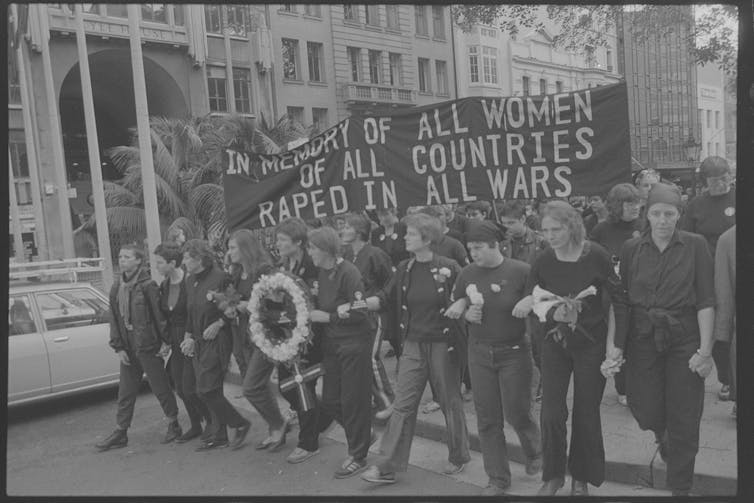
Australian women have been most effective, politically, when they have harnessed their collective rage and turned it into action. They need to do it again now.
Like many Australians, I was delighted when activist Grace Tame was named the 2021 Australian of the Year. Tame is a powerful advocate for survivors of child sexual abuse, drawing on her own experience of being groomed and abused by a paedophile when she was just 15.
Tame’s #LetHerSpeak campaign, which she created with journalist Nina Funnell and Marque lawyers, has overhauled gag laws that silenced victims of sexual abuse. Tame turned her anger into action and made change.
Accepting her award, Tame declared she was:
using my voice, amongst a growing chorus of voices that will not be silenced. Let’s make some noise, Australia.
Tame’s bravery inspired former political staffer Brittany Higgins to make some noise of her own. The revelation of her alleged sexual assault in a ministerial office and subsequent treatment by her employers has appalled observers.

Most recently, it has been alleged a man who is now a federal cabinet minister (revealed on Wednesday to be Attorney-General Christian Porter) raped a 16-year-old girl in 1988. The response that best reveals the prevailing political culture was when Prime Minister Scott Morrison, who was sent a letter outlining the allegation, airily admitted he hadn’t read it. He added that because the minister has “vigorously denied” the allegation, there were “no matters” that required his attention.
In a defiant press conference on Wednesday, Porter denied the allegations. He refused to call for an inquiry or stand aside from his role, saying
if I stand down from my position as Attorney-General because of an allegation about something that simply did not happen, then any person in Australia can lose their career, their job, their life’s work based on nothing more than an accusation that appears in print.
Read more: View from The Hill: No satisfactory way to resolve historical rape allegation against minister
To say Australian women are angry about the events of the past few weeks is an understatement. In a powerhouse address to the National Press Club on Wednesday, Tame stressed the importance of turning that rage into action:
One voice, your voice, and our collective voices can make a difference. We are on the precipice of a revolution whose call to action needs to be heard loud and clear.
Australian women’s collective rage is not without precedent.
The women’s movement of the 1970s was born, in part, out of anger. Women were angry that they couldn’t always control their fertility, or parent their own children. They were angry they were paid less than men for the same jobs. They were angry childcare was hard to access. And, frankly, they were angry at men. Activist Kate Jennings articulated this rage in a speech at an anti-war rally in 1970:
There are a lot of people who feel strongly about the Vietnam war. But how many of you, who can see so clearly the suffering and misery in Vietnam […] how many of you would get off your fat piggy asses and protest against the killing and victimisation of women in your own country.
The women’s movement drew strength from talking. Sharing their experiences in consciousness-raising groups, they realised their problems were not personal but structural, demanding structural solutions.
It didn’t take long for the movement to articulate its core demands: free abortion and childcare, equal pay, equal job opportunities, and an end to media sexism. While they did not limit themselves to activism on these issues, they focused and shaped their work.
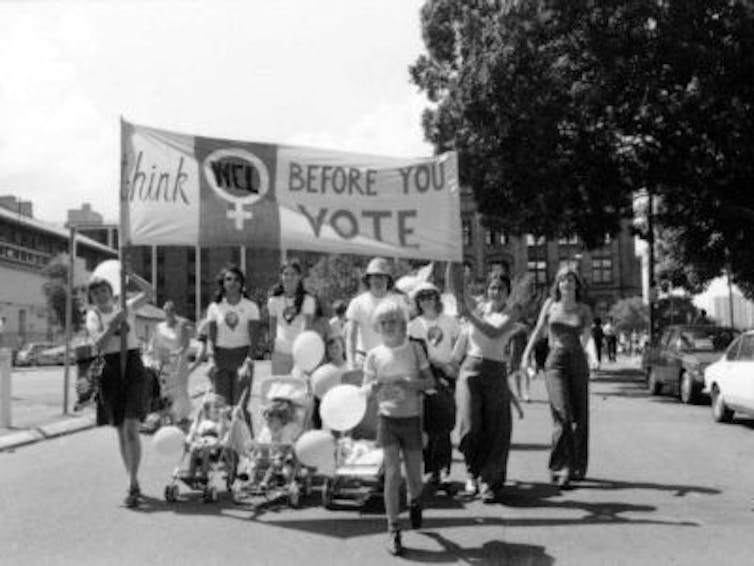
By early 1972, the Women’s Electoral Lobby, the movement’s moderate wing, ingeniously placed women’s issues on the political agenda by inaugurating their candidate survey. WEL members in every Australian electorate interviewed all political candidates. Not only did the survey train women in political lobbying, it laid bare the views of the (mostly) male candidates on women’s issues. It also gave women a political voice.
When the Whitlam government was elected, in part because of WEL’s advocacy, the women’s movement used their new leverage to achieve reforms on equal pay and contraception, and later made important gains in childcare, the funding of women’s refuges, and family law.
Whitlam appointed to his staff a women’s affairs adviser, Elizabeth Reid, who worked to make government more responsive to women’s needs. She, and subsequent feminists working inside the state, could not have exerted the influence they did without an active women’s movement agitating for change.
Surprisingly, violence against women was not initially a primary focus of the women’s movement. It emerged through consciousness-raising and so too did feminist methods of addressing it: rape crisis centres and women’s refuges.
Activism around sexual violence moved to centre stage: women marched against male sexual violence in Reclaim the Night Marches from 1978, and in the early 1980s feminists marched on Anzac Day “in memory of all women raped in all wars”.
Today, feminists are still campaigning against male violence against women. Over the past few years, we have mourned hundreds of women who have died due to family violence. We have witnessed royal commissions into family violence and into institutional responses to child sexual abuse. We have admired the courage of survivors like Rosie Batty. We gasped as serial sexual predators were exposed under the banner of #MeToo. But too little has actually changed.
Women are angry and they are tired. Tired of mansplainers and misogynists, and those who bleat #NotAllMen instead of asking #WhySoManyMen? Tired of women who have benefited from feminism yet refuse the label of “feminist”. And tired of having to once again fight the battles that women in the 1970s and 1980s thought they had won.
Rage is politically potent, and useful. You only need to look at the ways Donald Trump fuelled his army of supporters to understand that. But if the lessons of second wave feminism are any guide, women not only need to get angry, they need to get organised.
The women’s movement was energised by its collective nature and common goals. Today’s female rage is fierce, but it is not yet harnessed to a clear agenda for action. Women need to create this agenda together, and then work out how best to achieve it.
We know so much more about women’s oppression today than women did in the 1970s, especially the ways in which different types of discrimination overlap and combine. We are perhaps more sceptical of the ability of institutions to effect change. And we are painfully aware that neo-liberalism has shrunk the state and limited the possibilities for activism.
But our scepticism, and our lack of attention, has extracted a cost. In the 1980s, government policy was routinely audited for its impact on women. But in the 1990s, feminist policy “machinery” was steadily dismantled.
Today’s Office for Women has a tiny staff and a low profile. It was not consulted on any of the major COVID-related policy shifts, like JobKeeper or changes to superannuation.
If our parliament is full of men who ignore, belittle and disrespect women, and women who enable these men, it is because we, the voters, have put them there. But we can also vote them out.
A women’s candidate survey, ready to roll out at the next federal election, is just one strategy from the women’s movement of the 1970s that might be worth reviving today. Women need to maintain their rage, but they need to turn it into political action, too.![]()
Michelle Arrow, Professor of History, Macquarie University
This article is republished from The Conversation under a Creative Commons license. Read the original article.
Friday essay: hidden in plain sight — Australian queer men and women before gay liberation
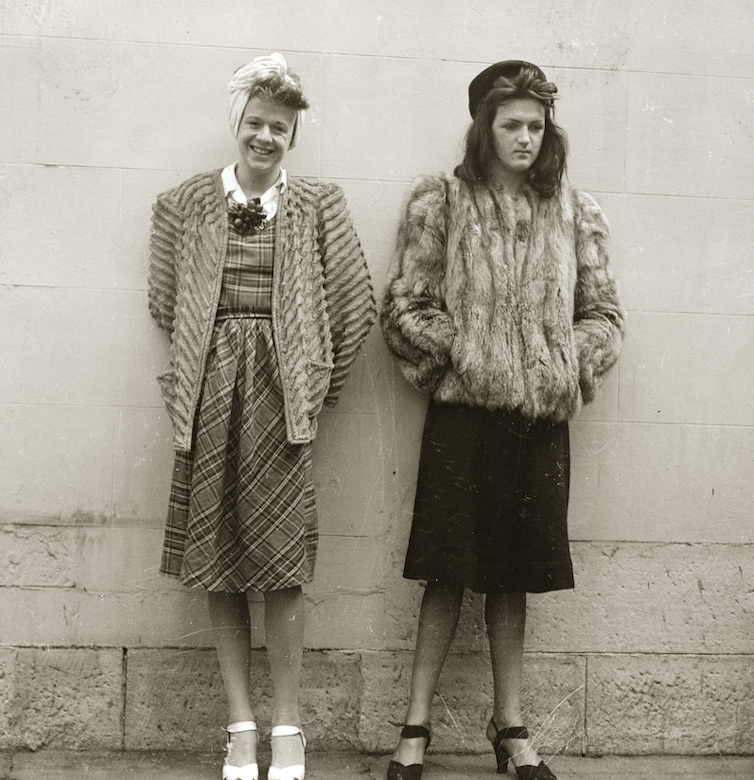
It’s Sydney Lesbian and Gay Mardi Gras festival time. LGBTQI people are enjoying what some call “gay or lesbian Christmas”. It’s not quite the same in the era of COVID, but a contained version of the famous street parade will be beamed into living rooms on Saturday.
The public face of Mardi Gras, which began in 1978 with a protest parade, is remarkable in a nation that has been deeply prejudiced toward gay and lesbian people. Part of the power of Mardi Gras for older generations was that it removed queer sexualities from the “secret” confines of semi-legal bar and club locations and private parties to the public street. Being on the front page of the newspaper no longer meant you might be going to jail.
Still, Australian queer people did not suddenly emerge in the 1960s and 70s, the years of gay liberation. Where were they before and how can they be identified? Because male homosexuality was criminalised, much can be discovered from the press and crime reports. Letters, memoirs, diaries, art, photographs and the memories of gay, lesbian, and transgender people also provide clues.
From The Bush To The Boudoir
The Australian colonies were marked by a shortage of women and the dominance of homosocial environments. Francis Forbes, former Chief Justice in the colony, when questioned at the so-called Molesworth inquiry into convict transportation in the 1830s, had to admit Sydney “had been called a Sodom”. Sodomy in the Tasmanian coal mines was also the subject of a British government inquiry.
Read more: Debauchery on the fatal shore: the sex lives of Australia's convicts

There is evidence of what historian Robert Aldrich calls “conjoined” same-sex male couples in 19th-century Australia, including the famous bushranger Captain Moonlite (Andrew George Scott). As he waited to be hanged in Darlinghurst Jail in 1880, he wrote of his fellow ranger James Nesbitt: “We were one in heart and soul, he died in my arms and I long to join him …”
Homosexuality was often associated with foreigners and cosmopolitan affectation. George Francis Alexander Seymour, future Marquess of Hertford, lived in Queensland briefly around 1895. Likely inspired by international dance sensation Loie Fuller, he shocked locals by wearing sequins and a veil for “skirt dancing” performances in front of “kanakas” (South Pacific men coerced to work in the canefields).

William Lygon, later 7th Earl Beauchamp — the governor of New South Wales for a short time from 1899 — travelled with a retinue of good-looking footmen and lavished praise on the natural grace of Australian athletes and lifesavers.
He was disgraced as a homosexual by his brother-in-law in 1931 and became the subject of the famous statement by King George V: “I thought people like that always shot themselves.”
He subsequently inspired the famous novel by Evelyn Waugh, Brideshead Revisited.
Interwar Life: Fashion And Fancy
In the inter-war years, there was a marked queer presence in the worlds of Australian art, design, entertainment and retail. This was the period of art deco and Australian “genteel modernism”. Art Deco (called moderne or futurist style at the time) was inseparable from fashion and fantasy and frequently derided as an effeminate style — it has even been called the “International Style in drag”.
Cultural nationalist and the director of Melbourne’s National Gallery of Victoria from 1936–1941, J. S. MacDonald, claimed this type of art and design had been promoted by women and “pansies”, meaning homosexual men.
Smith’s Weekly, The Bulletin and the New Triad mocked the “wasp waists” and “goo goo boys” who worked in retail and enjoyed theatre.
Some queers worked as entertainers or drag queens. In NSW this was a summary offence of indecency (still used by police in the 1970s). Drag queens and cross-dressers had to wear male underwear or else risk arrest.
Cross-dressing was also associated at the time with street prostitution. A police mugshot from 1942 shows two cross-dressed male sex workers wearing women’s coats, one with huge rabbit-fur-trimmed sleeves, as well as a turban and makeup. The men still look very male and defiant, suggesting a part of their sexual charge came from precisely this lack of ambiguity; it was clear they were not women.
Clearly annoyed, one of the pair remarked to the tabloid Truth:
We were bundled out of the police cell, and snapped immediately. My friend and I had no chance to fix our hair or arrange our make-up. We were half asleep and my turban was on the wrong side.
Gay male artists and commercial designers in Sydney lived their queer lives discreetly on moderate incomes. The flower painter Adrian Feint, who lived in Elizabeth Bay, produced many bookplates depicting languid young men with a queer mood.
His disguised self-portrait etching of a dandy entitled The Collector (1925) carried the suggestion of eye and lip makeup, depicting archaic Edwardian dress, a top hat, a cane, plaid suit and cape.
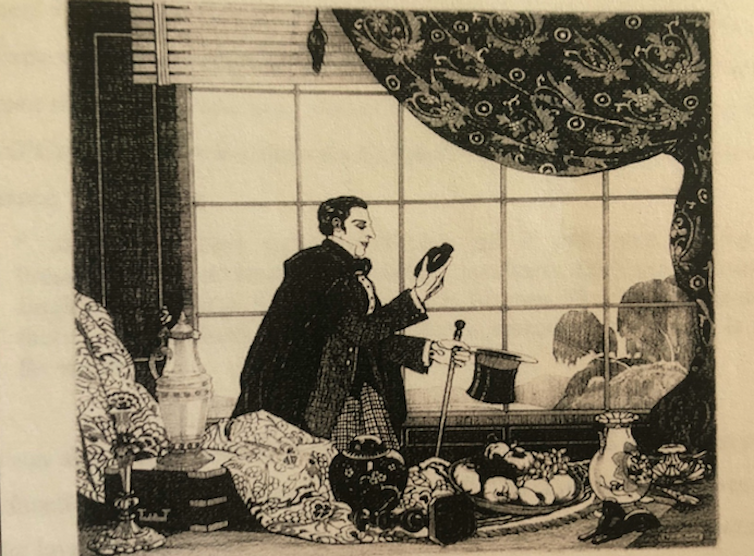
His remarkable cover for the upmarket magazine The Home (July 1929) featured a “Rum Corps” officer whom Feint transformed into a languid, heavily made-up beauty, recalling both the Ballets Russes, who were touring Australia, and the famous queer movie star Rudolph Valentino.

The culture of hedonism, promiscuity, heavy drinking, pub life and mixed-class socialising that characterised life in the colonies pervaded Australian gay life until recently. Pubs and clubs were crude, brash and fun. Bohemian ideas were also important. All sorts of behaviour were excused at the Artists’ Balls, which were held in Sydney from the 1920s until 1964. Gay balls were often accompanied by a blind orchestra (not unusual at the time due to war injuries) so the goings on could not be observed.
A 1925 sketch by Mandi McCrae of one such ball in The Home, September 1925, delineates a transsexual, two men with arms akimbo, and several gender-indeterminate figures. The press loved running stories of cross-dressed men whose dresses were so large they had to arrive in delivery vans. One told of a live bird in a cage worn as a Marie Antoinette-style headdress.

Urban Subcultures
In the interwar years, a queer urban subculture coalesced for the first time in Sydney around art deco sites and buildings: city hotels, the Archibald Fountain by night for cruising, and the new high-density housing of Kings Cross, Potts Point, Darlinghurst and East Sydney.
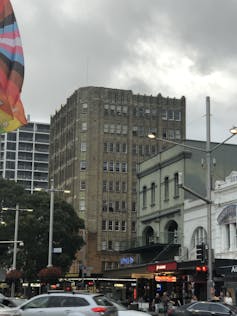
Boonara, a middle-class block of flats in Woollahra, built by a widow and a “spinster” in 1918, was let only to women and one male artist, William Lister Lister. Restaurants catering to a homosexual clientele included Madame Pura’s Latin Cafe in the now demolished Royal Arcade.
Many Australian artists and writers became expatriate in this period to escape wowserism, censorship and the anti-art tenor of Australian society. They included Nobel winning novelist Patrick White, who conducted one of the great same-sex love affairs with Manoly Lascaris from 1941 until White’s death in 1990. White spent his youth in England, writing from a desk designed by the queer interior decorator and later famed artist Francis Bacon.
Back home in the 1940s, a group of queer artists, dancers and designers lived in Merioola, a run-down mansion in Edgecliff known then as “Buggery Barn”. They included artists Donald Friend and Justin O'Brien, acclaimed costume designer Loudon Sainthill and his partner, the theatre critic and gallery director Harry Tatlock Miller. The landlady was the butch looking Chica Lowe. She provided a set-like stage on which residents performed their counter-cultural lives.
Wealthier queers conducted their lives at private dinners, where ironic cross-dressing provided entertainment. They used camp girls’ names such as Connie, Simone, Zena and Maude. Cross-dressing was a popular diversion for groups of gay friends, who hired country and beach houses for private parties around the country.
A queer sensibility can tell us as much as a queer identification at a time when non-binary sexuality could lead to financial ruin for both women and men.
Australia’s first interior decorator, Margaret Jaye, was almost certainly a lesbian, and one of the nation’s first industrial designers, Molly Grey, was photographed in 1935 with a Sapphic hairstyle and severe dress of oversize mannish collar, bow tie, and cuffs. Interior design, being connected to domesticity and the home, was one of the few professions where married women and gay men could work undisturbed.
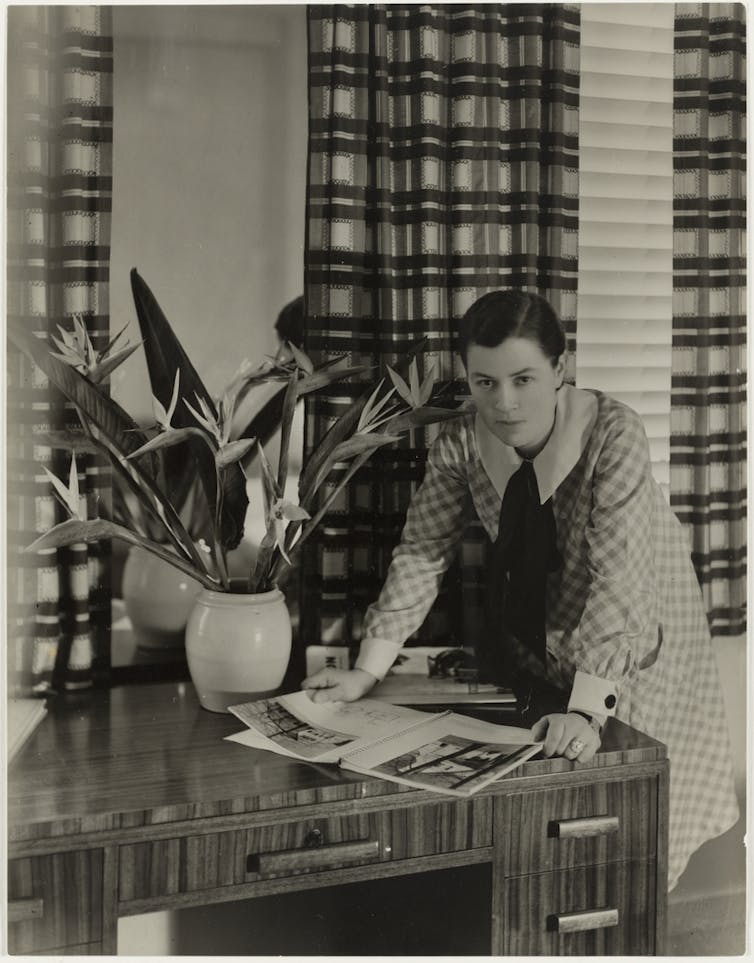
The author Eve Langley (who changed her name to Oscar Wilde by deed poll in 1954) and her sister June cross-dressed in country Gippsland when young, where they were known as the “trouser women”. Eve continued to wear mannish attire in her old age in the Blue Mountains.
Sydney: From Port To Gay City
World War II was a watershed for Australian queer identity. Historians such as Garry Wotherspoon have noted how port cities such as Sydney and San Francisco threw large numbers of young men together, away from their families, in new types of housing such as bachelor flats. These cities were the ones that later developed the first large homosexual communities, often in neglected inner-city areas, in the 1960s and 1970s.
World War II also threw into the mix female impersonators who performed for the forces. The Australian armed forces had 20 concert party groups and gave 12,000 shows in Australia, the Middle East and the Pacific. The Kiwi (New Zealand) Concert Party wore drag made from muslin, dishcloths and silver paper as well as real fashions. They continued to perform for nine years after the war ended.

Academic Chris Brickell has made the important point that although many of the performers pretended to be co-opted for their roles, most were more than willing. Their drag acts “drew from, and subsequently inspired, gay civilians’ own drag performances”.

Read more: 'I didn't know that world existed': how lesbian women found a life in the armed forces
1950s Australia saw an increasing witch hunt around queer sexuality, fuelled by the churches, the demands of the police and Cold War anxiety about Communist inflitration. The tabloid press continued earlier sensational reporting: (“Degenerate Dressed up as a Doll … St Kilda Sensation—Man-Woman Masquerader”) with headlines such as “Police War on this Nest of Perverts”. Even the famed 1950s American muscle culture magazines were banned under strict censorship here.
Lesbian butch and femme subcultures had emerged by this time, in which one partner was styled in a hyper-feminine way, the other donning trousers and shorter hair. Writer Gavin Harris notes that Lillian Armfield, NSW’s first policewoman, claimed department stores blacklisted lesbians who were trying to “recruit” from among their “innocent” customers.
Blak And Queer
Queer Indigenous people have been prominent for several decades in art forms such as dance, where they contribute to new formulations of ideas of “blak beauty,” blak being a term consciously deployed by contemporary queer visual artists, including Brook Andrew.
The biography and survival story of Indigenous dancer and choreographer Noel Tovey (born 1934) charts a trajectory from abandonment and abuse to a life as a successful actor and dancer in London in the 1960s. Here Tovey mixed with gay circles and gained resilience and self-esteem.
Tovey described in his autobiography Little Black Bastard the Artist’s Ball in Melbourne as “the only night of the year when the police turned a blind eye to the number of drag queens looking for a cab”. Characters who might turn up there included “Puss in Boots” or a reclusive “Greta Garbo”: the latter refused to talk to anyone all night. Tovey was later involved with the spectacular Awakenings opening dance sequence at the 2000 Sydney Olympic Games
From Blending To Assertion
William Yang has been photographing queer Brisbane and Sydney since 1969. In that year, he photographed David Williams, or Beatrice, who performed in drag at the Purple Onion Club, Sydney (opened 1962), singing “The Sound of Mucus” and “A Streetcar Named Beatrice”. The clothes matched the crude titles: synthetic crinolines and huge feather hats.
Yang also photographed gays who wished to blend, whose clothes appear very ordinary, with a slight edge that can only be read through the focus on casual softness.
Calls for an end to the criminalisation of homosexuality in Australia appeared by the early 1960s, following the UK Wolfenden Committee report of 1957, which recommended decriminalisation. The concept of “gay liberation” spread from activism in Sydney with the formation of CAMP Inc group in 1970, and at the University of Melbourne in 1971, into the wider public domain.
Sydney’s notorious street protest, the first Sydney Gay Mardi Gras (later Gay and Lesbian), took place in 1978. The first march was notorious for the arrests and the violence directed at the participants at the old Darlinghurst Police Station (now closed) and created a catalyst for further activism. Many more bars, clubs and community organisations opened and provided relatively safe spaces for LGBTQI to gather.
Read more: Friday essay: on the Sydney Mardi Gras march of 1978
In recent decades we have witnessed a massive shift from situational, private and criminalised sexualities to open, liberationist and perhaps also commodified ones.
But there are gays and lesbians everywhere if you look carefully in the past, even if not all were as striking or spectacular as the ones outlined here.![]()
Peter McNeil, Distinguished Professor of Design History, UTS, University of Technology Sydney
This article is republished from The Conversation under a Creative Commons license. Read the original article.
CSIRO Moves Towards Open Access For National Benefit

Neanderthals Had The Capacity To Perceive And Produce Human Speech
Stark Warning: Combating Ecosystem Collapse From The Tropics To The Antarctic
- Ecosystem collapse (defined as potentially irreversible change to ecosystem structure, composition and function) is occurring now in 19 case studies. This conclusion is supported by empirical evidence, rather than modelled predictions.
- No ecosystems have collapsed across their entire range, but for all case studies there is evidence of local collapse.
- The 19 ecosystems include the Great Barrier Reef, mangroves in the Gulf of Carpentaria, the Mediterranean forests and woodlands, the arid zone of central Australia, Shark Bay seagrass beds in Western Australia, Great Southern Reef kelp forests, Gondwanan conifer forests of Tasmania, Mountain Ash forest in Victoria, and moss beds of East Antarctica.
- Drivers of ecosystem collapse are pressures from global climate change and regional human impacts, categorised as chronic 'presses' (eg. changes in temperature and precipitation, land clearing) or acute 'pulses' (eg. heatwaves, storms, fires and pollution after storms).
- Awareness of the importance of the ecosystem and the need for its protection;
- Anticipation of the risks from current and future pressures
- Action on reducing the pressures to avoid or lessen their impacts
Protecting pencil pines from fire in the Southwest Tasmanian Wilderness World Heritage Area: by mapping vegetation values against fire sensitivity (to identify fire-prone Gondwanan conifer communities), maintaining an area specific awareness of the shifting causation of bushfires (increasing frequency of dry lightning strikes), and developing new action strategies to lessen the pressure of unregulated fire (installing sprinkler systems), conservation managers established and used Awareness and Anticipation to formulate positive Action.The scientific team concluded that in the near future, even apparently resilient ecosystems are likely to suffer collapse as the intensity and frequency of pressures increase."Anticipating and preparing for future change is necessary for most ecosystems, unless we are willing to accept a high risk of loss," Dr Bergstrom said."Protecting the iconic ecosystems we have highlighted is not just for the animals and plants that live there. Our economic livelihoods, and therefore ultimately our survival, are intimately connected to the natural world."
Half A Trillion Corals: Coral Count Prompts Rethink Of Extinction Risks
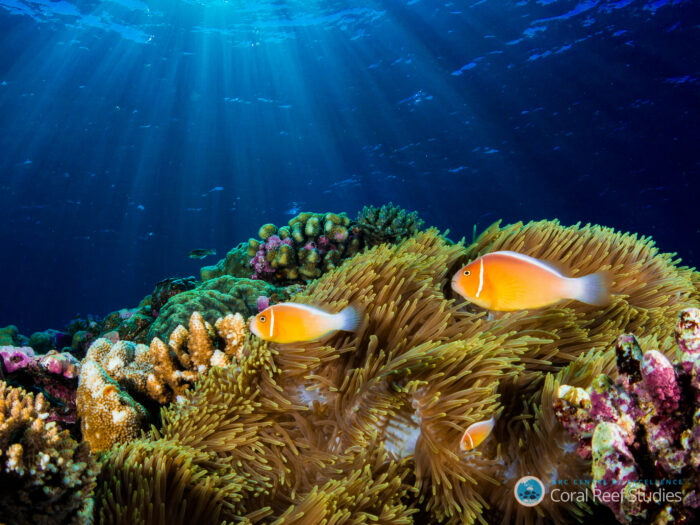
Hotter, Drier, CRISPR: Editing For Climate Change
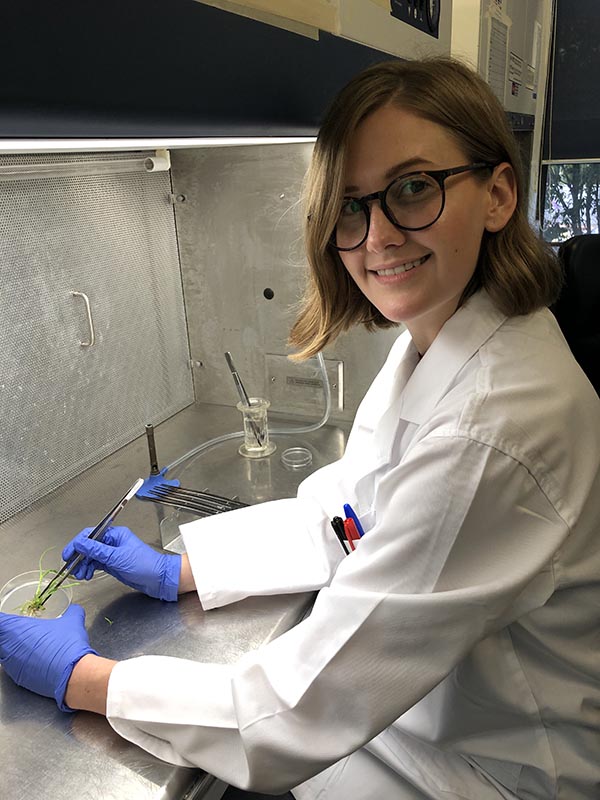
Retroviruses Are Re-Writing The Koala Genome And Causing Cancer
Coffee For The Birds: Connecting Bird-Watchers With Shade-Grown Coffee
Detective Work Inside Plant Cells Finds A Key Piece Of The C4 Photosynthesis Puzzle
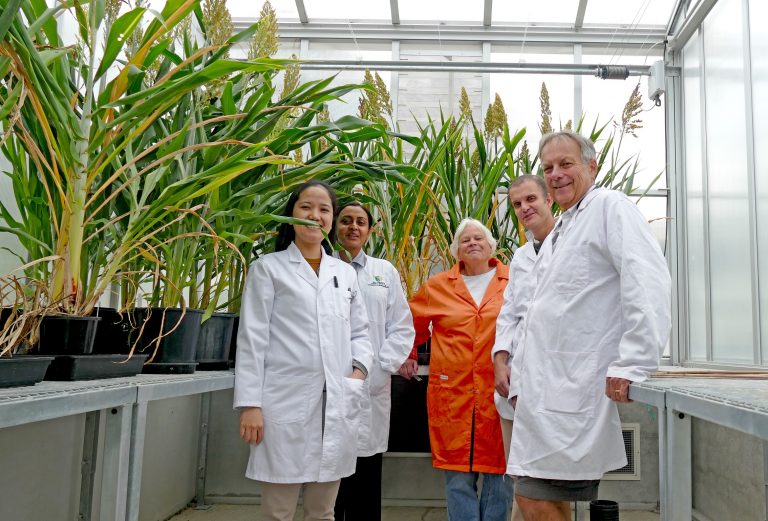
Largest Carbon Stores Found In Australian World Heritage Sites
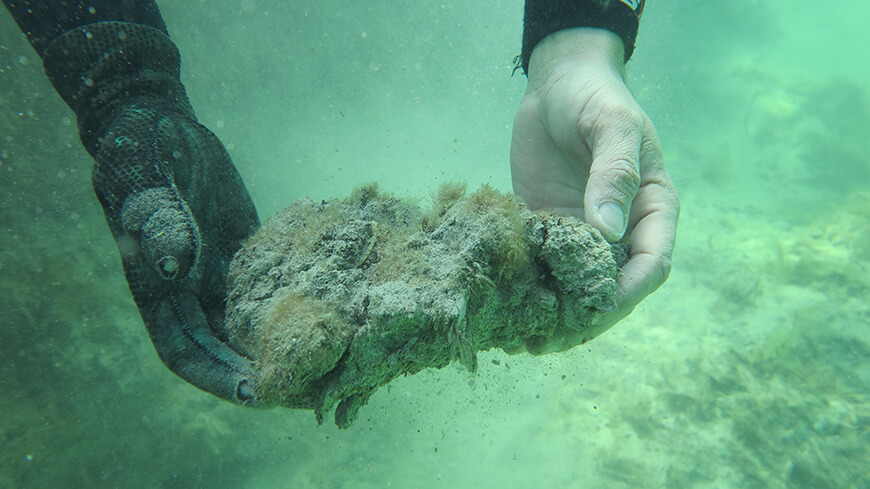
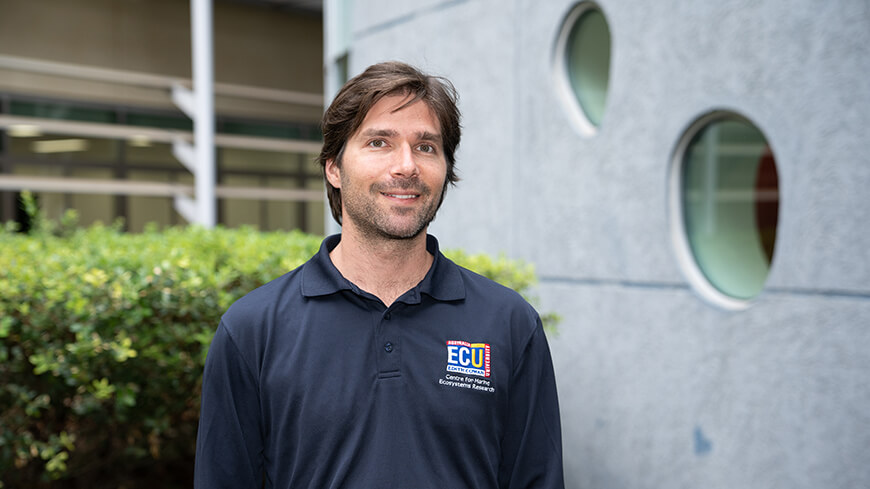
Disclaimer: These articles are not intended to provide medical advice, diagnosis or treatment. Views expressed here do not necessarily reflect those of Pittwater Online News or its staff.